
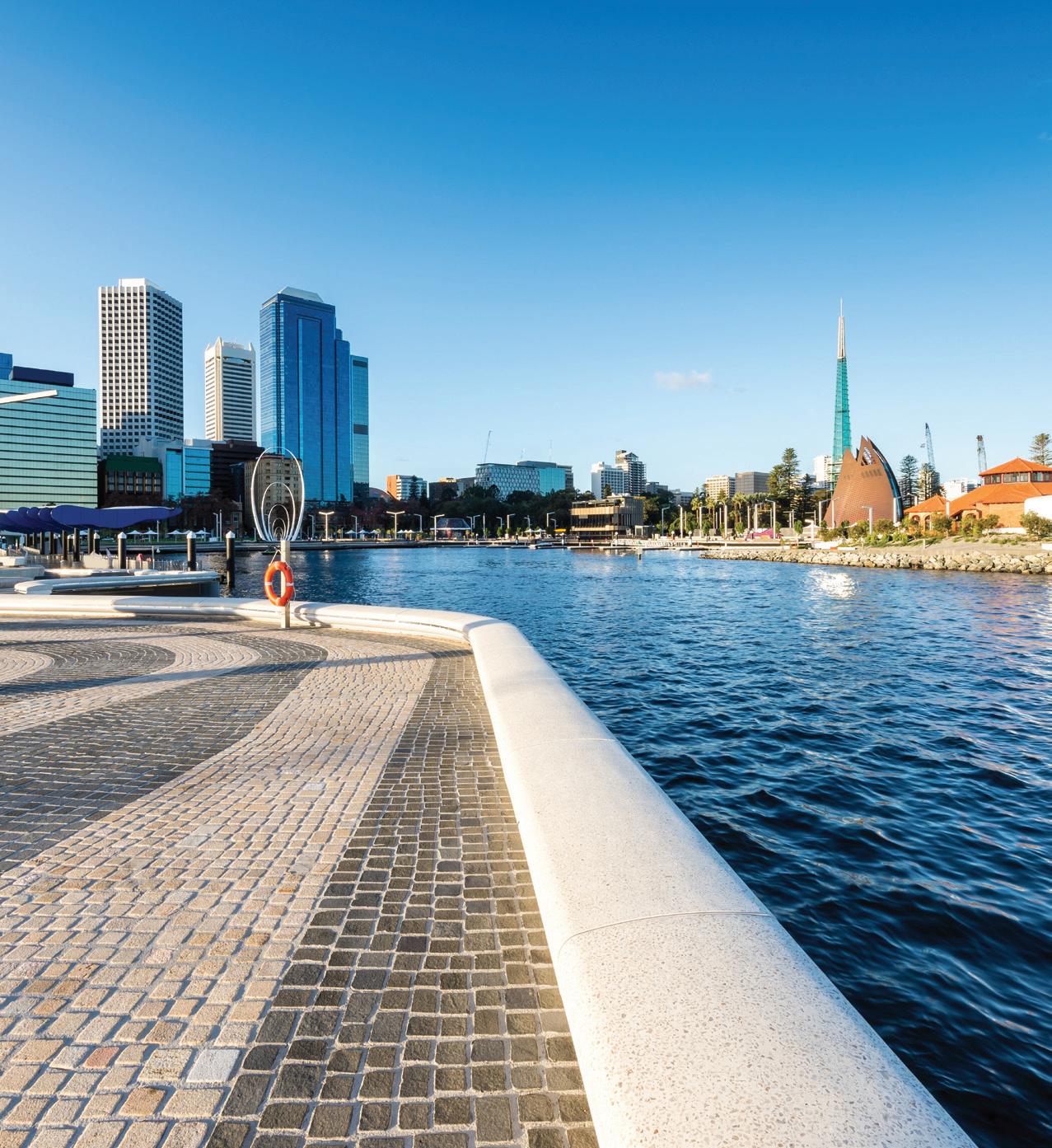
Engineering, Construction & Maintenance www.utilitymagazine.com.au Issue #18, May 2018 WATER SEWER ELECTRICITY GAS MAKING
DROP
WITH BETTER WATER MANAGEMENT FIND OUT
EVERY
COUNT
THE WINNERS OF THE DIGITAL UTILITY AWARDS GETTING ‘BEHIND THE GRID’ WITH BLOCKCHAIN ENERGY STORAGE: REWIRING THE ELECTRICITY NETWORK
Its 24,000 lb of thrust and pullback and 3000 ft-lb of rotational torque equals a 20% and 36% increase over its predecessor, the venerable D20x22 Series II—yet length and width has only increased by 20cm and 6cm respectively.
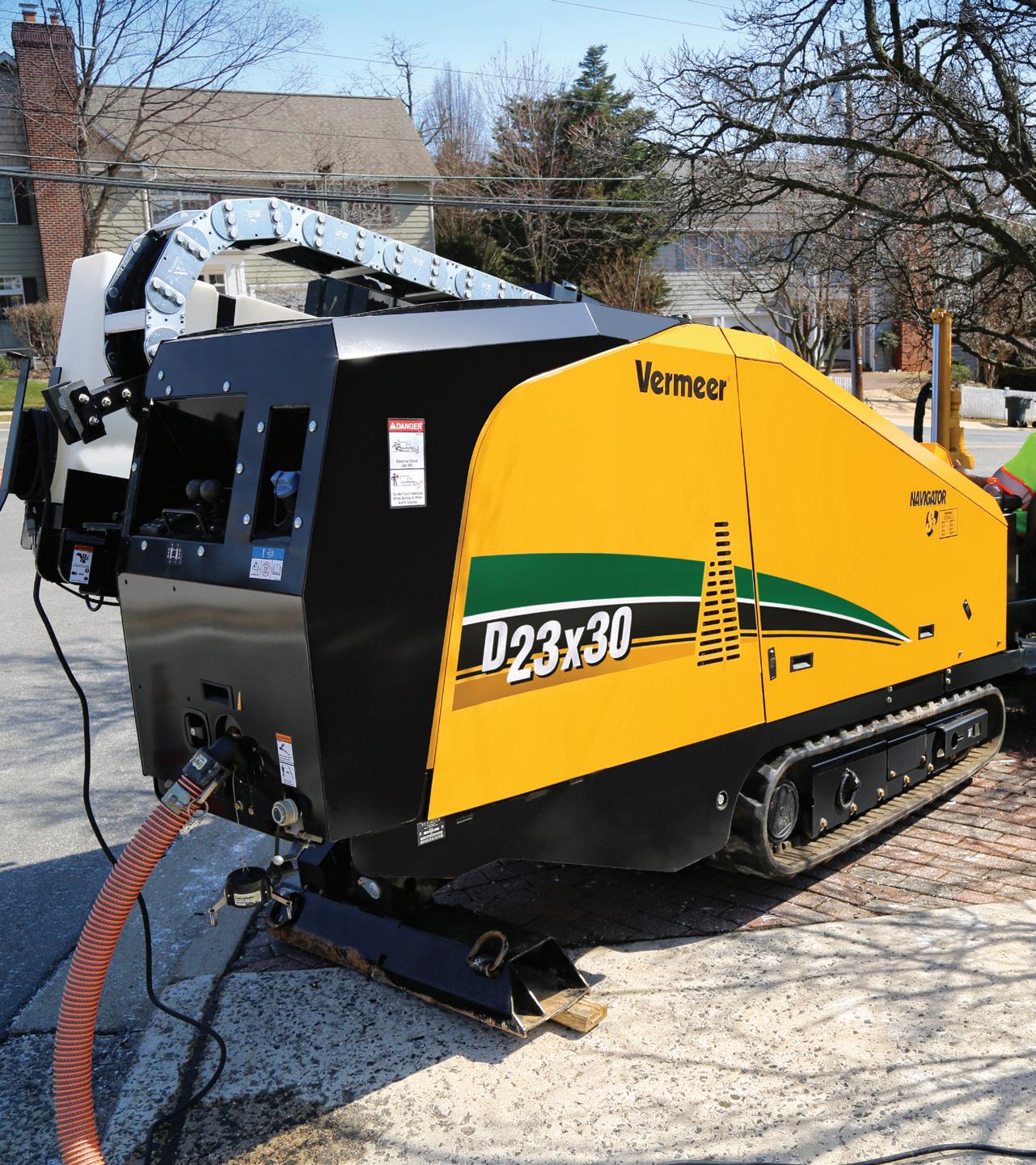
Noise level at operator’s ear of 78.7 dB(A) makes the D10x15 S3 jobsite and operator friendly, while familiar controls and the new DigiTrack® Aurora™ display offers ease of use and unmatched feedback.
See your Vermeer team to learn more.

Vermeer and the Vermeer logo are trademarks of Vermeer Manufacturing Company in the United States and / or other countries. © 2018 Vermeer Australia. All Rights Reserved. D23X30
GET EQUIPPED. / VermeerAustralia
| 1300 VERMEER
| 1800 195 558 (WA & NT) D23X30 NAVIGATOR® S3
NAVIGATOR ® S3.
WWW.VERMEER.COM.AU
WWW.VERMEERWA.COM.AU
THE ULTIMATE STREET MACHINE THE VERMEER D23X30 NAVIGATOR® S3 BRINGS NEW LEVELS OF SPEED AND POWER TO URBAN JOBSITES.

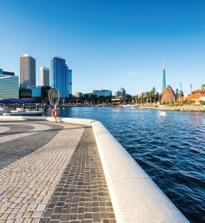
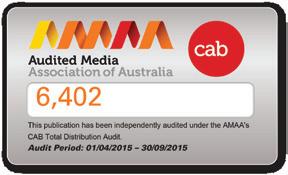

RFROM THE PUBLISHER
ight now, the South African city of Cape Town is enduring the worst water crisis to face a modern city. Severe water restrictions have been put in place and water tariffs have also been increased in an effort to reduce consumption. Fortunately, this is not a reality we have to consider quite yet, but Australia too is facing unprecedented challenges in managing its water resources.
With the majority of Australia’s water users concentrated around its capital cities, one of the ways in which these challenges could be mitigated is through a national reform of the urban water industry. Reforming Urban Water: A national pathway for change, a report released by Infrastructure Australia and supported by WSAA, highlights key sector vulnerabilities and suggests fundamental changes to the governance and regulation of Australia's urban water markets.
The power sector is also facing upheaval as current technology and consumer trends transform the electricity network and reshape it from the ground up. Regulatory innovation is essential to make the most of the technological opportunities available and reduce long-term network costs, with demand management being a central component of this.
The results of ARENA’s study into virtual power stations 2.0 have the potential to overcome the high and fluctuating voltages associated with some renewable generation which can exceed the capacity of distribution networks. Blockchain may be the industry’s current favourite buzzword but a two-year trial currently underway in Fremantle could demonstrate real-world applications of the distributed ledger technology within the utility space.
The digitisation of utilities is the greatest challenge currently facing the
sector with much to do to modernise existing networks, work practices and ways of interacting with customers. Recognising the momentous impacts that digital technologies are having on the industry, Utility hosted the two day conference Digital Utilities 2018 in Melbourne in April, which featured expert speakers and delegates from Australia’s major water and energy utilities.
We had a great response to the event and enjoyed some fascinating discussions across both days of the conference. One of the highlights of the event was the spectacular Gala Dinner and Awards Ceremony – find out who the well-deserved winners of the inaugural Digital Utility Awards were on page 22.
Not being one for complacency, we’ve already set the date for Utility’s next event, Asset Management for Critical Infrastructure 2018, which will be held in Sydney on 12–13 September. The two-day conference will bring together the best of the utility and infrastructure industries to discuss the latest news and techniques in the sector and explore practical applications that can improve the way assets are managed, with streams that include rail, corrosion and trenchless technologies.
If you’re involved in asset management for a utility or other critical infrastructure provider and would like to attend, you can register at assetmanagementevent. com.au.
With such vast changes creating new cultures of disruption and innovation across both the water and energy sectors, I’m excited to see how utilities respond to these changes, and look forward to discussing this with some of you at Asset Management for Critical Infrastructure in September.
welcome 1 UTILITY • MAY 2018 ISSUE 18 May 2018
Chris Bland Publisher Published by Cover image highlights our feature on urban water reform. Publisher Chris Bland Acting Editor Charlotte Pordage Managing Editor Laura Harvey Senior Associate Editor Jessica Dickers Associate Editor Lauren Cella Journalists Elisa Iannunzio Nicole Valicek Kirsty Hutton Marketing Director Amanda Kennedy Marketing Associate Sam Penny Marketing Assistants Rima Munafo Katie Chancellor Helena Brace Production and Customer Service Titian Bartlau Senior Designer Alejandro Molano Designer Jacqui Abela Monkey Media Enterprises ABN: 36 426 734 954 PO Box 1763 Preston South VIC 3072 P: (03) 9988 4950 monkeymedia.com.au info@monkeymedia.com.au utilitymagazine.com.au info@utilitymagazine.com.au ISSN: 2203-2797 Engineering, Construction & Maintenance www.utilitymagazine.com.au Issue #18, May 2018 UTILITY MAGAZINE MAY 2018 WATER SEWER ELECTRICITY GAS MAKING EVERY DROP COUNT WITH BETTER WATER MANAGEMENT FIND OUT THE WINNERS OF THE DIGITAL UTILITY AWARDS GETTING ‘BEHIND THE GRID’ WITH BLOCKCHAIN ENERGY STORAGE: REWIRING THE ELECTRICITY NETWORK 8,807 1 April – 30 September 2017
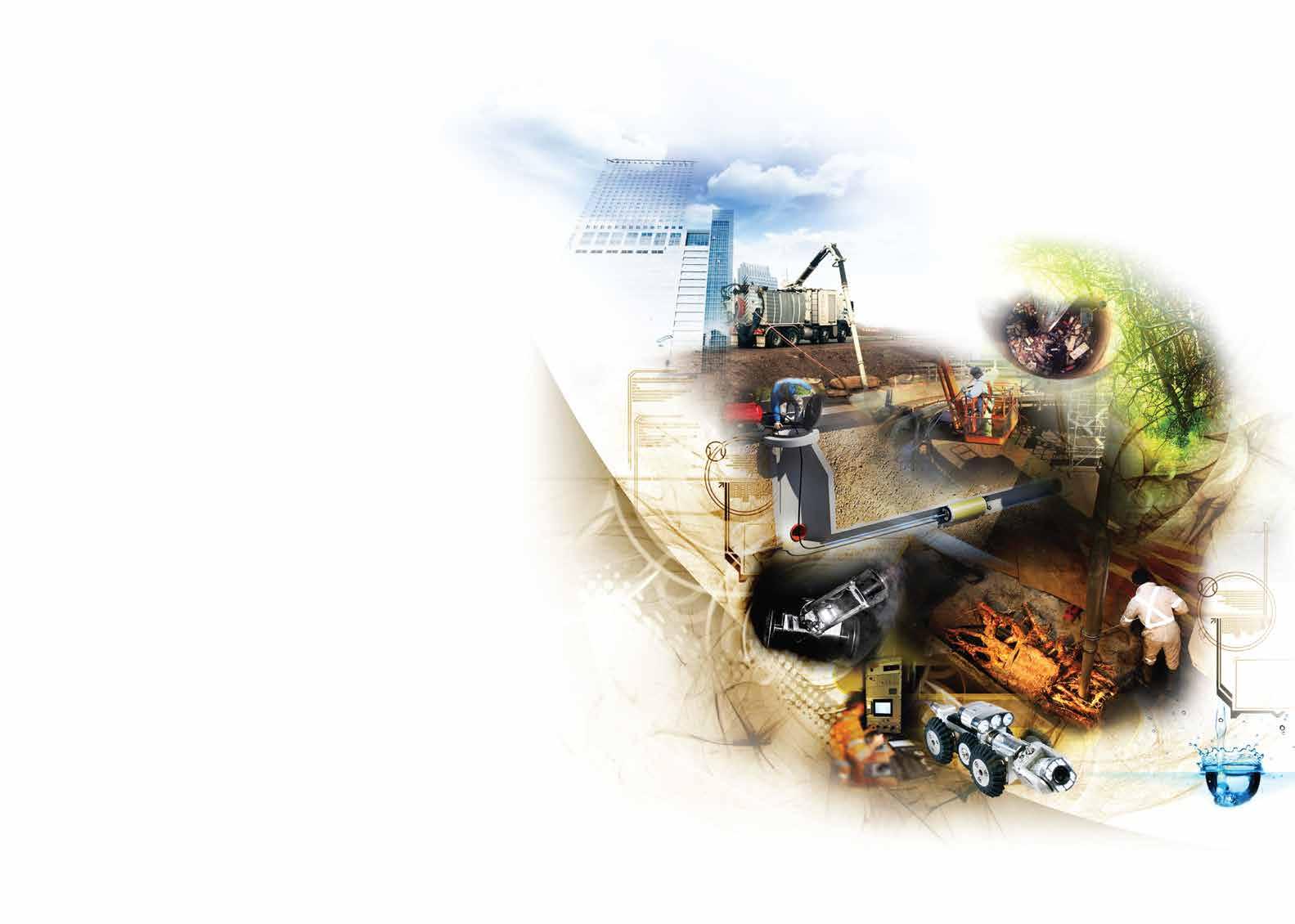
 Bulk Liquid Transport
Bulk Liquid Transport
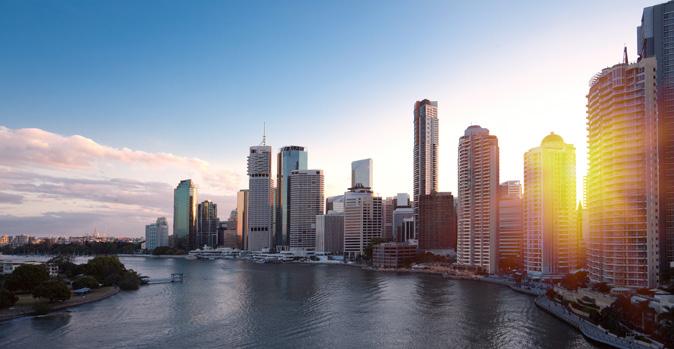

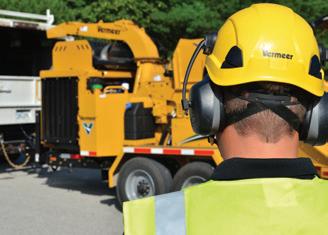


4 CONTENTS UTILITY • MAY 2018 WWW.UTILITYMAGAZINE.COM.AU 24 50 WATER MANAGEMENT The call for national urban water reform .......................................... 24 Digital efficiency key to combating water challenges ......................... 28 Raising the roof on sustainable water supply 30 Experts assemble: simplifying turbidity readings 32 Blueprint to aid water conservation during tough times 34 Infrastructure upgrade for the Nyngan to Cobar water supply pipeline 36 Visualising data in the water and sewerage industry ...................... 38 DEMAND MANAGEMENT The blockchain effect .................. 50 ENERGY NETWORKS Regulatory innovation: an oxymoron or future necessity? .. 54 Intelligent Motor Control supporting connected enterprises................................... 58 Virtual Power Station 2.0: a network game-changer 60 The transition to a Distribution System Operator 62 VEGETATION MANAGEMENT Our approach to vegetation management ............................... 86 Bigger options – bigger productivity gains 88 SCADA everywhere – the benefits of LPWAN communications to SCADA managers 40 Next-generation urban drainage keeping cities safe 41 An industry leader in plumbing .. 42 Chlorination on demand 43 WASTEWATER MANAGEMENT Groundwater replenishment for Perth 44 Alternative approach to maintenance 48 IRRIGATION A secure water supply for Tasmania’s Southern Highlands 92 MICROTUNNELLING Rob Carr finishes strong on its largest project to date 96 Minimising disruptions and maximising accuracy with microtunnelling 98 72 88 92 ORGANISATIONAL RESILIENCE Organisational resilience: what it means for the utility sector 90 90

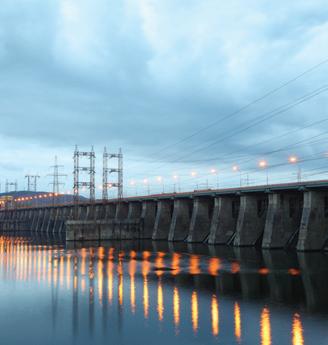
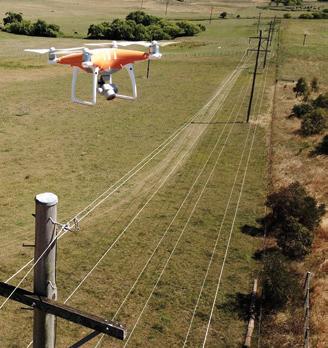


May 2018 ISSUE 17 5 UTILITY • MAY 2018 WWW.UTILITYMAGAZINE.COM.AU 64 SMART METERS Ten million meters: Australian Smart meter designer EDMI celebrates 40 years of precision, reliability and innovation 64 Smart meter trials continue to unearth new ideas 66 Taking the pain out of moving to smart meters 70 74 80 STORAGE Looking beyond lithium-ion in energy storage ............................ 74 Battery storage boosts remote island power station ................... 78 INSPECTION New pole inspection technology provides new perspective .......... 80 Utilising 3D imagery for more accurate asset assessment ........ 84 In each issue Welcome from the Publisher ......................... 1 A word from Energy Networks Australia .... 6 A word from WSAA ........................................ 8 News briefs .................................................... 10 Advertisers’ index ...................................... 104 Editorial schedule ...................................... 104 EVENTS Register today for Energy Networks 2018 – Vision Critical 100 MOBILITY Data collaboration for a truly mobile workforce supply chain ............... 72 100 72 102
i
The utility industry is regularly required to call on an enormous and varied range of specialists; from mapping, to drilling, to wastewater treatment, to asset management, to pipe relining, to pipeline integrity, to land access, to risk management, and the list goes on. To make the process a little easier, Utility is bringing together experts from various fields to answer your questions.
A WORD FROM ENERGY NETWORKS AUSTRALIA
ANDREW DILLON CHIEF EXECUTIVE OFFICER – ENERGY NETWORKS AUSTRALIA
There’s no such thing as green electrons or brown ones. Your TV and fridge run just the same on solar power from Queensland, wind power from SA, hydropower from Tasmania or coal power from the Hunter Valley. Interstate sharing of electricity makes power cheaper and more reliable.
Regrettably, since the system blackout event in South Australia in September 2016, state governments across our National Electricity Market (NEM), which covers everywhere except Western Australia and the Northern Territory, have adopted isolationist “my state first” energy policies.
While it’s human nature to look after your own in a time of crisis, continuing this trend will result in more expensive and less reliable energy supply for all, and more costly emissions reductions.
The 2017-2018 summer has demonstrated that the solutions to the major energy challenges we face will only be found in a collaborative approach.
Analysis by the CSIRO for the Electricity Network Transformation Roadmap clearly demonstrates that there will continue to be geographic differences in the generation mix between and within states. This ebb and flow of generation capacity across the country was one of the key reasons for establishing the NEM in the first place.
South Australia leads the world in intermittent generation –wind and solar – and the adoption of cutting edge technology, such as the 100 megawatt Tesla battery at Hornsdale. However, it is unsurprising that when SA demand is high but wind output is low, they rely on electrons from Victoria via the Heywood interconnector.
This is not policy failure; it’s exactly how a connected, national system should work. As our generation mix inevitably changes, each state attempting to install enough gas turbines and mega batteries to ensure they have sufficient home-grown supply every hour of every day of the year would come at a significant extra cost for Australian homes and businesses.
The NEM has been described as the world’s biggest machine. We will all be worse off if we have wind farm after wind farm unable to connect to this machine due to capacity constraints. It will be an inefficient and costly outcome if network congestion means solar generators large and small are blocked from injecting into the grid.

For this reason, we desperately need the Integrated System Plan, currently being developed by the Australian Energy Market Operator, to deliver on its name.
The only electricity future that makes sense for Australia is a more connected future.
The theme of the Energy Networks 2018 conference and exhibition is “Vision Critical”, and without a doubt, the national conversation on the future of the energy grid is nothing short of critical.
Energy Networks 2018 will put the summer that was under the microscope for a detailed look at how the energy sector performed. After a year of intense interest in the gas and electricity sector, what have we learned, what have we achieved and, most importantly, what must come next?
Our international keynote speaker, Miranda Ballentine from the Rocky Mountain Institute, will share insights on key trends for the future of the energy system and strategies for shaping a resilient and sustainable energy grid together with customers.
Energy Networks 2018 will also take a deep dive into the customer experience with Citysmart’s Reduce your Juice platform. This revolutionary behaviour change program, built on digital gamification and research insights, will demonstrate how Australian consumers use, think about and spend on electricity.
With international and domestic leaders in innovation, technology, asset management, consumer engagement and regulation, this will be the preeminent conference of the year, focused on the challenges facing the future of energy networks.
Australia’s energy sector faces huge challenges. Some are saying the NEM is broken – but a Brexit-style approach in which states disconnect certainly won’t work. We need long-term planning, based on what customers really value, to inform strategic policy and timely investments. The best results can only come from us all working together.
I extend a personal invitation to you to join us in Sydney in June for what will be an unmissable two days of world-class knowledge sharing, invaluable networking opportunities and open, accessible discussion.
The need for collaboration and shared expertise has never been more critical for our sector. This year’s Energy Networks conference may be the springboard from which the next big idea is generated and I urge you to be a part of it. Register

UTILITY • MAY 2018 WWW.UTILITYMAGAZINE.COM.AU 6
for Energy Networks 2018 at www.energynetworks2018.com.au
about the 'Reduce your Juice' game at www.reduceyourjuice.com.au/energy18.
and find out more



A WORD FROM WSAA
ADAM LOVELL EXECUTIVE DIRECTOR – WATER SERVICES ASSOCIATION OF AUSTRALIA
Earlier this year I spent a few days in the UK attending a high-quality water customer conference through Utility Week and meeting our collaborators including WaterUK, UKWIR, Consumer Council for Water and Isle Utilities. The conference had some great takeaways including the Trust Equation. Familiarity + Favourability = Trust is the Trust Equation.
While customer satisfaction and trust has been increasing for water services – in fact most essential services in the UK – there is an emerging and worrying trend that might see those trust figures slip. That trend relates to another measure called “customer effort” which is creeping upwards (sounds pretty much self-explanatory). Many of the utilities are using the equation familiarity + favourability = trust as a black box type framework that seems to work. They break that down further: favourability is based on both value for money and customer service. Excellence will be the new norm.
Undoubtedly a major theme emanating from all the speakers at the conference, including John Russell from OFWAT and “it’s not ok to be ok” from Jo Causen from the Institute for Customer Service. It is clear that stakeholders, regulators and customers are raising the bar to new levels as the water businesses prepare to lodge their submissions for Price Review 2019 (PR19). Excellence, brilliance, moments of difference were
words and phrases sprinkled heavily through the presentations from the UK utilities. Expectations of service are driven by everyday experiences – not by customers comparing utilities from across the country. Leadership.
Interesting to note, there seems to be a growing trend for a super General Manager type role at utilities. Certainly combining customer and operational responsibilities is the new norm, but a growing trend of combining the human resource role in that single General Manager space. Jo Causen talked about some significant work clearly linking customer satisfaction and trust with deep employee engagement. Louise Beardmore from United Utilities was a really impressive leader and speaker who is covering all three roles. “Channels by choice’ not ‘digital by default”.
Sarah Bentley from Severn Trent talked about utilities being available anytime, anywhere, through any device. The message from all the speakers was that funnelling customers through only digital channels was not the right direction. There was a great question from the audience – what about the silent majority? No different to here in Australia and New Zealand, how do you engage the customers who persistently won’t engage for a variety of reasons. Louise Beardmore provided a great response: “create the moments of difference, create WOWs” which is a reference to

the WOW awards website where huge emphasis is placed on live customer feedback. Do something with street works, create an opportunity to be seen creating community value as well as minimising service disruption. Vulnerable customers.
Across the board, stakeholders, regulators and utilities were all talking about approaches to assisting vulnerable customers, with some programs similar but not the same as say the Yarra Valley Water “Thriving Communities” initiative. Net Promoter Score.
The NPS is being used widely, although with some trepidation. Many utilities are disappointed with scores below +50. OFWAT will be trialling the use of NPS within their CMeX framework in PR19
I also took the opportunity to meet our key collaborators in the UK. We are developing a collaboration with Tony Smith, CEO at the Consumer Council for Water, on leading edge customer engagement, picking up some of the experiences and lessons learnt from WSAA members, and comparing that with the UK water utilities, particularly after they submit their proposals under PR19 later this year. It was evident that the UK water utilities are continuously undertaking engagement with their customers – not just when a price submission is required. As Louise Beardmore said, “be curious, constantly”.
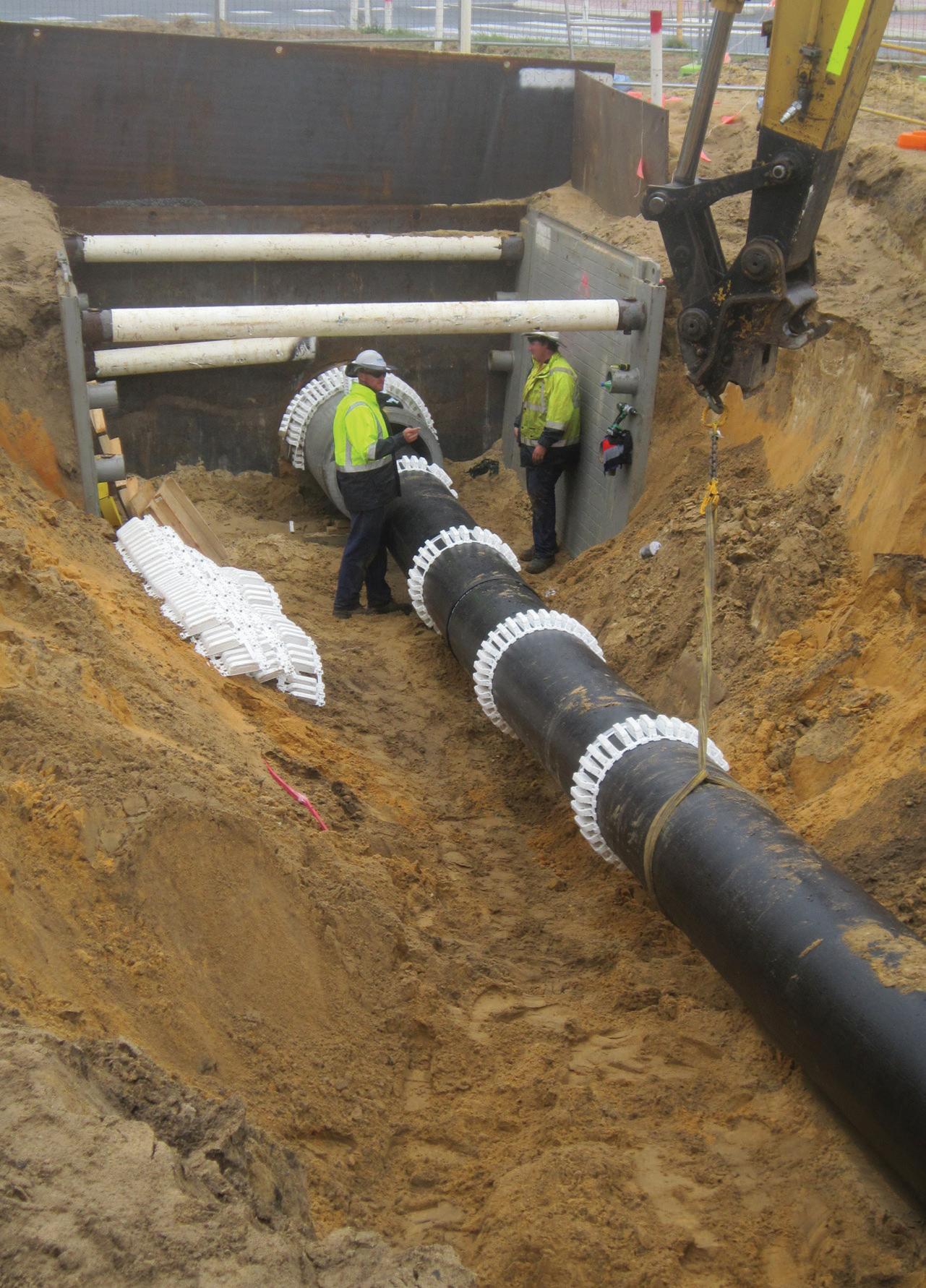
UTILITY • MAY 2018 WWW.UTILITYMAGAZINE.COM.AU
8

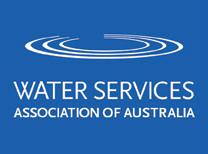
P (08) 9725 4678 sales@kwikzip.com Contact us today to order Also available for order through Reece Civil stores. Is your pipe spacer compliant? KWIK-ZIP’S HDX SERIES CASING SPACERS COMPLY WITH WSAA PRODUCT SPEC #324 – CASING SPACERS; REFER WSAA PRODUCT APPRAISAL REPORT #1523 www.kwikzip.com
SCIENTISTS DEVELOP REVOLUTIONARY FILTER TO IMPROVE DRINKING WATER QUALITY
Aworld-first, graphene-based, laboratory-scale filter that can remove more than 99 per cent of the ubiquitous natural organic matter left behind during conventional treatment of drinking water could soon be used in conventional plants.
The research collaboration between University of NSW (UNSW) scientists and Sydney Water has demonstrated the success of the approach in laboratory tests on filtered water from the Nepean Water Filtration Plant in Western Sydney, and is working to scale up the new technology.
The project is led by Dr Rakesh Joshi of the UNSW School of Materials Science and Engineering, in collaboration with Professor Veena Sahajwalla and Professor Vicki Chen of UNSW, and Dr Heriberto Bustamante of Sydney Water.
could be converted into an alternative new option that could in the future be retrofitted in conventional water treatment plants.”
Sydney Water supplies clean water to about 4.8 million people in Sydney, the Illawarra and the Blue Mountains. These natural organic matter contaminants can affect the performance of direct filtration plants, reducing their capacity after heavy rain.
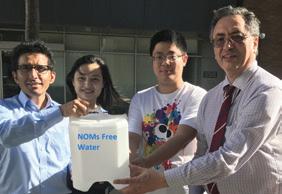
“The most common methods used at present to remove organic matter from water supplies include the application of chemical coagulants,” Dr Bustamante said.
“However, these existing treatments are only partly effective, particularly as the concentration of natural organic matter is increasing.”
“Our advance is to use filters based on graphene – an extremely thin form of carbon. No other filtration method has come close to removing 99 per cent of natural organic matter from water at low pressure,” Dr Joshi said.
“Our results indicate that graphene-based membranes































































Dr Joshi said the new treatment system is made by converting naturally occurring graphite into graphene oxide membranes that allow high water flow at atmospheric pressure, while removing virtually all of the organic matter. The UNSW team is upgrading the experimental rig to construct a small pilot plant that could be tested in the field.













10 UTILITY • MAY 2018 WWW.UTILITYMAGAZINE.COM.AU NEWS NETWORK SERVICES
UNSW's Dr Rakesh Joshi (far left) and team members hand over water free of natural organic matter to Sydney Water's Dr Heriberto Bustamante (far right).
KIDSTON SOLAR STAGE TWO GETS DEVELOPMENT APPROVAL
The Etheridge Shire Council has given development approval (DA) for stage two of the Kidston solar project (K2-Solar).
The DA is for a maximum of 270MW but Genex has the potential to build K2-Solar in stages to match energy off-take and energy transfer capabilities. This represents a significant milestone for the K2 projects.
As with Kidston solar stage one (KS1), K2-Solar will benefit from being located within the highest solar radiation zone in Australia.
Genex continues to advance the Early Contractor Involvement (ECI) process toward agreeing full fixed price Engineering, Procurement and Construction (EPC) wrap contracts with UGL for K2-Solar and with McConnell Dowell/ John Holland Joint Venture (JV) for K2-Hydro.
EPC contracts are expected to be finalised by the end of June 2018.
As part of the ECI process for K2-Hydro, the JV has selected ANDRITZ, an international tier-one supplier and global leader in hydraulic power generation, as the preferred electromechanical equipment supplier.
Managing Director of Genex Power, Michael Addison, said, “After several months of detailed market engagement, we are now in negotiations in regards to securing debt funding
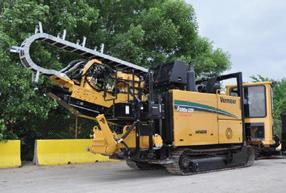


for our Kidston stage two projects with a select group of partners.
“Genex’s main focus remains on progressing the Kidston stage two projects to financial close in calendar year 2018. Concurrently, Genex continues to consider further renewable opportunities to broaden its project pipeline, as the company evolves into a broader renewable energy generation and storage developer.”
The Federal Government, through the Australian Renewable Energy Agency (ARENA), has provided $8.9 million in funding to support the construction of Genex’s KS1 Project, and up to $9 million in funding to support the development of K2-Solar and K2-Hydro.
The Queensland Government has continued to support the development of the Kidston Renewable Energy Hub, providing a 20-year revenue support deed for KS1 through the Solar 150 Program, and designating the Hub as ‘Critical Infrastructure’ to the state.




UTILITY • MAY 2018 WWW.UTILITYMAGAZINE.COM.AU 11 NEWS
Australia’s most advanced HDD contractor... AHD Delivers, every time • Experienced staff • The latest equipment • Technologically innovative T: (03) 9439 93 73 W: www.ahdtrenchless.com.au
MILESTONE FOR MELBOURNE SEWER PROJECT
ATunnel Boring Machine (TMB) is working its way under Spencer Street in Melbourne’s CBD, marking a major milestone on one of City West Water’s sewer upgrades.
Project Delivery Manager City West Water, Kate Houlden, said the installation of the tunnel borer is an exciting ‘next step’ for the Spencer Street Sewer Upgrade project.
“With population growth set to increase by 14,000 apartments within the Spencer Street sewer catchment, tunnelling works to increase its capacity are vital.
“Our TBM – owned by Bothar Boring – has made its journey from its last project in Lismore, NSW, and is now beginning its next journey under Spencer Street.
“Weighing in at an impressive 25 tonnes, our TBM is about four times as heavy as a Tyrannosaurus Rex.





“The borer is nine metres and is made up of three sections – cutter head, power pack and telescopic sections – which have been lowered into the 12m-deep launch shaft in stages.
“The sections were delivered one day at a time, with our crews working hard to ensure that each was installed safely, on time and with precision.”
The Tunnel Boring Machine is now making its way from Lonsdale Street towards the 7.5m deep retrieval shaft

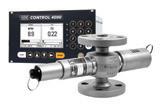

that will be constructed at Flinders Lane.
Ms Houlden said the borer works quite quickly, with 6-8m of pipe being installed every 12 hours for the next several months.
“The total length of the bore will be just over 590m with a bore diameter of 1.5m.
“On completion our TBM will be pulled out of the retrieval shaft at Flinders Lane and transported to another project location for reuse.”
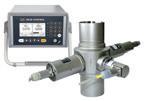

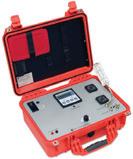

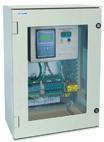
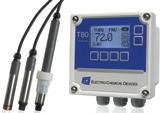



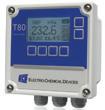


UTILITY • MAY 2018 WWW.UTILITYMAGAZINE.COM.AU NEWS 12 NSW Ph: 02 8197 2825 WA Ph: 08 9201 0948 QLD Ph: 07 3333 2825 SA Ph: 03 9017 8225 Head Office: Unit 20, 51 Kalman Drv Boronia VIC 3155 Ph: 03 9017 8225 Fax: 03 9729 9604 www.ams-ic.com.au sales@ams-ic.com.au AMS Instrumentation & Calibration Pty Ltd Analytical Process Division Oxygen Analysers, Thermal Conductivity Analysers, NDIR Analysers, Multigas Analysers, OEM Analysers U.V Absorption Conductivity pH / ORP Colour Industrial Water Analysers and Liquid Analytical Products (pH, Conductivity, ORP, Dissolved Oxygen, etc) Oxygen Analysers, Relative Humidity Sensors and Meters, Dewpoint Measurement


How do I make the most of the web, SEO, social media and content marketing to reach my customers? Visit www.monkeymedia.com.au and sign up to our newsletter to get free marketing tips for companies in the Utility industry www. .com.au publishers of Engineering, Construction & Maintenance

8MW VIRTUAL POWER PLANT FOR ADELAIDE
The Australian Renewable Energy Agency (ARENA) has announced $7.7 million in funding for Simply Energy to build a second virtual power plant across Adelaide.
The $23 million project will deliver Tesla Powerwall 2 home batteries to up to 1200 Adelaide households, representing six megawatts of residential energy storage.
A further two megawatts of demand response capacity will be deployed across ten commercial businesses.
The virtual power plant is expected to be up and running by the end of 2019.
A virtual power plant is a centrallymanaged network of battery systems installed behind-the-meter that can be collectively controlled to deliver benefits to households, energy retailers and the local network.
Individual customers will benefit from reduced power costs as they are able to increase the amount of rooftop solar power they consume by storing the solar-generated energy and using it later when they would otherwise be consuming power from the grid.
The battery systems are also able to provide backup power in the event of an outage.
The three-year trial will give South Australia Power Networks (SAPN) greater visibility of behind-the-meter battery storage and access to those batteries as distributed energy resources that can be used to address local network constraints and manage demand.
Simply Energy’s virtual power plant will be the second in South Australia after ARENA previously provided $5 million in funding to AGL to establish a virtual power plant of 1000 households and businesses across Adelaide.
ARENA CEO, Ivor Frischknecht, said this project will build on the AGL VPP.
“We think consumer energy resources have a huge role to play in Australia’s energy future, but we are still figuring out how we can orchestrate rooftop solar and home batteries to feed back into the grid. This is technically hard to do, which is why these pilot projects are so important,” Mr Frischknecht said.
“This is a potential model for how distributed energy resources can be operated at large scale in the future to help reduce energy prices."
Simply Energy CEO, Carly Wishart, said Adelaide households will be able to participate in the trial, which will see the home battery system delivered at a subsidised price.
“Simply Energy is proud to be able to deliver this innovative solution that helps our customers reduce their energy costs while also providing additional energy security in South Australia,” Ms Wishart said.
“We will work closely with South Australian Power Networks to give both networks and the market operator greater visibility of behind-the-meter batteries and the ability to use batteries to manage demand and manage network constraints, reducing network costs.
“It’s a win-win because our customers are getting better value from their renewable energy solution and the network will have more electricity sources from which to draw, which in turn improves reliability, particularly at times of peak demand.”
Consultants Marchment Hill and Flex are also involved in the Simply Energy consortium developing and managing the project.

UTILITY • MAY 2018 WWW.UTILITYMAGAZINE.COM.AU NEWS 14



FUNDING FOR NEW EAST COAST GAS SUPPLY
The Australian Government will provide $26 million in funding from its Gas Acceleration Program (GAP) for four new projects to boost the supply of gas in the East Coast market.
Minister for Resources and Northern Australia, Matt Canavan, said the projects would supply an extra 12.4 petajoules of new gas to the East Coast market by 30 June 2020 and an extra 27.6 petajoules over five years.
Mr Canavan said this extra supply would help safeguard Australia’s future gas security.
“Gas is vital to Australia’s energy security as a fuel, as a feedstock for industry, and as a source of energy generation,” Mr Canavan said.
“We must continue to invest in the gas sector to ensure a secure, reliable and affordable gas supply. Bringing more gas to market will help Australian businesses remain competitive, create more jobs and reduce cost of living pressures on all Australians.
“While Australian Government measures like the Australian Domestic Gas Security Mechanism and the Prime Minister’s agreement with LNG exporters in October 2017 have helped to address domestic gas supply in the short term, the only way to provide gas security into the future is by increasing the supply of gas through increased development.
“SWEP [Utilising Verge
“We can access our plentiful gas resources in a responsible and balanced way, using the best available science. I encourage all states and territories with limitations on gas projects to rethink their blanket bans.
“The GAP is fast tracking projects with the best prospects of bringing significant new gas volumes to target markets by mid-2020.”
The funded projects include:
• The Kincora Gas Acceleration Project, Armour Energy (Surat Basin), will receive a $6 million grant towards a $16.1 million project
• A $6 million grant towards a $14.3 million project for the Greater Meridian Domestic Gas Acceleration Project, Westside Corporation
• A $6 million grant for Beach Energy (Adelaide Energy) for a $22.6 million project to construct a new Katnook Gas Processing Facility
• A $6 million grant for a $16.3 million project by Tri-Star Fairfields
“The GAP is a significant component of the Australian Government’s $90 million investment in gas security, reliability and affordability for Australian gas users,” Mr Canavan said.
products] has helped schools avoid losses of over 4 billion litres of water”

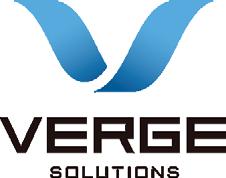


16 UTILITY • MAY 2018 WWW.UTILITYMAGAZINE.COM.AU Making IoT work for you 13 000 VERGE vergesolutions.com.au
could you be saving?
million data points collected 45 years of instrumentation expertise
years of Internet of Things (IoT) experience Measuring and monitoring daily Flow | Level | Temperature | Water Quality | Rainfall Increasing e ciency, by saving Water | Time | Money Executive Director Policy, Governance and Legislation Victorian Government - 3rd August 2017
What
275
8
IoT
NEWS
ASSET MANAGEMENT FOR CRITICAL INFRASTRUCTURE CONFERENCE IS BACK IN 2018
Following the success of last year’s event, the Asset Management for Critical Infrastructure Conference is returning for another year, running from 12-13 September in Sydney. Its return will include the addition of an exhibition, new focused panel streams and in-depth discussions with a new lineup of industry experts.

Asset Management for Critical Infrastructure 2018 will bring together leading experts across the utility and infrastructure sectors for two days of thoughtleading discussion around the most pressing issues in asset management.
Last year’s conference was attended by infrastructure asset owners, senior figures within the utility sector, and others working in the asset management space, which gave delegates the opportunity to network with the industry’s best.
WHAT’S NEW FOR 2018?
The 2018 conference will include the addition of an exhibition, which will see leading asset management, technology, utility and infrastructure companies highlighting some of the newest products and innovations in the sector.
The conference is created by Monkey Media, who publish Utility and Infrastructure magazines, so the content itself is the highest priority - the event takes the issues covered in the magazines and brings them to a live and interactive format.
The lineup of speakers will include senior figures from Australia’s water and power utilities, as well as infrastructure asset owners, and representatives from government and key industry bodies.
While the two days will explore asset management challenges and solutions, technologies and processes across utilities and infrastructure, there will also now be targeted streams to suit your exact area of interest and specialty.
This year will feature dedicated streams, including:
• Rail
• Corrosion
• Trenchless
This is in addition to presentations and industry panels covering the asset management journeys of Australia’s major water and energy utilities.
WHAT TO EXPECT AT ASSET MANAGEMENT FOR CRITICAL INFRASTRUCTURE ?
While managers of critical infrastructure, such as water supply, electricity generation and transport, have more tools available than ever before to manage these assets, the amount of public scrutiny has never been higher.
This event is a chance for anyone working in the asset management space, or for a utility, to explore practical applications that can help improve the way assets are managed. The aim is for delegates to leave the event with new ideas or perspective that they can then implement in their organisation.
NEWS UTILITY • MAY 2018 WWW.UTILITYMAGAZINE.COM.AU 17
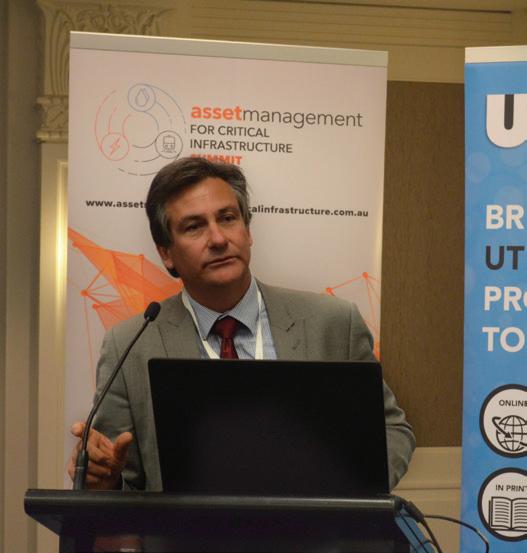
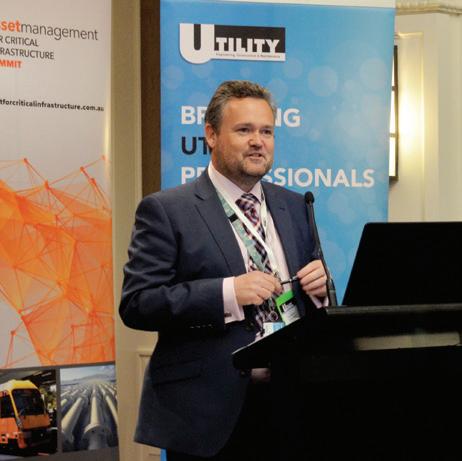

It’s also a chance for asset managers to learn what they need to do to keep up with the rate of change occurring in the sector, and get advice from colleagues in related or complementary sectors. Sometimes all it takes is to see what someone else is doing to spark an idea or innovation.
This year, you can expect presentations and panel discussions on topics such as:
• Big data and data analytics
• Updates to asset management standards
• How new technologies are being implementeddrones, VR/AR
• Are utilities using the Internet of Things (IoT) to their best advantage
• Predictive maintenance
• Balancing the construction of new assets with maintaining existing assets
• Asset management best practices
• And so much more!
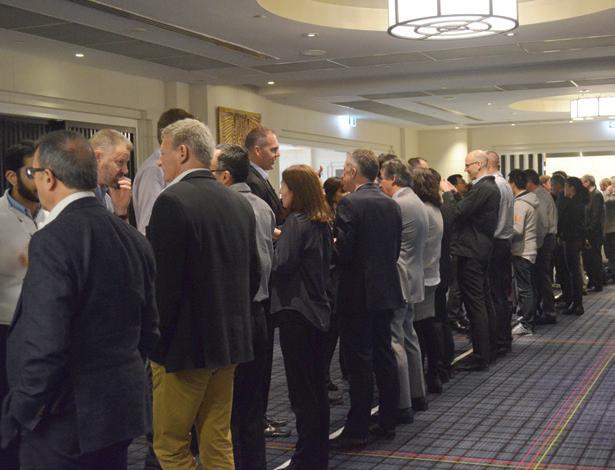

18 UTILITY • MAY 2018 WWW.UTILITYMAGAZINE.COM.AU NEWS
Asset Management for Critical Infrastructure will run from 12–13 September in Sydney. Full program and speaker lineup to be released shortly. Visit assetmanagementevent.com.au for updates or to submit an enquiry
Asset Management for Critical Infrastructure Conference is back in 2018

Things have never been better.
For more than 30 years we have delivered reliable and innovative simulation software for network hydraulics and water quality in the Australian and New Zealand water industry. We’re now stronger than ever with a larger


THE UTILITY INDUSTRY’S BEST SHARE THEIR DIGITAL TRANSFORMATION JOURNEY
Representatives from Australia’s major water and energy utilities gathered in Melbourne in April to discuss the impact of digital disruption on the utility sector and learn how to embrace emerging technologies and be fearless in the face of innovation.
Digital Utilities 2018 was held from 19-20 April at the Pullman Hotel in Albert Park, Melbourne, providing members of the utility community with an opportunity to learn from the industry’s best, network with clients and colleagues, and discover the latest digital tools and technologies needed to accelerate and transform their organisations.
Bentley Systems - a global software development company that supports the professional needs of those responsible for creating and managing the world’s critical infrastructure, was the event partner - and ABB - a pioneering technology leader in electrification products, robotics and motion, industrial automation and power grids - was the event major sponsor.
The expert speaker lineup was spearheaded by two keynotes - Stuart Hartley, Sector Leader - Power and Utilities APAC, EY; and Susan Heath, Chief Information Officer, Queensland Urban Utilities.
Mr Hartley’s keynote presentation, Are we at the tipping point to digitally reimagining the future utility?, kicked off day one of the conference.
According to Mr Hartley, technological disruption is moving so fast that many utilities are struggling to prioritise the right investments and deal with new risks such as new competitors, cyber security and shifting demand patterns.
Despite the uncertainty surrounding these changes, Mr Hartley said there’s never been a more exciting time for the utilities sector to adopt technology to transform energy services.
“Innovation around renewables, battery storage, electric vehicles,
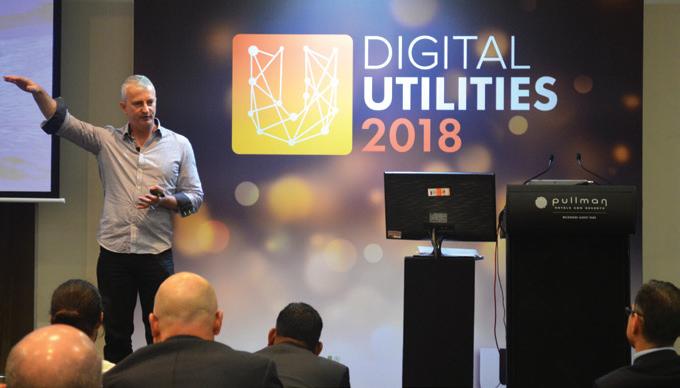
as well as advances in niche digital innovation, including artificial intelligence, IoT (internet of things) and mobility, create unprecedented opportunities to capture new revenues and drive productivity.”
Susan Heath’s keynote presentation Queensland Urban Utilities’ digital transformation journey provided the opening for day two of the conference.
According to Ms Heath, having an Innovation Program encourages staff to contribute bold, new ideas to improve business operations, and supports the integration of new digital transformation initiatives.
“This appetite for exploring new digital opportunities has led to an involvement in the hack community, which has seen bright minds in our community develop technologyfocused solutions to challenges facing the water and wastewater industry,” Ms Heath said.
Ms Heath also highlighted the use of technology to foster a more digitally enabled workforce and the importance of data and real-time information in establishing more predictive operations.
UTILITIES EXPLORE THE BENEFITS OF DIGITISATION
The keynote presentations were supported by a number of speakers who are already taking the action required to transform their organisations into truly digital utilities.
Luke Skinner, Head of Network Technologies at Citipower and Powercor, talked about how smart meters are allowing Victorian network businesses to use artificial intelligence and analytics to support the transforming electricity grid.
“Victoria's foresight in rolling out the technology almost a decade ago has provided distribution businesses with better insights into what's happening on the network and support grid stability,” Mr Skinner said.
“This technology has allowed CitiPower and Powercor to devise demand response initiatives that have pushed innovation boundaries and helped reduce pressure on the grid.”
Brock Tunnicliffe, Customer Compliance Officer at City West Water explained how virtual reality presents an exciting opportunity for the water industry to enhance and augment the
DIGITAL UTILITIES 20
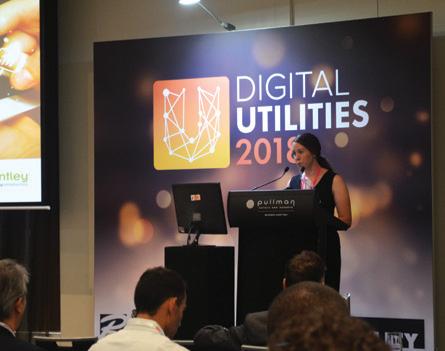
way it plans and designs new assets and undertakes staff training.
“By using 3D CAD models, operators and field workers who may not be able to read complex plans effectively, can now visually audit and inspect plans in a virtual environment, providing an effective methodology at finding defects and hazards present in the design stage of a project,” Mr Tunnicliffe said.
Brett Millington, Flagship Program Director at Intelligent Water Networks, discussed the importance of finding better ways to manage and integrate data, so as to assist water corporations in making sensible and cost-effective asset investment and business decisions.
“Big data and analytics have become a real focus that can improve customer service, business processes, asset management and field operations, making water corporations efficient ‘digital utilities’.”
PANEL DISCUSSIONS STIMULATE DEBATE
The second day of Digital Utilities 2018 featured four panel sessions, split into morning and afternoon streams. At the end of each session, delegates had the opportunity to ask questions, which led to some lively discussions on the topics.
The stream, Using digital technologies to improve customer relationships, featured Toby Evans, Senior Manager of Digital Transformation at SA Water; Paul Loftus, Head of Customer Sales at Powershop; and Cate Hilliard, Manager, IT Capital Portfolio at SA Power Networks sharing their insights into better ways of managing customer
relationships and shaping digitisation around the needs of the customer.
During the other morning stream, delegates heard from Helen Millicer, President at the Alternative Technology Association; Mottel Gestetner, Business Development and Transactions at ARENA; and Joshua Lowndes, Asset Management Engineer at Pacific Hydro for a panel session titled The role of renewables in our digital future.

This panel explored the role that new generation technologies, such as solar, battery storage, pumped hydro etc, will play for utilities in the future and the importance of digital technologies in the transition to a low carbon future.
With the significant amount of data now being collected thanks to new digital technologies, the afternoon stream Achieving cyber security resilience in a digital environment was a key point of interest for many delegates.
Ian McKenzie, General Manager, IT Operations at Jemena; Sven Bluemmel, Victorian Information Commissioner, and Jarrod Loidl, Cybersecurity and Technology Risk Leader at Rapid7, discussed how utilities can ensure their data is only used to benefit themselves and their customers, as well as how to build high-performing security teams and a security culture within an organisation.
Delegates also spoke highly of the Modernising the network for the digital age stream, comprised of Frank Tudor, Managing Director at Horizon Power; Joe Locandro, Chief Digital and Technology Officer at the Australian Energy Market Operator; Peter Tickler,
Digital Innovation and Advisory Leader at ERM Power; and Andrew Fraser, Network Innovation Team Leader at TasNetworks.
During this session, the panelists considered the role of the grid for digital energy utilities, how to achieve network stability, effective investment in disruptive technologies, and data driven decision-making and asset management.
The Super Panel, featuring seven key speakers from across the two days, wrapped up the conference and offered a ‘big picture’ view of all the topics covered.
FORGING INDUSTRY CONNECTIONS
Digital Utilities 2018 allowed delegates several opportunities to network and get to know other members of the utility community.
Multiple speed networking sessions provided delegates with introductions to colleagues and other industry professionals. These formal sessions were in addition to the numerous opportunities to connect with other attendees during the networking lunches, tea breaks and drinks.
Exhibitors from digital and technology related companies were also on hand to showcase the latest innovations in the sector and were able to provide delegates with advice on how to integrate digital solutions within their organisation.
One of the main highlights of the event was the Gala Dinner and Awards Ceremony honouring the winners of the inaugural Digital Utility Awards Many delegates arrived at the Grand Ballroom to enjoy an evening of fun and celebration - find out who received the top prizes, along with photos from the night, over the page.
The inaugural Digital Utilities 2018 was an engaging event and delegates were left with plenty of tools and advice to move their organisations into the digital age. The second annual Digital Utilities event will be held again in the first half of 2019 - keep reading Utility in print and online so you can stay up to date with all the details as they are announced.

DIGITAL UTILITIES 21
WINNERS OF THE 2018 DIGITAL UTILITY AWARDS ANNOUNCED
The Digital Utility Awards were launched as a way to gather some of the best ideas when it comes to the digitisation of utilities – and the best implementation of these ideas – so that all of the industry can benefit from some of the impressive changes that are being made.

The awards recognise the utility industry’s greatest achievements in the digitisation of utility networks, processes and practices across Australia.
The inaugural Digital Utility Awards were presented on 19 April 2018 at a gala dinner and awards ceremony that was held as part of Digital Utilities 2018
The two-day event, which took place at the Pullman Hotel in Albert Park, Melbourne, was attended by senior leaders and experts from within the utility community.
All award applicants were required to submit their entries by 23 February, with the shortlist announced on 13 March.
The final judging panel was comprised of Water Services Association of Australia Executive Director, Adam Lovell; Energy Networks Australia CEO, Andrew Dillon; and PwC Australia's Energy Utilities and Mining Leader, Mark Coughlin.

BEST CUSTOMER INNOVATION
In recognition of the best digital innovation focused on improving customer outcomes.
Finalists:
AGL for its digital reporting service, Energy Insights, which provides customers with a detailed breakdown of their energy usage per home appliance category.
ERM Power for its digital platform, STEP Online, which gives customers the ability to manage the timing and volume risks associated with contracting in the electricity market.
SA Power Networks for its Customer Communication Applications (CCA), which are a set of online customer self-service tools that enable customers to locate and understand why outages are occurring.
TasNetworks for its Voice of the Customer Program, comprising the Customer Connections Portal, EmPOWERing You Trial, virtual reality software and a variety of advanced network technologies.
WINNER: TasNetworks

DIGITAL UTILITIES 22
UTILITY • MAY 2018 WWW.UTILITYMAGAZINE.COM.AU
BEST USE OF NEW TECHNOLOGY
In recognition of the best new technology in place across a utility network.
Finalists:
Essential Energy for its use of drone technology to perform network inspection, condition assessment and vegetation management.
Horizon Power for its Horizon Power app, which allows regional and remote customers to monitor and control their energy bills.
Isle Utilities for its digital platform, Isle CATwizard, which provides a review of condition assessment technologies available worldwide, with a vast range of searchable parameters.
SA Power Networks for its Machine Learning Algorithm (MLA) to convert and migrateCAD Drawings through an automated process.
SA Water for its Smart Networks project, which uses pressure and acoustic leakage sensors and smart meters to improve service delivery, reduce service disruptions and better manage assets.
Water Corporation for its use of virtual reality tool ‘Holodeck’ in Safety in Design operability workshops, which enables the operator to walk around the proposed asset as if it was a built environment and better identify safety hazards.
WINNER: SA Power Networks
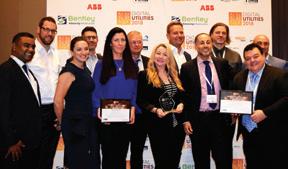
DIGITAL UTILITY OF THE YEAR
Awarded to the utility showcasing the best use and implementation of digital technologies, tools and processes across their organisation.
Finalists:
Horizon Power
Melbourne Water
Powerlink
Queensland
SA Power Networks
SA Water
South East Water
WINNERS: Horizon Power and SA Water
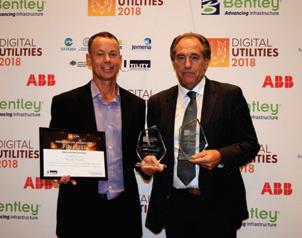

UTILITY INNOVATOR OF THE YEAR


Awarded to the individual making the single biggest contribution to the digitisation of the utility sector.
WINNER: Frank Tudor, Managing Director, Horizon Power

DIGITAL UTILITIES 23 UTILITY • MAY 2018 WWW.UTILITYMAGAZINE.COM.AU
The call for NATIONAL URBAN WATER REFORM
The extensive network of water infrastructure that delivers services to more than 20 million people nationally is under increasing pressure due to population growth, climate change, growing customer and community expectations, and aging infrastructure. Infrastructure Australia has called on Australia’s governments and utilities to make fundamental changes to the governance and regulation of Australia's urban water markets.
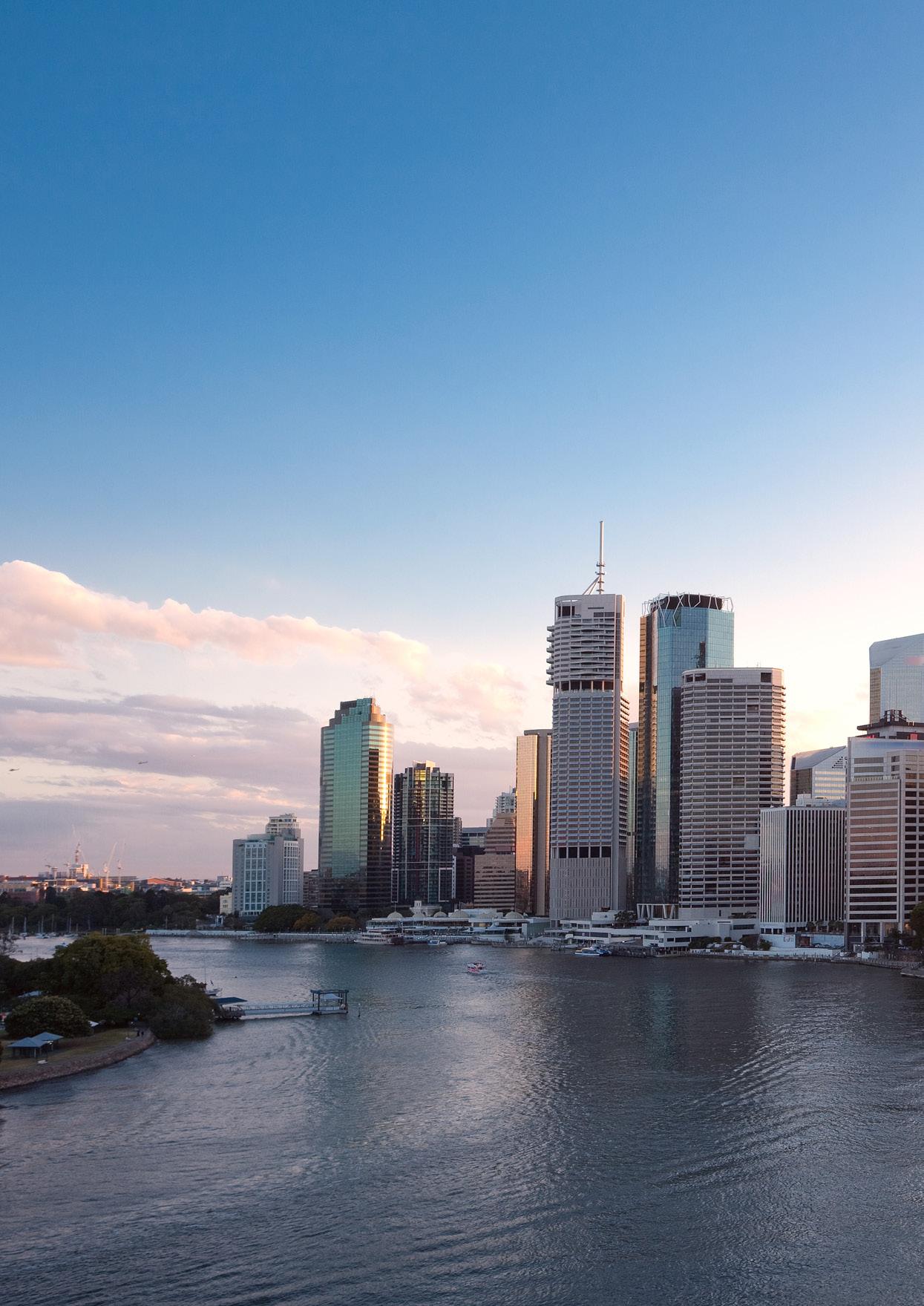
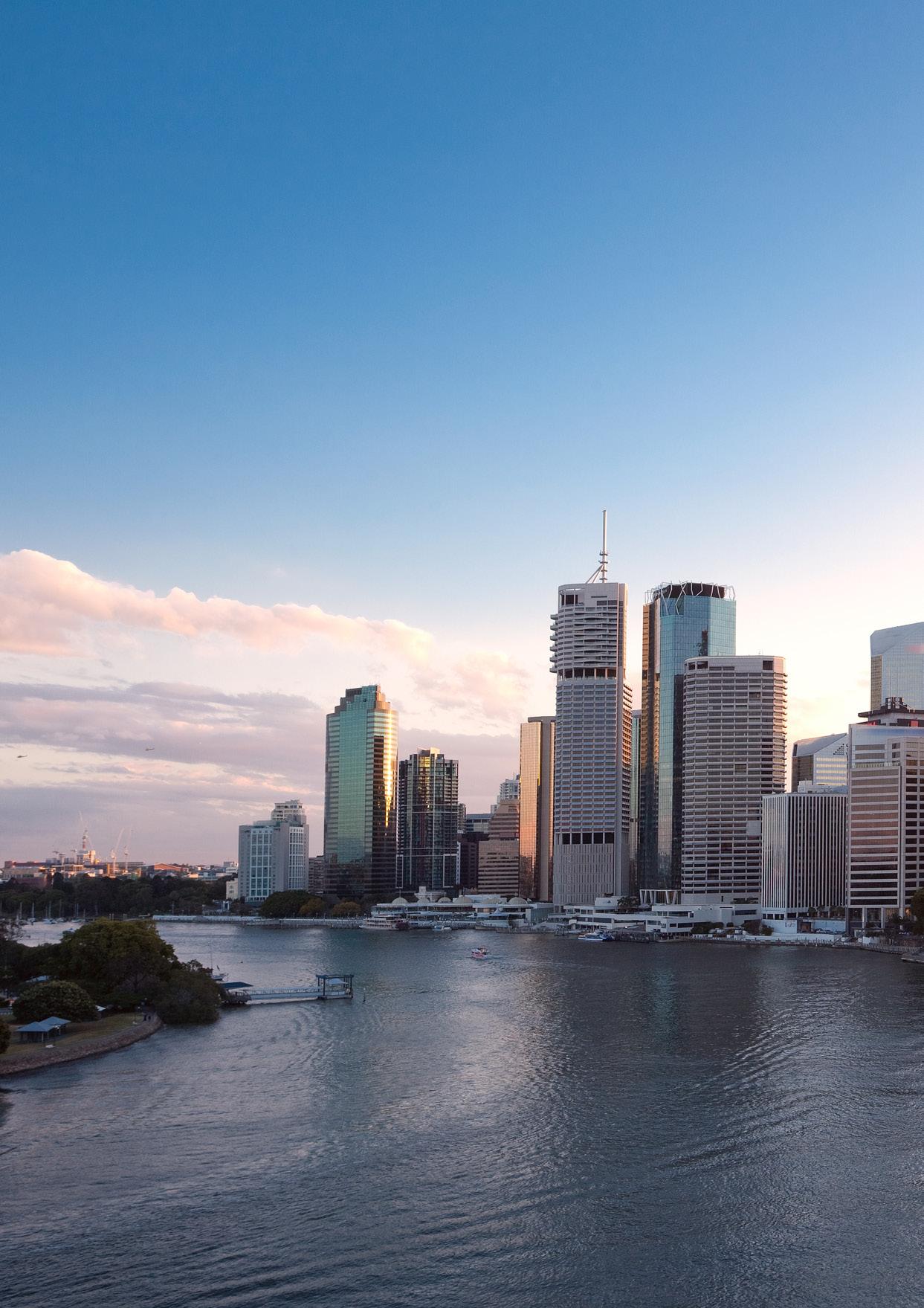
UTILITY • MAY 2018 WWW.UTILITYMAGAZINE.COM.AU
24 WATER MANAGEMENT

In December 2017, Infrastructure Australia released its report Reforming Urban Water: A national pathway for change to address the mounting challenges in the urban water industry and provide a case for a national reform while outlining the potential costs of inaction.
Water Services Association of Australia (WSAA) Executive Director, Adam Lovell, said WSAA welcomes the report as it has the long-term interest of customers in mind.
“WSAA supports the calls from Infrastructure Australia for a new national urban water reform plan and an independent national urban water reform body. It is good to see the strong and growing consensus around urban water reform that has developed between governments, water utilities and the private sector.
“While the industry is well regarded across the world and has made significant gains in efficiency and customer focus, WSAA agrees with Infrastructure Australia that the institutional environment in which the industry operates needs to evolve if it is to meet the challenges of the future,” Mr Lovell said.
VULNERABILITY IN THE SECTOR
Infrastructure Australia has highlighted the Millennium Drought of 1997–2012, the most severe Australian drought on record, as exposing a number of vulnerabilities in the sector.
The response to the drought saw a return to major supply-side and led to over $11 billion of investment (in today’s dollars) to augment supply through desalination plants. Because of this, the urban water sector emerged from the Millennium Drought with a resilient, high-quality and diversified supply.
However, the supply challenges faced and crisis-based response from governments during that time raised questions about whether decisionmaking processes, policy settings and institutional arrangements were delivering the most efficient and effective outcomes for the community.
Infrastructure Australia Chief Executive, Philip Davies, said, “If Australians want continued access to safe, reliable and affordable water in the future, we need to begin a staged approach to reforming the sector now — starting with a new national urban water reform plan.
“Now is the time for governments to get on with the job of bringing urban water policy, regulation and governance up to speed so that it can meet the changing needs of Australians in the twenty-first century.”
CONSEQUENCES OF INACTION
Factors such as climate variability and aging infrastructure could put upward pressure on the costs of delivering water services. In order to better gauge the potential impact these challenges have on affordability, Infrastructure Australia commissioned modelling to offer accurate projections on what the future of household water bills may look like.
The analysis found that without appropriate action, a typical residential water and sewerage bill could rise by around $600 in today’s money over the next ten years. By 2040, the average bill could be as high as $2553 in real terms — more than double what it is today.
Mr Lovell said that while WSAA hasn’t seen the detail behind the modelling of future price rises, it does know that substantial capital investment will be required to meet the water and wastewater needs of Australia’s growing cities, and this will ultimately be funded by customers.
“WSAA agrees that unless a new reform program is effectively implemented, customers could be exposed to rising bills in the coming years,” Mr Lovell said.
“We do know categorically that price spikes, caused by a number of factors, including political expediency, poor planning or adverse environmental or external shocks, cause customers distress and lower trust and satisfaction scores.
“We are seeing growing numbers of vulnerable customers who are more acutely exposed to any price increases. Programs such as the Thriving Communities Partnership are working across sectors (banking, energy and others) to reduce the pain and hardship experienced by these customers.”
The report states that for many families, growth in bills of this scale could cause significant hardship, ‘In the context of slow wage growth and rising cost of living pressures, including increasing bills across other forms of infrastructure, it is imperative that the urban water sector ensures services remain affordable’.
Infrastructure Australia suggests short-term measures such as running down legacy assets will do nothing to address long-term affordability of urban water services. "Instead, utilities – with the support of governments and regulators – should look to forward-thinking, efficiency enhancing solutions to service delivery and network management. Advances in technologies, processes and analysis can help utilities to extract more value from existing assets, which can lead to better services at lower costs," the report said.
25 UTILITY • MAY 2018 WWW.UTILITYMAGAZINE.COM.AU WATER MANAGEMENT
The call for national urban water reform
THE PATHWAY FORWARD
The report suggests that in order to reduce the challenges faced, the urban water industry should move away from a sector where governments balance roles as owner, regulator and policymaker, into a more sophisticated, well-regulated, responsive sector with stronger links between supply and demand, and clearer signals for efficient investment.
Infrastructure Australia has condensed its 12 recommendations into a three stage approach to reforming urban water.
Stage one
The first stage is for the Australian Government to establish a national reform pathway by the end of 2018, including agreeing to a new national urban water reform plan, establishing an independent national reform body and using incentive payments to drive reforms.
This national agreement should follow four national objectives outlined in the report:
• A focus on the long-term interests of users
• Efficiency and affordability
• Independence, transparency and accountability
• Security and resilience
Infrastructure Australia also called for an independent national champion of urban water reform. A body that would provide support to jurisdictions through their separate reform efforts, guide public discussions about urban water and call out instances where reforms are not being progressed as planned.
The report states that "the key to unlocking reforms across other states and territories is to examine what has worked, what may have been less successful, and how these can be applied across the country in a way that maximises benefits for customers and taxpayers".
Stage two
The second stage is to rollout nationally consistent reforms over the next five years. This includes refinements to regulation and governance in each state and territory, improvements to long-term planning and pricing frameworks, and enhanced collaboration between regulators.
Under this stage, regional outcomes should be prioritised to ensure customers outside major cities also benefit from progress in urban water delivery. Private participation should be encouraged where there is potential for it to improve services and reduce costs.
Stage three
The final stage is to consider further reforms over time, such as moving to a national regulator and privatising urban water assets.
The report suggests moving to a national regulator and privatising urban water assets could provide substantial benefits to customers if implemented in the right way—but it is important to recognise that the sector needs to be reformed first.
Mr Lovell said that while it welcomes the report, WSAA does not agree with all the recommendations.
“For example, we have not argued for national regulation, however we support minimum standards for state regulation. Minimum standards would help prevent fraying at the edges of the governance, institutional and regulatory settings that are not consistent with the long-term interest of customers.
“In relation to private ownership, WSAA considers this a matter for individual government shareholders to consider on a case by case basis. WSAA, in its submission to the Productivity Commission’s Draft Report on National Water Reform calls for the Commonwealth and states to negotiate a new National Water Agreement to progress urban water reform.”
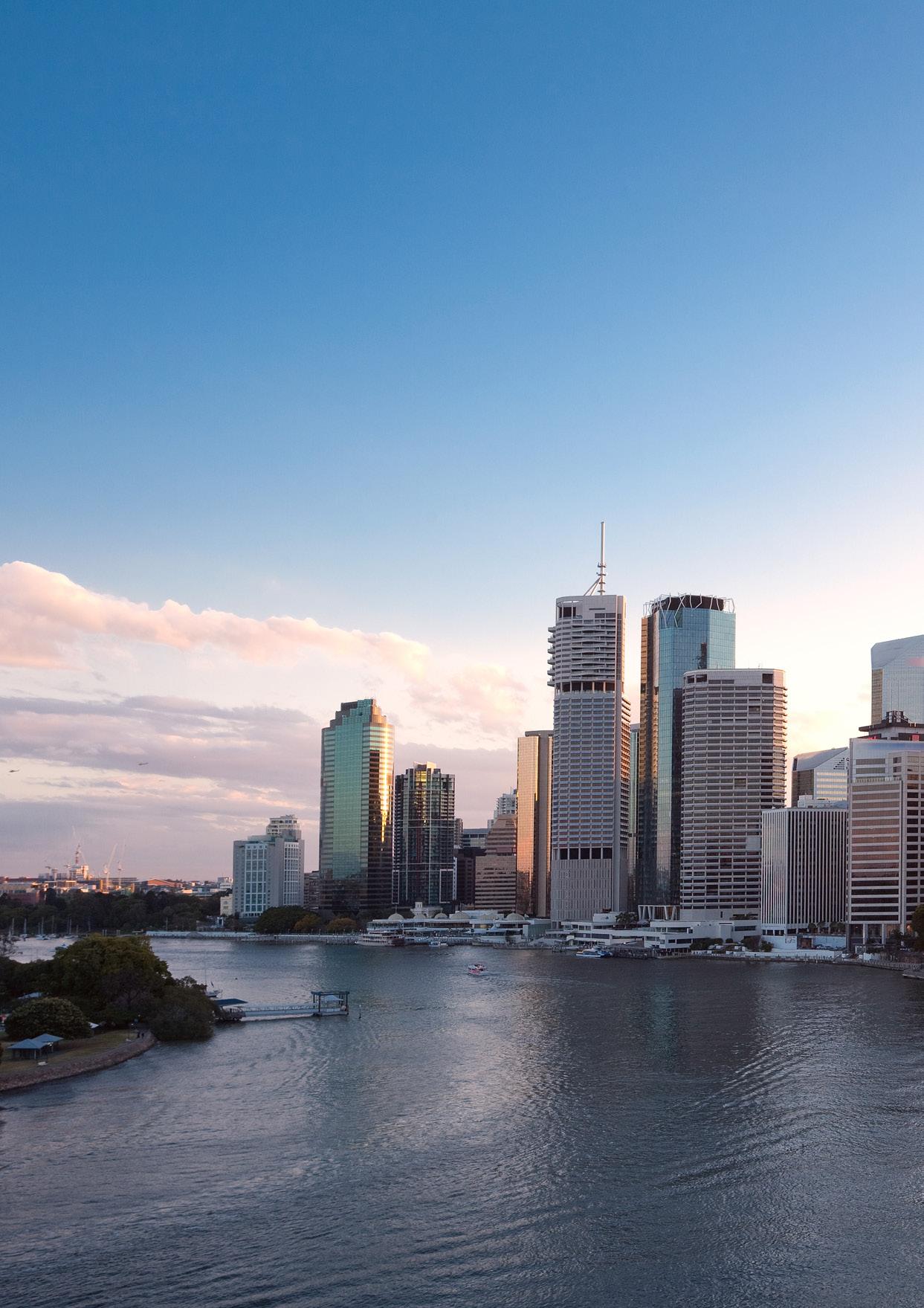
Infrastructure Australia has stressed that it is essential to take action before future challenges, such as another major drought or failing assets, prevent clear thinking on efficient, long-term solutions.
26 UTILITY • MAY 2018 WWW.UTILITYMAGAZINE.COM.AU
WATER MANAGEMENT
FILTEC ADDS EQUIPMENT SALES AND SERVICE TO ITS AUSTRALIAN PROJECT BUSINESS
Filtec has a long and outstanding reputation in New Zealand for providing specialist water treatment equipment and service to its municipal and industrial customers.
Since arriving in Australia in 2015, Filtec International has completed several substantial water treatment projects across a variety of applications.
In addition to our water and wastewater treatment project work we are pleased to announce the arrival of our equipment sales and service division into the Australian market.
Supported by our long-term partners Trojan, SUEZ, 3M, SATI and HACH we offer a large range of equipment solutions including package UV, UF, MF, RO, chlorination, hi flow cartridge filtration, analysers, self-cleaning screens and polymer dosing systems.
Filtec would also be pleased to discuss your ongoing plant service needs.


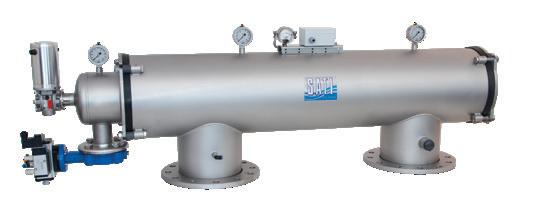
For further information on Filtec’s skills and capabilities for your water treatment equipment and service needs, please contact Alan Tan on 0413 844 308 or alan.tan@filtec.co.nz. You can also visit www.filtec.co.nz.

•
•
27 WATER MANAGEMENT
TROJAN UV SWIFT SC UTILITY • MAY 2018 WWW.UTILITYMAGAZINE.COM.AU Utility Partner Solutions New Compact OSEC® L electrolyser
sodium hypochlorite on-site and on-demand Plug & Play with pre-engineered hydrogen ventilation system Applications
Creating
Drinking water - remote chlorination stations
Commercial aquatics / pools / spas and theme parks
Industrial process water and cooling towers
Healthcare, Nursing Homes and Institutional facilities
Agricultural and irrigation - water reuse Key benefits
No hazardous chemicals required
Up to 400g/h chlorine equivalent
50% smaller footprint than other on-site generators
Colour touch screen operation
Certified to NSF/ANSI 61 Drinking Water Standard www.evoqua.com Ph 1300 661 809 sales.au@evoqua.com OSEC L Australien.indd 1 06.03.2018 09:02:16
•
•
•
•
•
•
•
•

TO COMBATING WATER CHALLENGES DIGITAL EFFICIENCY KEY
Australia’s booming population growth has created a need for new water infrastructure and increased maintenance on existing assets to cater for the growing demand. With so many projects underway it’s essential that they are managed efficiently at all levels and that contractors are competent and compliant with a variety of legislative and safety requirements.
With such a high number of water infrastructure projects geographically spread across Australia, there are a greater variety of contractors engaged to complete the maintenance and project work which requires more effective real-time systems that will add value and increase efficiency.
This means utilities and contractors need to know who’s doing what (and where) and what work is planned, to ensure projects run on-time. Additionally safety legislation is a major consideration, have all risks been identified and managed? Are workers able to simply report incidents?
In its recent report Reforming Urban Water: A national pathway, Infrastructure Australia outlined ‘Meeting the needs of a growing population’ as one of the main challenges facing the urban water sector.
The report, released in late 2017, said that to deal with population growth and the strain it’s causing on current water infrastructure, water services must take advantage of ‘shifts in technology and processes’.
The report states that technology can be an enabler of change in urban water and that “greater access to real-time information could hold benefits for customers and suppliers".
It’s this ‘real-time information’ that helps manage projects when there are many different contractors and moving pieces. For contractors and utilities to have access to realtime information they must have digitised systems in place, as paper-based systems don’t provide vision, efficiency or accurate communication.
DIGITAL SYSTEMS INCREASE EFFICIENCY
Digitising paper-based processes helps support collaboration and communication across projects; create efficiencies across an organisation as it removes manual admin tasks; and allows for projects to have auto-generated real-time notifications which supports asset management.
FiNAO is a solutions provider that works with organisations to digitise their paper-based forms and processes by creating an online system offering automatically generated notifications, automated workflow and real-time reporting.
FiNAO Director, Terry Down, said the main thing contractors are looking for in water infrastructure projects is to know what’s happening where and in real-time, so they can make informed decisions based on relevant data. Relevant data can include contract variations or types of defects. This real-time reporting feature (on relevant data) is a point of difference of FiNAO’s systems.
“Traditionally, through paper-based systems, there were delays in getting information to the right people, but our online management systems ensure users at all levels are getting the relevant information that they need in real-time,” Mr Down said.
“This allows for real-time planning so clients know what’s going on right now on their sites and they can plan more efficiently for this afternoon, this evening, tomorrow, the next day and so on. Using our systems allows them to measure progress, as well as reduce supervisor admin time by around 60 per cent, as they now only need to enter data once.
Supervisors can then spend more time doing the jobs they need to, rather than menial admin tasks.
28 WATER MANAGEMENT UTILITY • MAY 2018 WWW.UTILITYMAGAZINE.COM.AU Utility Partner Solutions

“The other challenge that we’re helping to combat is ensuring contractors and supervisors are competent and compliant the whole time. Previously, if someone became noncompliant there could have been a lag between the expiry of certification, insurances or tickets without knowing. Now they know in advance and can make appropriate decisions.”
Not digitising operations runs the risk of having outdated and incorrect information on projects which can cause a variety of problems. Real-time reporting makes projects more efficient, which in turn supports the overwhelming number of water infrastructure developments and maintenance projects across the country.
“As soon as you generate a report or download data and distribute within an organisation, it can become outof-date. Whereas, if you send people an email with a link to the appropriate data or report, when they click it they get the real-time information. Data can change rapidly and organisations need to have the latest information to make informed decisions,” Mr Down said.
PLANNING STAFF RESOURCES AND UNLOCKING VALUE
A fully automated system helps organisations unlock more value from their assets and projects by generating automated notifications and reminders when, for example, maintenance is required, based on the data entered and specific business and/or organisational requirements. This can ultimately lead to better services and more efficient resources at lower costs.
FiNAO’s online management systems are different because they are off-the-shelf solutions that can be customised to specific business requirements. Organisations can create a system that is directly tailored to their specific needs. A FiNAO system is scalable and flexible, and can grow and adapt as the business develops and needs change.
“Our systems are able to generate reminders for maintenance and services in real-time so asset managers don’t have to be continually checking spreadsheets and manual systems – it’s a completely automated process from start to finish.
“It also allows you to get the right resources involved at the right time and ensures they are available. Based on current requirements and/or work planned, you can assess what resource is required in the future months. Even with high risk and/or specialised work, you know what compliant resource you have so you can then plan and schedule that work around resource availability.
“For example, we have created systems for Sydney Water that plan specific resource activities over the next three months based on current requirements. So when a manager asks, ‘What resources do I need for these activities over the next three months?’ they can see exactly what they’ve got planned out (based on current FTE), which allows them to better plan ahead for managing assets, resources for the work that needs to be done,” Mr Down said.
FiNAO has two major systems in place at Sydney Water: the Delivery Management data portal and the SWConnect system.
Sydney Water’s Delivery Management team delivers most of Sydney Water’s capital investment program so they have to ensure projects are delivered safely, on time and within budget, and with minimal impact on the community and environment. To do this, the team needs to manage hundreds of project sites. The Delivery Management data portal custom system allows Sydney Water to on-board hundreds of staff and projects and using the system, work is allocated and managed as part of a collaborative contracting model.
The online system tracks and manages the progress of multiple construction projects (of various values) in line with GC21 contract conditions utilising accredited management systems compliant with ISO 9001 - 14001/AS4801 and Australian Federal Government Safety Commission accreditation scheme.
“Whether you’re a big company like Sydney Water or you’re just trying to meet your legislation and safety requirements, you need to be able to effectively collaborate and communicate with your people. Our systems allow this at all levels, so businesses can explain what’s going on, particularly to people like the unions and the board. Digitisation allows this to happen very quickly.”

If your business is keen to explore the gamechanging opportunities for digitisation within your organisation, FiNAO is offering Utility readers with a complimentary consulting session. For more information on how FiNAO can create an online management system with real-time reporting for you, head to finaomanagementsystems.com.au or contact Terry Down at terry@finao.com.au or 0413 481 070.
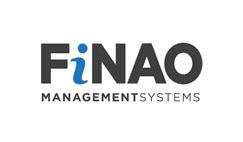
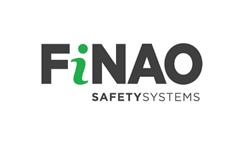
WATER MANAGEMENT 29 UTILITY • MAY 2018 WWW.UTILITYMAGAZINE.COM.AU Utility Partner Solutions
Raising the roof on
SUSTAINABLE WATER SUPPLY
Many townships and cities around Australia are experiencing dwindling water resources. Wannon Water’s roof water harvesting project is a leading example of integrated water management, using water from household roofs to supplement existing water supplies and support more liveable and sustainable cities.
 WANNON WATER'S BRANCH MANAGER ASSET PLANNING
WANNON WATER'S BRANCH MANAGER ASSET PLANNING
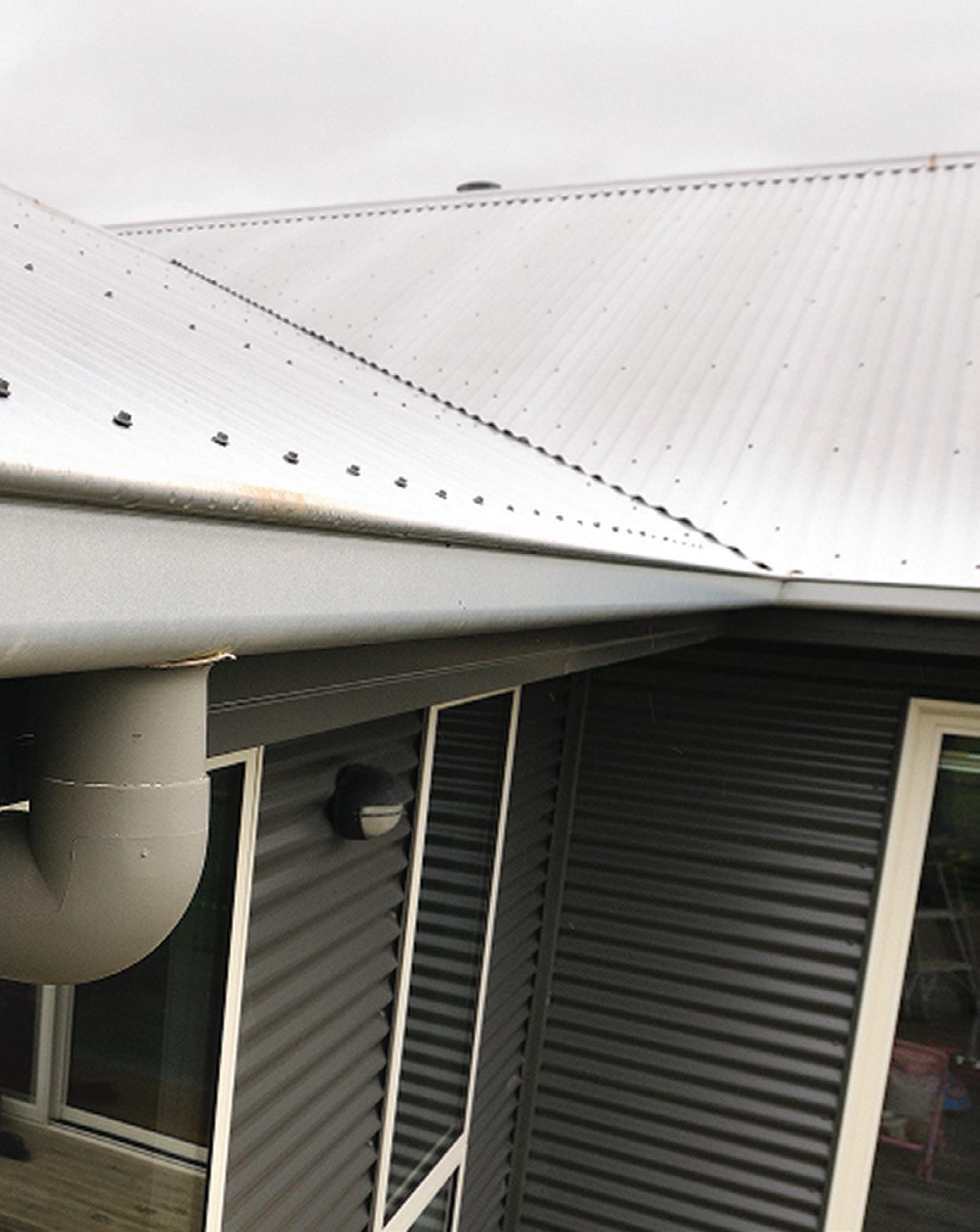
Wannon Water is an urban water supply corporation serving the south west of Victoria, including the provincial centre of Warrnambool, a fast growing city facing increasing water demand.
The Warrnambool Roof Water Harvesting Project is a leading example of water-sensitive urban design that is sustainable, cost effective and environmentally friendly.
It promotes the use of an alternative water source to help meet the challenges of adapting to climate change without imposing unreasonable requirements on developers.
The project ‘taps’ a new water catchment by capturing water from rooftops in new residential or industrial subdivisions that would otherwise be lost to run-off. This water is then directed for treatment to supplement the urban water supply.
The harvesting of roof water in urban environments has the combined effect of contributing to the city’s water resources, plus reducing the severity of rainfall events on the natural creeks and waterways in the catchment.
The award-winning scheme, which won the 'Infrastructure Project Innovation Award' at the Australian Water Association’s Victorian Water Awards in December 2017, is a partnership between developers, Wannon Water and the Warrnambool City Council, and is also supported by the Australian and State Governments.
The core aim of the project is to address a number of the detrimental factors associated with urban development by:
• Utilising the available water in the urban environment - within that urban environment - rather than placing further pressure on rivers and groundwater sources
• Reducing the volume that causes a detrimental impact on the streams downstream of urban development
• Avoiding the need to transport water from up to 100km away
• Deferring the need to augment water supply systems to transport ever-increasing volumes of water over long distances
• Addressing the water quality concerns of accessing the roof water run-off
• Reducing the carbon footprint of the water supply system
WATER MANAGEMENT
PETER WILSON AT BRIERLY BASIN

ACHIEVING INNOVATIVE OUTCOMES IN THE WATER CYCLE
Stage one of the Warrnambool Roof Water Harvesting project was launched in the city’s Russells Creek residential growth corridor, at the corner of Whites Road and Aberline Road, in 2011.
The $3.8 million project involved a dedicated pipe network comprising around 2km of trunk mains and more than 2km of smaller collection pipes installed within the new subdivision.
Water from 180 new houses is transported through the pipes to Brierly Basin where it is mixed with other raw water and then treated at the Warrnambool Water Treatment Plant, supplementing the city’s regular drinking water supply.
Property owners still have the option of collecting rain water for their own use such as in gardens. They can install a tank to collect the water and direct any overflow to the scheme. Alternatively they can have no tank and direct all their roof water to the scheme.
The project has a range of social benefits including:
• Sustainable housing - Connection to the roof water harvesting system satisfies the water conservation/ reuse objective of the six star house energy rating requirement. Home owners can meet the water conservation requirements without additional costs. They also save around $5000 by avoiding the need for water-tank-to-toilet and garden tap systems (this can still be installed if the owners wish)
• Public health and safety - When compared to private water tanks or recycled water options, this concept is superior in that the risk of cross-connections or poor tank water quality is removed
• Liveable cities and amenity – More backyard space is available for other uses if water tanks do not need to be installed or attached to houses. Other amenities in the subdivision are not compromised, as more than half the urban stormwater volume is still available for Water Sensitive Urban Design initiatives such as wetlands
• Lower water bills - A water supply system that provides water without pumping and is assessed as the lowest augmentation cost for water will result in lower prices overall. Better quality water provided from roofs rather than rivers also has lower treatment costs
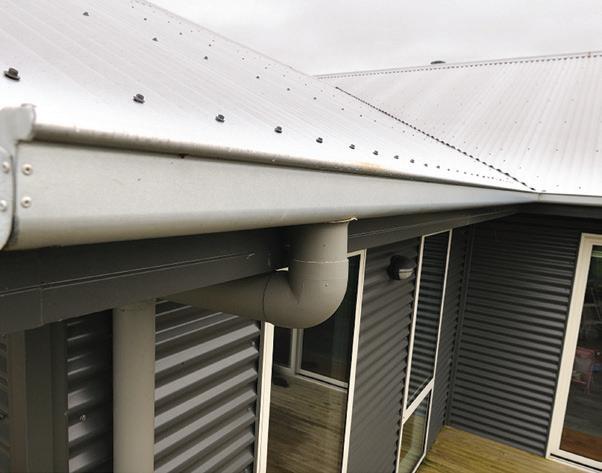
A LONG-TERM STRATEGY FOR FUTURE GROWTH
The scheme will progressively expand as development occurs across the north-eastern area over the next 25 years. Eventually, roofs on 3000 new homes will form an urban catchment and contribute around 471 megalitres of water a year to supplement Warrnambool’s urban supply.
The project is also expanding to the Gateway Business Park in Horne Road, East Warrnambool.
Wannon Water has worked with the developers to design the industrial estate’s pipe network and pumping station.
Roof water will be collected from sheds built during stage one of the development and piped to the existing Dales Road raw water storage basins. It will be transferred to Brierly Basin and then to the Warrnambool Water Treatment Plant where it will supplement the city’s regular urban supply.
Due to the large roof areas and the flat land in the estate, each industrial site will require above-ground tanks allowing the flow entering the basins to be regulated. The scheme requires a designated buffer volume, dependent on the roof area, but property owners still have the option of installing a larger tank and reserving the extra volume for their own use.
The pipe works are planned for completion in the 2017/18 financial year and, when fully developed, this stage is expected to harvest 25 megalitres per year.
31 WATER MANAGEMENT UTILITY • MAY 2018 WWW.UTILITYMAGAZINE.COM.AU Utility Partner Solutions
Experts assemble:
SIMPLIFYING TURBIDITY READINGS
The common issues operators face using a turbidimeter include instrument maintenance, bubbles in the sample and exposure to chemicals. To find a solution to these challenges, Lovibond® Tintometer® assembled a team of globally recognised turbidity and process instrumentation experts who have created a user-inspired secure system with significantly reduced complexity.

The process of turbidity monitoring is necessary under the Australian Drinking Water Guidelines to ensure that filtration is optimal and produces safe drinking water. Turbidimeters are used to review short-term performance of filtration as well as monitoring their long-term effectiveness over months and years under a full range of challenges.
The turbidimeter has evolved slowly over its life span with the process remaining largely unchanged and complex. Operators encounter the same problems including excessive instrument maintenance to ensure read accuracy, bubbles in the sample compromising the turbidity reading and the handling and exposure of chemicals in the standards. These issues, if not controlled, can affect the accuracy of
the turbidimeter creating false data.
With these issues in mind, the team of experts produced a solution that carefully considers every aspect of process turbidity workflowfrom installation and setup; daily measurement and control; routine procedures such as calibration, verification and maintenance; to data collection and management.
USER-INSPIRED DESIGN
Unlike traditional turbidmeters, the PTV Series requires little maintenance. Focused on simplicity, the PTV series eliminates the need to change light sources regularly and has a thoughtful, easy to clean design.
The body has been optimally designed to provide faster response to turbidity spikes due to its low volume flow; the optimal flow rate of the
instrument is 40 to 80ml per minute. This uses far less water which, over the lifetime of the instrument, translates to over three million litres of water saved per instrument versus competitive instruments.
THE SMARTER WAY TO CONTROL
The PTV 1000 and PTV 2000 allow two ways for operators to interact with the instrument. They have the option to use the integrated touchscreen interface on the unit itself that is able to perform all functions. Or operators can interact with an unlimited number of turbidity sensors using an app installed on a smartphone or tablet. The AquaLXP app eliminates the need for dedicated controllers for each instrument which allows for maximum flexibility with changing regulatory requirements and operator needs. A record of every reading, calibration, verification, cleaning or other maintenance performed over the lifetime of the sensor is automatically logged into the instrument history. The AquaLXP app makes it easy to extract and analyse data such as upper and lower control limits and percent compliance over a selected time frame which can be viewed as a table or graph.
For added security, the app is password protected and only operators within a certain physical proximity of the PTV sensor can connect to it assuring data integrity.
With the PTV series ability to easily interface, export and analyse data, getting accurate turbidity readings has never been easier.
32 WATER MANAGEMENT UTILITY • MAY 2018 WWW.UTILITYMAGAZINE.COM.AU Utility Partner Solutions
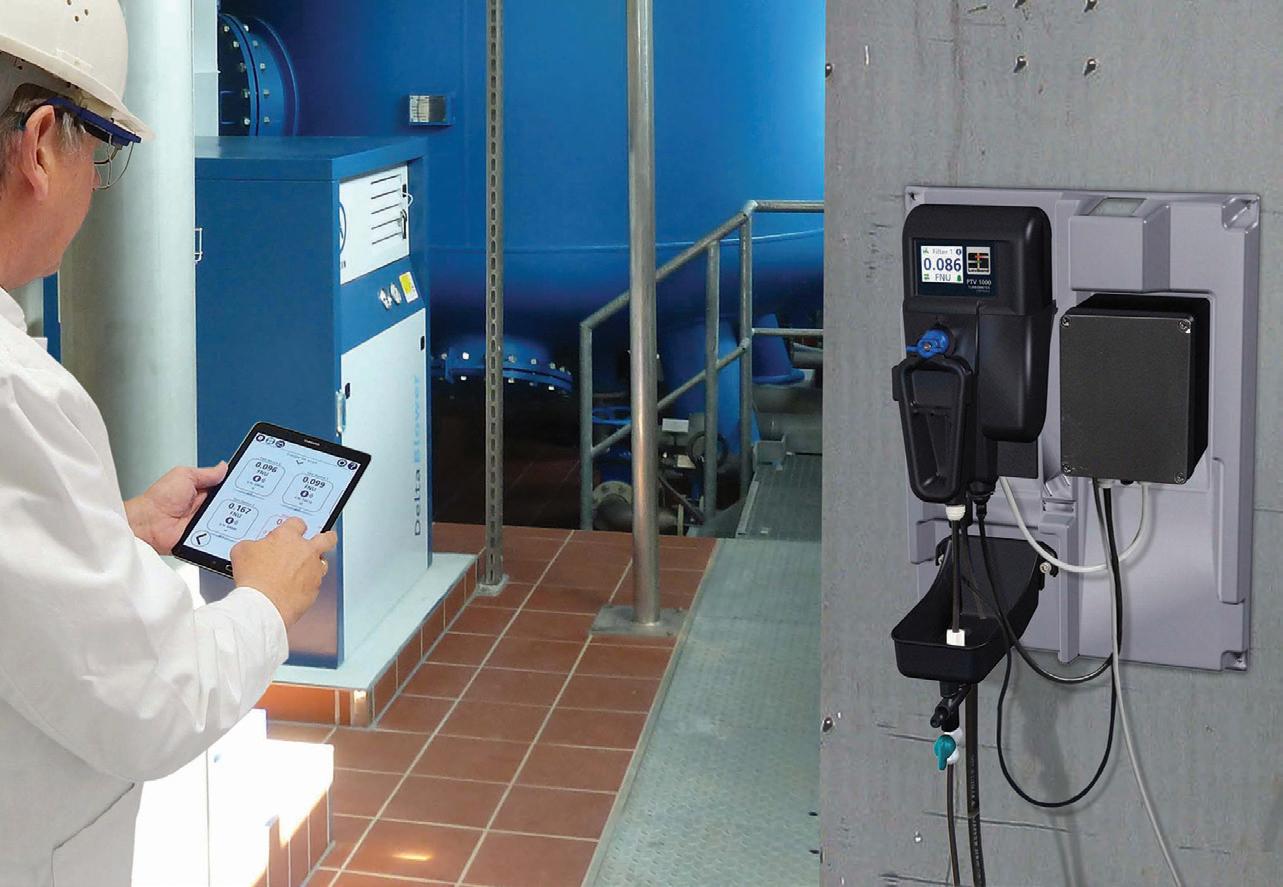
Save time, money and water with the Lovibond® PTV Process Turbidimeter Series.
• • Smart interface
• • Simplified and streamlined processes
• • Innovative low maintenance design
• • Unsurpassed accuracy for low-level effluent measurement
• • Regulatory compliant
The development of the PTV Series considered every aspect of the process turbidity workflow. With no light bulbs to change, an easy to clean design and safe calibration procedures, it’s not hard to see the benefits. Call: 1300 735 295 Email: infowaterAU@thermofisher.com
Find out more at thermofisher.com.au/Lovibond-PTV
© 2018 Thermo Fisher Scientific Inc. All rights reserved. Trademarks used are owned as indicated on thermofisher.co.nz/trademarks. 1520987715
User inspired design Lovibond ® PTV Process Turbidimeters
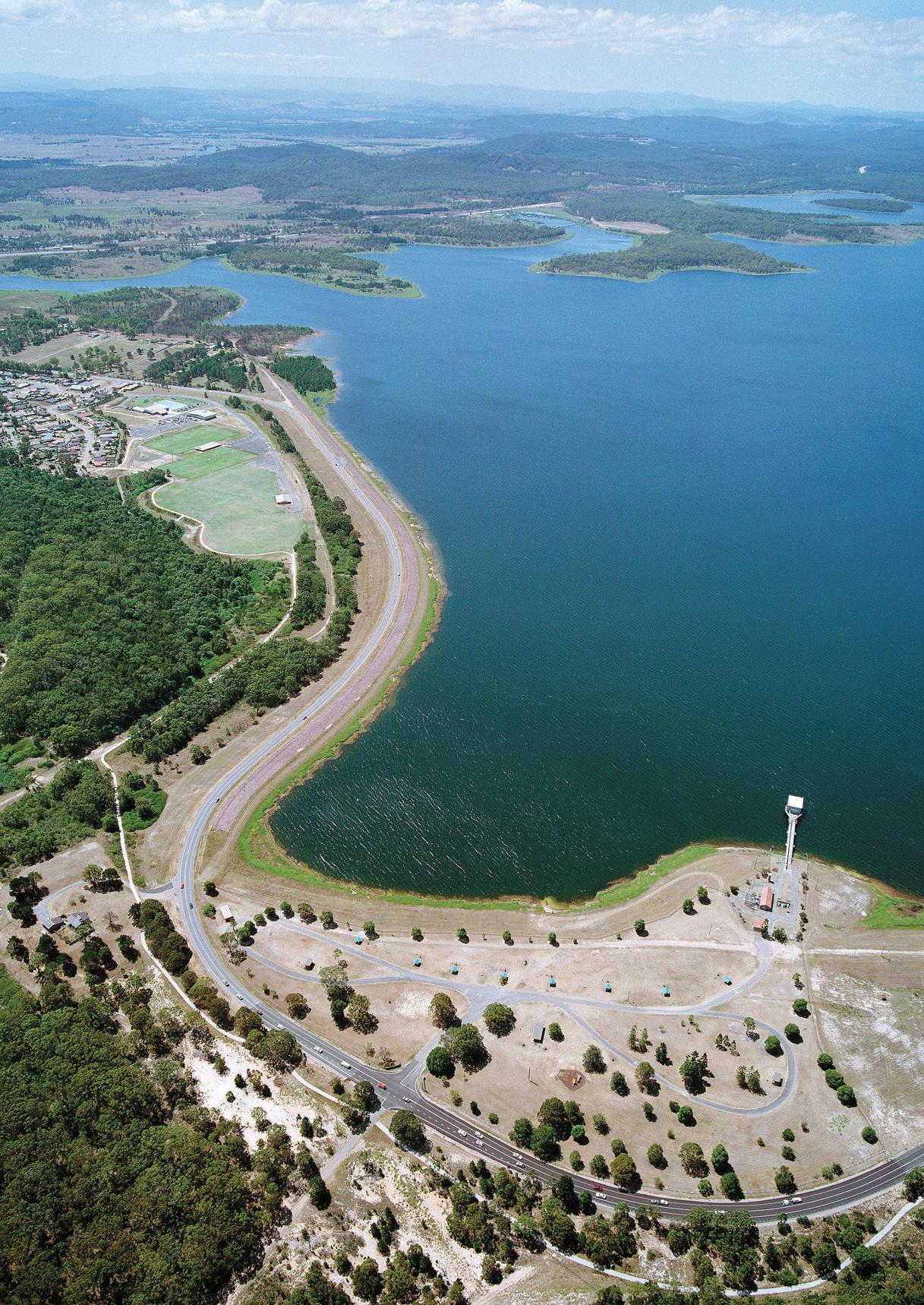
BLUEPRINT TO AID WATER CONSERVATION DURING TOUGH TIMES
As prolonged drought conditions threaten the water security of the Hunter region in NSW, Hunter Water has initiated plans to build a temporary desalination plant and other water saving measures to try and help secure the future of the region’s vital resource.
34 WATER MANAGEMENT
GRAHAMSTOWN DAM
Hunter Water sought approval from the Department of Planning to construct the plant on Hunter Water land at Belmont in November 2017 as an ‘on the shelf’ insurance policy in case an unprecedented drought were to hit the region and water storage dropped to 35 per cent.
Hunter Water also commenced their water conservation campaign, Love Water, in February 2018 to lead community engagement about raising awareness and behaviour change around water use.
The campaign is part of the utility’s integrated attempt to help avoid water falling to levels that may trigger the need to build the desalination plant or other large source augmentation solutions.
“The programs are designed to make people curious, and we think two-way engagement is much more likely to bring about large-scale behaviour change,” Hunter Water Managing Director, Jim Bentley said.
“We believe this is the first time a water utility has approached complex systems involving people, water security, environment, risk and cost in this way.”
PREPARING FOR WORST CASE SITUATIONS
According to Bureau of Meteorology mapping, some pockets of the Upper Hunter are experiencing a one in 20-year rainfall deficiency.
Hunter Water Chief Investment Officer, Darren Cleary, said part of being ‘drought ready’ meant having approvals in place for the worst of the worst scenarios.
“The Lower Hunter Water Plan is a 20-year water security blueprint for the Hunter which determined that while our water storages are sufficient for now, we need to be prepared for extreme drought conditions.
“Having planning approvals on the shelf and ready to go for a temporary desalination plant is an insurance policy in the event a catastrophic drought hits the Hunter.”
Prolonged dry conditions have taken a toll on Hunter Water’s dams, which were at their lowest summer levels in more than a decade in February 2018, with their total storage capacity hitting a low of 68.2 per cent.
The harsh conditions also saw demand for water increase by 20 per cent in January 2018, compared to the same period over ten years, with the region using on average, 260 million litres a day, which is the equivalent of 104 Olympic swimming pools.
“Although the odds of switching on the plant are in the order of 10,000 to one, we won’t take the chance of running out of water because our planning approvals were not in place. Gaining approvals now means we’re ready for the worst,” Mr Cleary said.
The month of January 2018 also recorded the highest water usage since November 2002.
Construction of the plant will only come after all other water-saving measures have been exhausted, including increased recycling, stormwater harvesting and stringent water restrictions, and would be decommissioned when storage levels rise above 50 per cent.
The preliminary environmental assessment for the temporary desalination plant went on public exhibition in November 2017, with Hunter Water commencing community consultation in early 2018.
While the temporary desalination plant is an emergency measure rather than part of Hunter Water’s long-term water resource planning, the utility has activated a new conservation campaign to encourage the community to preserve the precious resource.
FOR THE LOVE OF WATER
Hunter Water Managing Director, Jim Bentley said given the current climate and rising usage, the utility wants to work on conserving water in its own network and with the community, which is why it launched the Love Water campaign.
The campaign was launched on 14 February 2018, to coincide with Valentine's Day with the aim to increase awareness about falling supplies and encourage residents to show love for the region’s water supply.

“The Love Water campaign is about promoting curiosity in the community and encouraging people to value and conserve the resource, so the region can keep its options open on the future of water,” Mr Bentley said.
“When people love something they protect it, care for it and value it. We’re hoping people apply those same attributes when using water around their home or business."
The campaign aims to educate households and businesses in the region about ways they can be more efficient with their water use.
“It’s vital we do everything we can to conserve water and not take it for granted. Together, we can make a difference. Water belongs to all of us and we all have a role to play in preserving our most precious resource to ensure it’s viable for future generations,” Mr Bentley said.
“Our intention is to be well prepared for the future with an informed customer base who have helped shape our strategy. This will build a more resilient and sustainable system, and avoid risk of serious water shortages at an affordable cost and at the same time provide opportunity to evaluate new technologies.”
35 WATER MANAGEMENT UTILITY • MAY 2018 WWW.UTILITYMAGAZINE.COM.AU
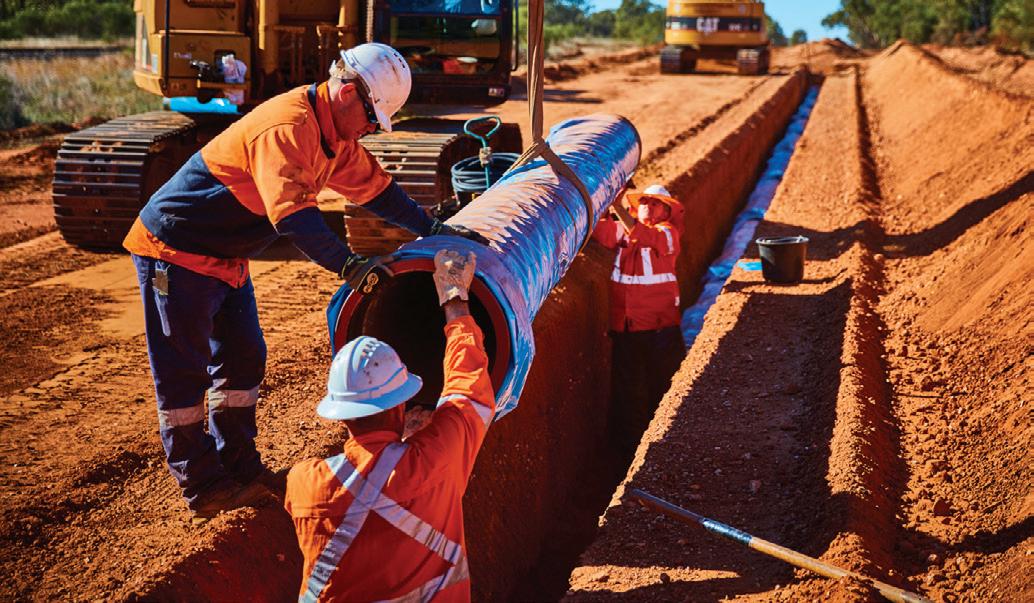
Infrastructure upgrade for the NYNGAN TO COBAR WATER SUPPLY PIPELINE
By leveraging its supply chain and logistics capability, Iplex Pipelines delivered the ideal solution for infrastructure security on stage one of the Nyngan to Cobar pipeline upgrade.
Ductile iron pipe and fittings have been long recognised as a suitable pipeline solution for civil infrastructure projects, designed to transport water and sewage over large distances and across challenging pipeline trajectories.
The history of pipeline infrastructure where ductile iron has been chosen as the design solution of choice, has generally been underpinned by the performance, longevity and reliability achieved when specifying this pipe material.
Supported through its association with the Northern Iron and Brass Foundry in Innisfail, Iplex has been involved in the design, manufacture and supply of ductile iron pressure pipe and fittings to the Australian market for over a quarter of a century.
These products include pipe, fittings, valves and accessories ranging in sizes from DN80 – DN750. Pipe is available in lengths of up to 5.75m and can be supplied with optional internal linings including concrete, calcium aluminate or polyurethane.
Iplex’s range also includes Flanged pipework in all diameters, available in customised lengths of up to 5.5m in PN16 and PN35 pressure ratings. The ductile iron range is supported with products for jointing to PVC Pipe Systems, including universal couplings and gibaults that can be used in the repair of pipework within these systems.
INVESTING IN LONG-TERM WATER SECURITY FOR COBAR
The Nyngan to Cobar pipeline supplies water to the Cobar Township via two high pressure parallel pipelines, stretching between both towns for a distance of 127km.
The first line is a 300mm diameter, mild steel cement lined (MSCL) pipeline installed in 1964 and the second, a 375mm ductile iron cement lined (DICL) installed in 1983.
With visible signs of deterioration in the mild steel
pipeline number one and ongoing maintenance forecast to increase expenditure to ensure pipeline integrity and performance, it was concluded that a complete replacement of the pipeline be undertaken.
The first stage identified for renewal, a 30km section of the 300mm diameter mild steel line, was selected for upgrade to a 375mm ductile iron concrete lined (DICL) during early 2017.
SUPPLY CHAIN PERFORMANCE DELIVERS PIPE ON SCHEDULE
National Australian Pipelines was contracted to design and supply the first stage of the pipeline upgrade, connecting the townships of Nyngan and Cobar located in central New South Wales.
With the pipeline installation positioned over 700km from Iplex’s operation in Sydney, managing the supply of ductile pipe and fittings was undertaken by the NSW civic project team.
The 30km section that was replaced required 5211 lengths of DN375 PN35 DICL pipe, supplied in 5.75m lengths. This volume of ductile iron pipe equalled more than 130 semi-truckloads, requiring a coordinated delivery program that aligned with the project’s construction schedule.
A synchronised approach was central to the partnership between Iplex’s distribution team and National Australian Pipelines’ on-site project managers, with pipe shipments delivered in stages that were in sequence with the installation timeline.
Iplex’s experience in managing projects of this scale supplied a quality pipeline solution for National Australian Pipelines, whilst meeting the customer’s budgetary and safety constraints.
To reduce the risk of delays to the project’s installation, Iplex’s quality assurance team in Sydney reviewed each individual pipe prior to shipment.
This stringent regime ensured that all product delivered to site had been inspected to guarantee compliance with the relevant Australian Standards for ductile iron products.
The measure of success in this pipeline upgrade, where the coordination of supply chain, logistics and project partnership is pivotal to success, further identifies Iplex Pipelines as Australia’s pipeline specialists.
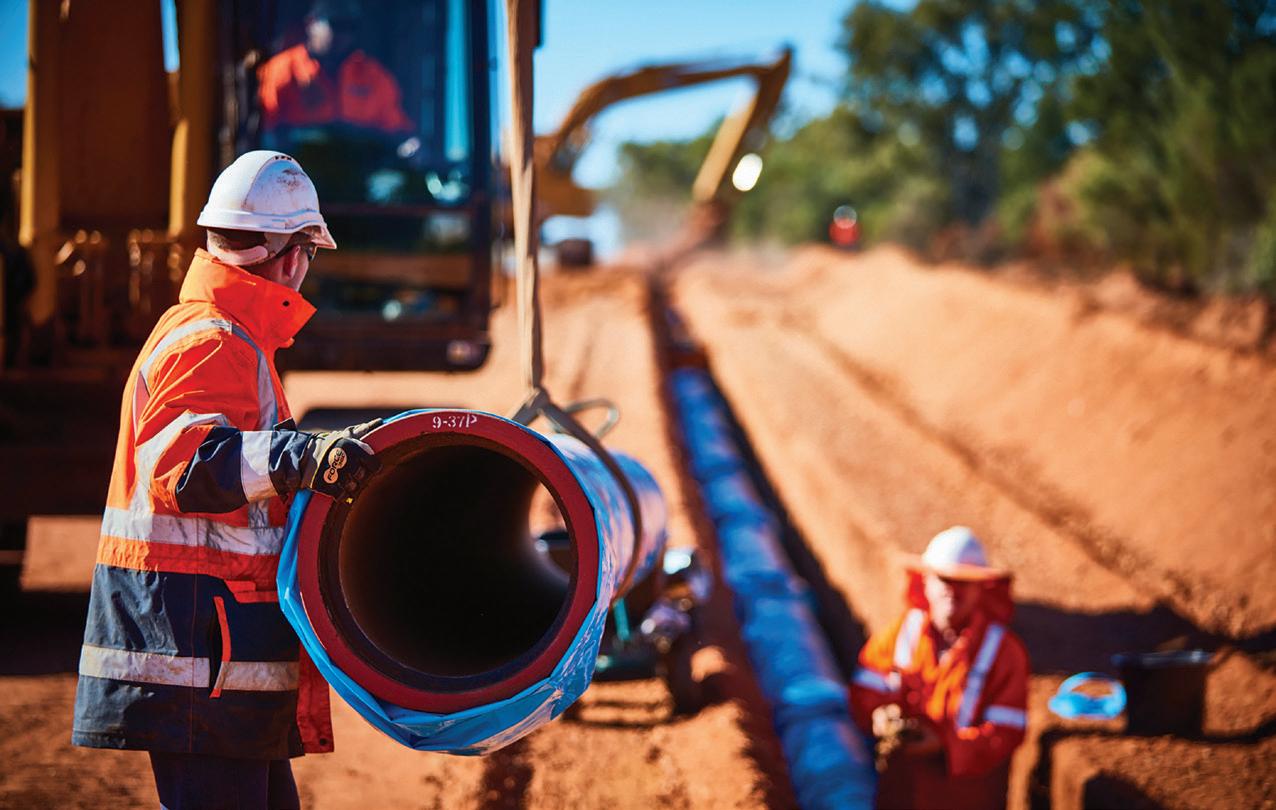
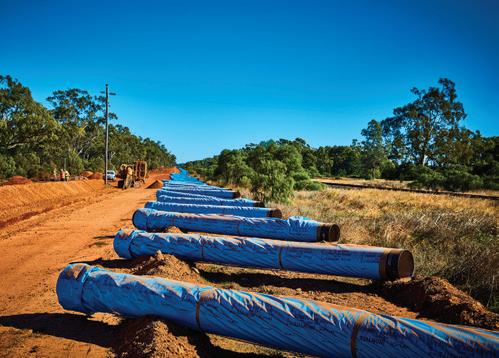
36 WATER MANAGEMENT UTILITY • MAY 2018 WWW.UTILITYMAGAZINE.COM.AU Utility Partner Solutions
SPECIALISTS IN PIPELINE INFRASTRUCTURE SOLUTIONS


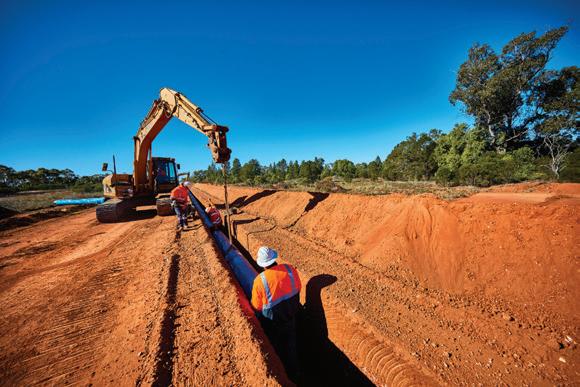
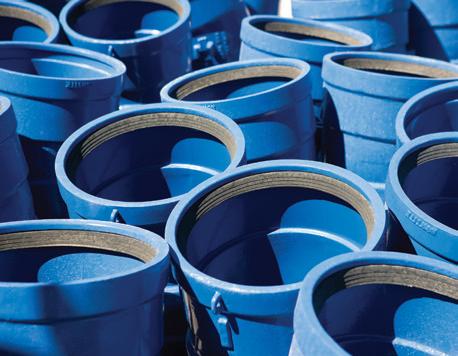
With an extensive range of Ductile Iron Pipe and Fittings, Iplex are your partners of choice in providing pipeline solutions for all civil infrastructure projects.
UTILITY • MAY 2018 WWW.UTILITYMAGAZINE.COM.AU 37
CIVIL 13 10 86 • DESIGN@IPLEXPIPELINES.COM.AU • IPLEX.COM.AU CIVIL
VISUALISING DATA IN THE WATER AND SEWERAGE INDUSTRY
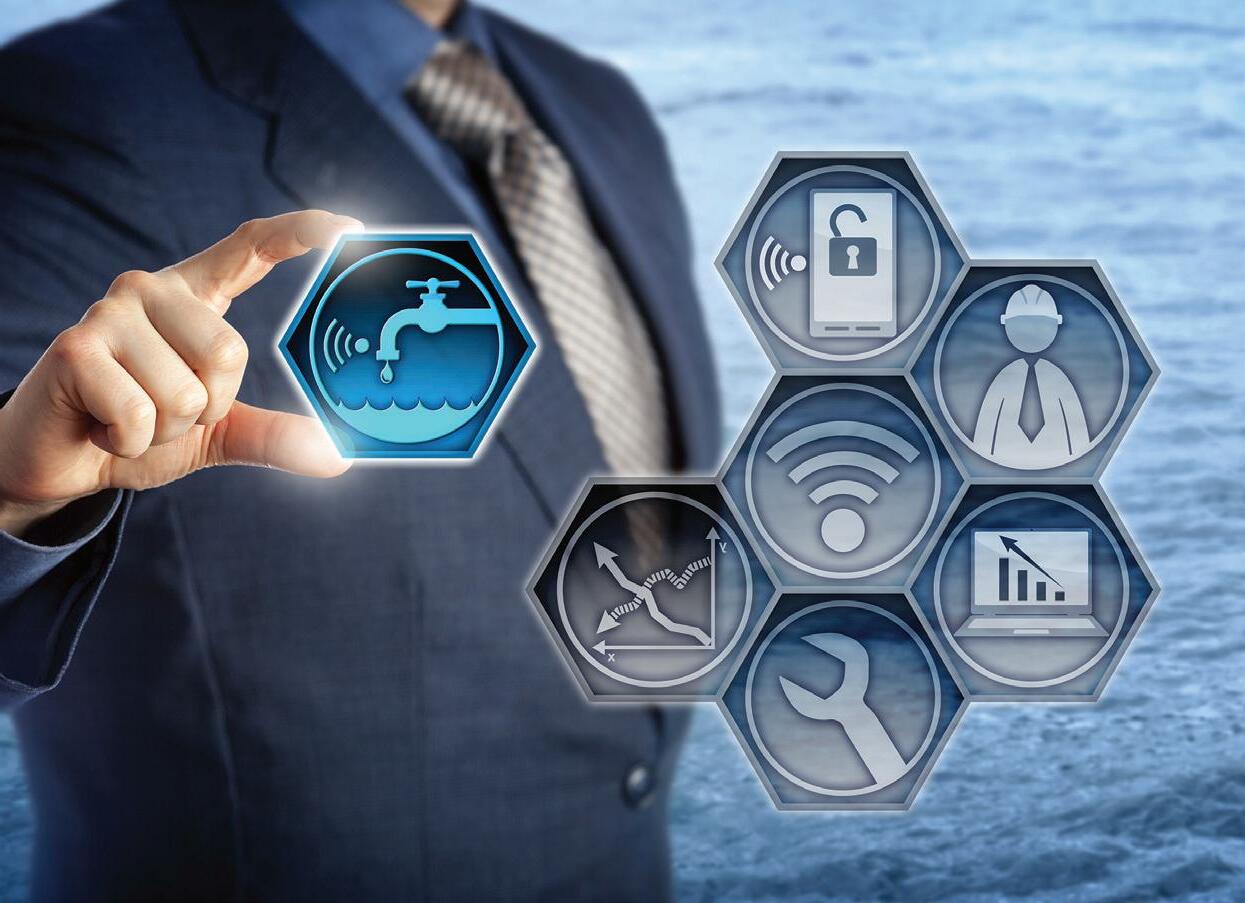
A partnership between the Queensland Water Directorate (qldwater) and Lutra is providing urban water service providers with powerful analytics and better visualisation of data at a local level.
n 2006, qldwater created the Statewide Water Information Management (SWIM) project to help simplify the reporting requirements of Queensland service providers. The SWIM system has done this through removing duplication, aligning reporting times, advocating for improved definitions and indicators, and improving data entry QA/QC through the use of a database for data entry. qldwater members using SWIM now report about one quarter of the indicators they used to and in one format at one time.
Following the success of this significant piece of work, qldwater wanted to add more value for members by introducing a data management tool (SWIMLocal ) that is seamlessly linked to SWIM and which allows service providers to better manage their daily water and sewerage data. A key part of this strategy to improve data management and use is the development of dashboards to monitor operational performance.
According to qldwater SWIM Manager, Dr David Scheltinga, developing additional software tools in-house was an expensive, resource intensive and risky undertaking, so he started investigating commercially available “off the shelf” systems that would integrate with the existing SWIM database.
“We selected Lutra’s Infrastructure Data (ID) software system because their experience as a company of water and wastewater process engineers gave them a strong understanding of the processes and associated problems we were trying to solve, allowing us to get the best value from operational data,” Dr Scheltinga said.
ENHANCING THE USER INTERFACE
A set of customised dashboards and reports has been developed with input from a number of water treatment experts. The dashboards are designed to give operators and managers better visual trending information to support more efficient plant operations and improve transparency for decision makers. The new system is web-based so users can access the dashboards and reports across multiple locations and with mobile devices.
To date, the ID software has been trialled at four water treatment plants and two sewage treatment plants in Queensland, with more trials in the pipeline.
Burdekin Shire Council Manager Water and Wastewater, Shaun Johnston, said SWIMLocal took the best parts from Excel, databases and the Cloud to give an all-round more functional result.
UTILITY • MAY 2018 WWW.UTILITYMAGAZINE.COM.AU 38 WATER MANAGEMENT
“The system provides powerful reporting functions to simplify management of large volumes of data and now we have a visual dashboard that provides real-time monitoring,” Mr Johnston added.
“The new ID dashboards will broaden SWIM’s appeal to less technical people in the management area and extend its value to operators in a user-friendly, customer-focused way.”
DRIVING DOWN COSTS THROUGH COLLABORATION
The collaboration with Lutra has avoided significant development costs for qldwater. Furthermore, Lutra have tailored its ID platform to meet the needs of service providers at a very affordable price, allowing qldwater to deliver best value to members.
Recent analysis from Fraser Coast Regional Council, as a new subscriber to the fully licensed SWIMLocal product, estimated that the system will save 256 days per year (or approximately $70,000) across various roles for a $5000 investment in the SWIMLocal software.
Lutra CEO, Chris Laidlow, said the qldwater / ID partnership allowed the two organisations to create a fit-for-purpose platform informed by managers and operators with on the ground experience.

“By combining our specialist process engineering and operations management experience with local expertise and advice from SWIM users we have put together dashboard and report layouts that give SWIMLocal users access to powerful analytics, automated reporting and visualisation of water quality and treatment plant performance data.”
For Trevor Seth, Water and Sewerage Manager at Goondiwindi Regional Council, the biggest bonus was having instant access to both current and historical data.
“When Council engages consultants to review, design or upgrade processes, the first thing they ask for is lots of data. SWIMLocal allows us to pull a report on data with the selected parameters and, in our case, we can provide five years of data within minutes of the request.”
Qldwater will be supporting a number of new trial service providers for a period of twelve months. Barcoo, Burdekin and Goondiwindi are currently trialling the ID system with Gympie and Torres Strait Islands sites under development.
SWIM Manager, Dr David Scheltinga, and Lutra Product Manager, Maseina Koneferenisi, will be presenting a paper at the WIOA Conference in Logan on 6–7 June.
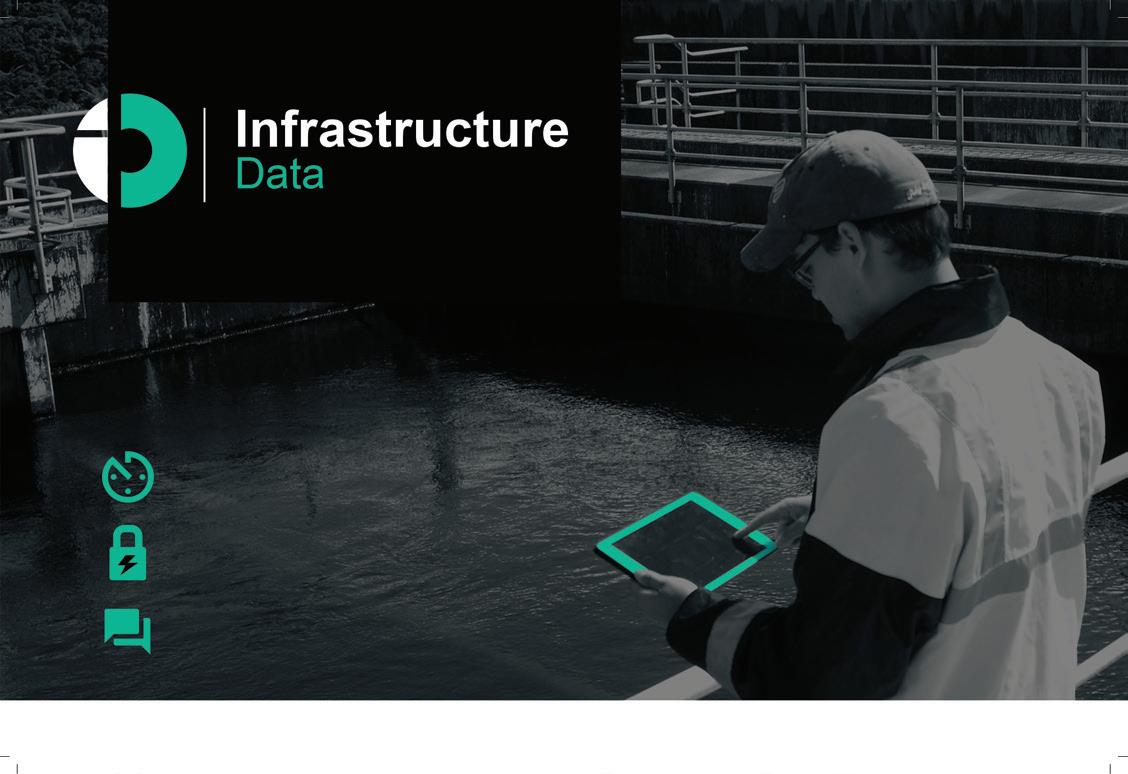

UTILITY • MAY 2018 WWW.UTILITYMAGAZINE.COM.AU 39 WATER MANAGEMENT
More info: infrastructuredata.com
SCADA EVERYWHERE – THE BENEFITS OF LPWAN COMMUNICATIONS TO SCADA MANAGERS
by Mark Halliwell, Taggle Systems
SCADA (Supervisory Control and Data Acquisition) Systems are a major contributor to the daily operation of most water service providers’ activities. A wide variety of sensors connected to RTUs (Remote Telemetry Units) or PLCs (Programmable Logic Controllers) collect data from, and allow control of, equipment located throughout the water supply system, from the point of raw water capture through to service reservoirs and sometimes beyond.
SCADA operators can never have enough useful data but there are some limiting factors on how many, and where, sensors are installed. Chief amongst these is the cost of the communications media required to get the data into the SCADA system and the cost of providing a suitable power supply for the sensor and associated communications hardware.
In the past, telephone lines were used extensively but these were expensive and susceptible to lightning strikes and the effects of moisture that played havoc with reliability. Point-to-point data radios using licensed spectrum and 3G modems came along and made many of these communication challenges much easier to overcome.
A downside, however, was the associated costs. Setting up a sensor, RTU and dataradio or 3G modem requires a sizeable power supply which can only be met by having a permanent 240VAC supply, a battery-backed solar powered setup or, in extreme cases, a battery-powered site that requires a site visit every few months to replace batteries.
The economic burden of these costs has limited the number of devices that could be deployed, leaving operators without much of the context that would make their interpretation of operational situations so much easier.
NEW POSSIBILITIES THANKS TO LPWANS
The advent of Low Power Wide Area Networks (LPWANs) is presenting SCADA managers with opportunities to rethink their data needs and explore the possibility of acquiring data from many aspects of their water and wastewater management systems that previously were beyond economic reach.
Battery-powered sensors providing regular updates over years of maintenance-free field life are now a reality. Sensors with low-cost communications can now be viewed as “fire and forget”, to be visited only when there is a site issue or

the sensor is to be moved to a new location.
Take, for example, a simple rain gauge. A good quality rain gauge costing $800-$1200 generally requires equipment and installation costs of an additional $5000-$10,000 to collect its data remotely. With a Low Power Wide Area Network in place and battery-powered transmitters capable of providing hourly updates for ten years or more available for about $200-$250, including ten years data delivery, the overall cost is greatly reduced.
These lower costs now make it possible to deploy many more rain gauges, providing far greater context around rainfall, water consumption habits, the effects on inflow and infiltration on wastewater networks and more.
Being able to determine if a pipe is being affected by inflow or infiltration through correlation of sewer levels with rainfall data can save many thousands of dollars in testing costs.
But what about other sensors? Having generic transmitters suitable for use with industry standard outputs (discrete, pulse, analog 0-10v, 4-20mA etc as well as serial protocols such as Modbus and SDI-12) means Taggle’s LPWAN can offer data acquisition for many sensors already used by Australia’s local councils and water utilities. Pressure, sewer overflow, level and flow are just a few of the sensors that can be deployed to present a more detailed picture of what’s going on.
Are you worried about getting the data into your SCADA system? No problem, Taggle provides data in a range of formats, including CSV, MQTT, JSON, DNP3 and others.
With low-cost communications and no need for expensive on-site power installations, more sensors can be deployed more widely and more cost effectively than ever before, making the concept of SCADA everywhere a reality.
40 WATER MANAGEMENT UTILITY • MAY 2018 WWW.UTILITYMAGAZINE.COM.AU Utility Partner Solutions

Next-generation urban drainage keeping cities safe
As global climates become increasingly unpredictable, authorities are turning to smart urban stormwater management solutions to better anticipate and manage the risk of flooding and untreated water discharge. SUEZ’s innovative AQUADVANCED® Urban Drainage technology is leading the charge.
The port city of Bordeaux’s hydrographic situation makes it particularly susceptible to flooding. Built on a bend of the Garonne River in France’s southwest, it is vulnerable both to the river’s recurrent water level rises and a local climate highly conducive to storms. In rainy seasons, the volume and quality of water discharged into the local environment can have a devastating impact on infrastructure and on the public health and safety of the city’s 200,000 inhabitants.
Rainy period urban discharge quality has been directly linked to negative environmental impacts in the region since the late 1990’s. A volume of 11.2 million cubic metres had been discharged into the receiving environment as recently as 2012, and the looming threat placed regional water policy at the fore for Bordeaux Métropole. The solution lay in AQUADVANCED Urban Drainage, a technologically advanced sewer and stormwater management solution developed by SUEZ.
“AQUADVANCED Urban Drainage offers an integrated solution to monitoring, predicting and ultimately managing stormwater networks in real time,” General Manager Business Development for SUEZ, Stuart Gowans, explained.
“From this detailed monitoring comes a unique ability to anticipate flood risks both accurately and well in advance, preventing overflows into streets, rivers or harbours. It also allows us to analyse water quality at outlets such as rivers and oceans to avert potential environmental harm.”
SUEZ worked with the municipality to map the deployment of AQUADVANCED Urban Drainage across its
assets, including 3000km of rain and wastewater mains. Working with Bordeaux’s existing assets, SUEZ adapted equipment designed to combat flooding to build-in capacity to minimise pollution, manage 260 devices and 11,000 settings, and monitor 41 rainfall recorders with 211 levels and 22 flow rates.
Bordeaux’s AQUADVANCED Urban Drainage system was fully operational in December 2012. Within one year of operation, the city experienced an impressive 30 per cent reduction in discharge volume.
“This meant that Bordeaux could respond to the July 2013 forecasts for heavy rain, emptying the system in anticipation of the volumes it would need to absorb and managing controlled structures in real time,” Stuart said.
“Today, Bordeaux’s system functions at near to full capacity in wet weather. Optimised storage in retention structures and better management of treatment facilities has also saved the city €30 million.”
AQUADVANCED Urban Drainage is a powerful tool for water utilities here in Australia to enhance operational efficiency, public safety and environmental protection in stormwater and wastewater networks.
“SUEZ has put a great deal of research and development into creating smart digital solutions that protect cities and the environment,” Stuart said.
“AQUADVANCED Urban Drainage is a significant part of our investment in transforming the water management sector across the globe.”
41 WATER MANAGEMENT UTILITY • MAY 2018 WWW.UTILITYMAGAZINE.COM.AU Utility Partner Solutions
AN INDUSTRY LEADER IN PLUMBING
For over 30 years Greg Houston Plumbing (GHP) has provided design and installation of water services, sanitary plumbing and drainage systems of all installation types and difficulty for residential, commercial and industrial projects.
Greg Houston Plumbing provides stormwater drainage systems including on-site detention and storage, heated water services, gas installations, and steam and air installations to a broad range of customers and projects.
A SYDNEY WATER ACCREDITED PROVIDER
If you’re building, excavating or landscaping near Sydney Water assets, you must receive approval from the corporation before you start work to ensure it won't damage or limit access to the assets.
Greg Houston Plumbing provides an integrated service to New South Wales’ most recognised builders and developers, who are required to submit their proposal to Sydney Water for assessment, approval, project management and construction.
GHP are the only accredited provider who offer all services “in-house”, managing the process from basic Tap-In applications, through to more complex works that require an accredited Water Servicing Coordinator, Water and Wastewater (Sewer) Designer, as well as Water and Wastewater (Sewer) Constructors for all types of

applications. GHP can also carry out internal and external drainage and all required plumbing works.
These accreditations enable Greg Houston Plumbing to simplify a sometimes complicated process for its customers when working with Sydney Water by providing an integrated system of services, including:
• Basic - Tap-In Sydney Water Building Plan Approvals
• Non Basic – Sydney Water Building Plan Approvals (building over/adjacent to a Sydney Water asset)
• Payment of Sydney Water fees, including plumbing and drainage for the Department of Fair Trading
• Inspections
• Section 73 Applications, project management and certificates
• Service Protection Reports (formally known as Peg Outs)
• Sewer encasements
• Pier and encasement inspections
• Water and sewer project management, design and construction
• Domestic, industrial and commercial plumbing
Greg Houston Plumbing also maintains a customer focused OHS, Quality and Environmental Management system, planned and developed to comply with the requirements of AS/NZS 4801/ISO 18001, ISO 9001 and ISO 14001 Management Systems Requirements.



42 UTILITY • MAY 2018 WWW.UTILITYMAGAZINE.COM.AU WATER MANAGEMENT Utility Partner Solutions
CHLORINATION ON DEMAND
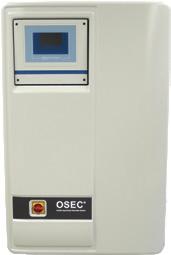
Commercial hypochlorite can be prone to degradation, reducing the strength of the product and its effectiveness as a water disinfectant. Evoqua Water Technologies, the global leader in cost-effective and reliable water treatment systems and services, have developed a unique solution to help mitigate this challenge.
Evoqua has just rolled-out its new OSEC® L electrolyser, an innovative water disinfection system that creates sodium hypochlorite on-site and on demand, at a cost that is significantly lower than purchased hypochlorite.
The system eliminates concerns associated with transportation and storage of liquefied chlorine gas or commercial sodium hypochlorite solutions, making it ideal for many applications requiring chlorination.
The design is compact, easy to install and easy to use. It offers a modern colour touchscreen control and display, plug and play installation and a footprint roughly 50 per cent smaller than other on-site generators.
An inherently safe alternative to chlorine, sodium hypochlorite and calcium hypochlorite, the process does not require handling of any hazardous chemicals.
BINTECH SYSTEMS WATER SOLUTIONS
KEY BENEFITS
• No hazardous chemicals required – safe alternative to chlorine, bleach and chlorine tablets
• Single module provides >400 g / hr chlorine equivalents with interchangeable OSEC cartridges
• Multiple modules can be configured to meet higher capacities
• Transparent electrolyser housing for easy electrode inspection
• Certified to NSF/ANSI 61 Drinking Water
• Pre-engineered hydrogen ventilation system
APPLICATIONS
• Drinking water, remote chlorination stations and well sites
• Commercial aquatics, pools, theme parks, splash pads and spas
• Industrial process water, light manufacturing and cooling towers
• Healthcare, retirement villages, nursing homes and institutional facilities
• Water reuse, agricultural and irrigation
For more information, visit www.evoqua.com or call 1300 661 809.

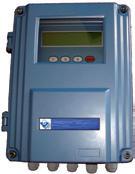


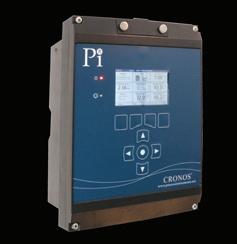

TOLL FREE 1300 363 163 sales@bintech.com.au www.bintech.com.au • ULTRASONIC TRANSMITTERS AND CONTROLLERS • POINT LEVEL SWITCHES • MAGNETIC LEVEL GAUGES • SLUDGE LEVEL SYSTEMS • WIRELESS SYSTEMS LEVEL SYSTEMS
MAGNETIC FLOW METERS • ULTRASONIC METERS -TRANSIT TIME / DOPPLER
OPEN CHANNEL • CUSTOM SPOOL SYSTEMS FLOW METERS
BIOFILM ANALYSER • RESIDUAL CHLORINE • DISSOLVED OZONE • DISSOLVED OXYGEN
TURBIDITY NEW CRONOS ECONOMY ANALYTICAL CONTROLLERS
SUSPENDED SOLIDS • PH/ORP
CONDUCTIVITY
FLUORIDE TURBIDITYMONITOR NEW!
•
•
•
•
•
•
•
Utility Partner Solutions WATER MANAGEMENT 43 UTILITY • MAY 2018 WWW.UTILITYMAGAZINE.COM.AU
GROUNDWATER REPLENISHMENT for Perth
As the south west corner of Western Australia continues to have hotter summers and low rainfall, Water Corporation is seeking new ways to secure climate-resilient water sources. The utility has embarked on an expansion of its $262 million Groundwater Replenishment Scheme — the first full-scale scheme in Australia — which will see 28 billion litres of water per year pumped back into Perth’s aquifers for reuse.
The process of groundwater replenishment is an innovative concept that involves treated wastewater being further treated so that it’s good enough to drink, before being recharged into groundwater supplies. This water is then stored or ‘banked’ in the aquifers, and taken out later for further treatment and supplied to a drinking water system.
As the process doesn’t rely on rainfall and has the potential to recycle large volumes of water, it is sustainable and drought-proof.
PLANNING ON WATER FOREVER
For this reason, Water Corporation has prioritised groundwater replenishment in its Water Forever plan – a long-term plan to further secure water supplies in response to climate change and an increasing population.
The Water Forever plan is based on a three-pronged approach: working with the community to reduce water use, increasing the amount of water recycled, and developing new water sources.
A Water Corporation spokesperson said the Groundwater Replenishment Scheme, taking place at the Beenyup Advanced Water Recycling Plant in Craigie, ticks two of these boxes as it increases water recycling and is developing a new source.
By 2060, groundwater replenishment could provide up to 20 per cent of Perth’s water supply.
For the water to be recycled for reuse, wastewater is first rigorously treated at the Beenyup Wastewater Treatment Plant. It then undergoes further treatment at the on-site Advanced Water Recycling Plant where all trace levels of microorganisms and chemicals are removed so that it meets drinking water standards.
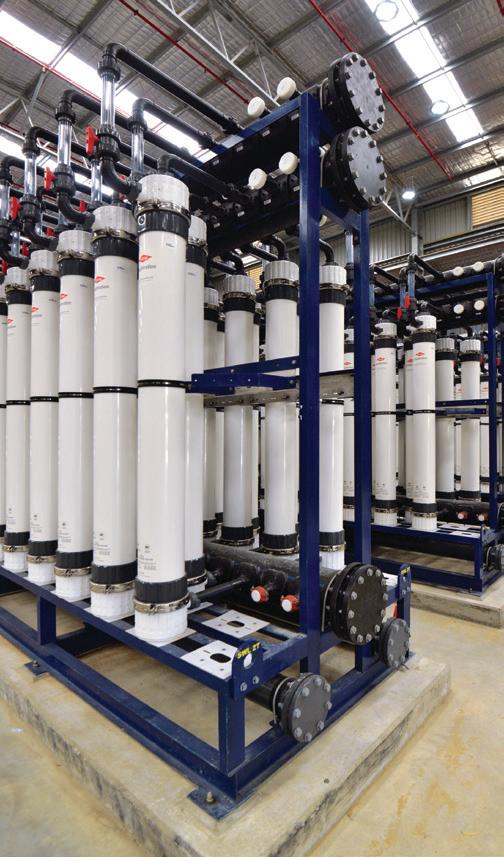
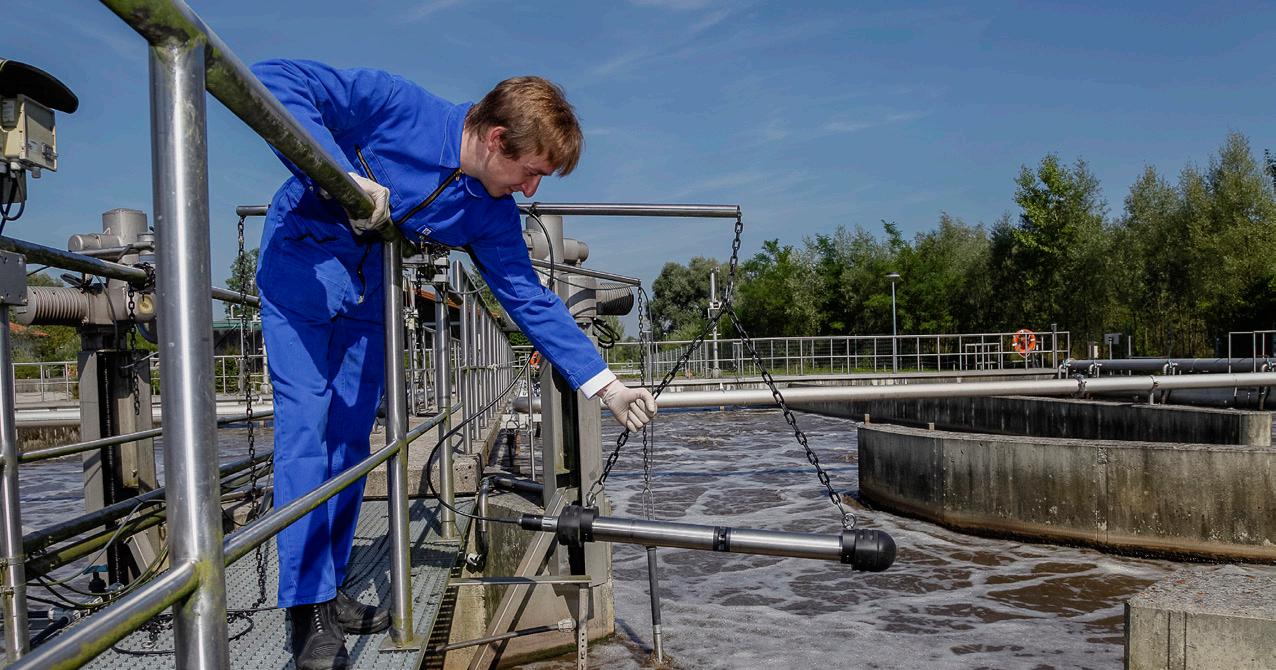
UTILITY • MAY 2018 WWW.UTILITYMAGAZINE.COM.AU 44
INSIDE THE ADVANCED WATER RECYCLING PLANT WASTEWATER MANAGEMENT

UTILITY • MAY 2018 WWW.UTILITYMAGAZINE.COM.AU 45

To achieve this, it is processed through three water treatment methods:
1. Ultrafiltration filters out suspended materials that are larger than 0.1 of a micron
2. Reverse osmosis removes any remaining dissolved materials by passing the water through tightly wound membranes
3. Ultraviolet light is used to destroy any trace levels of microorganisms that may remain
Once water has passed through the three stages, it is of drinking water quality and is recharged into the aquifer where it mixes with the existing groundwater. The water will remain in the aquifer before it is drawn out at another location, treated at a groundwater treatment plant and added to the water supply scheme.
Over time, the difference between the recycled water and existing groundwater is indistinguishable.
A WORK IN PROGRESS
Stage one of the Groundwater Replenishment Scheme was completed and began operation last year, and has the capacity to recharge up to 14 billion litres of water into Perth’s groundwater supply each year.
Work on the stage two expansion of the scheme is underway, which will double the capacity to 28 billion litres of water per year.
Stage two includes the duplication of the 14 billion litre Advanced Water Recycling Plant, and the construction of a 13km recharge pipeline extending to the north-east of the plant, connecting the plant in Craigie to the two new off-site recharge bore sites in Wanneroo and Neerabup.
The location of the new Advanced Water Recycling Plant has meant careful planning and delivery continues to be important.
The site is located in the Perth suburb of Craigie, on Water Corporation-owned land that houses the original Advanced Water Recycling Plant and associated infrastructure from stage one of the Groundwater Replenishment Scheme. This stage continues to recharge water while stage two is under construction.
The proposed route for the pipeline was selected with a number of considerations in mind, including impacts to the community, environment, safety (of people constructing and maintaining the pipeline), constructability and cost.
At each recharge site, Water Corporation will be installing a total of four bores, including two recharge bores and two monitoring bores. Work to install these bores will involve drilling and construction of above-ground infrastructure. The work will be delivered in stages.
Work to install the bores at both the Wanneroo and Neerabup sites has begun and is expected to finish later this year. Work on the associated above-ground infrastructure will begin after the bores are completed and are expected to be completed early next year.
When complete in 2019, the scheme will have the capacity to recycle enough water to supply up to 100,000 households per year, providing Perth with a new climate independent water source to boost much needed drinking water supplies.
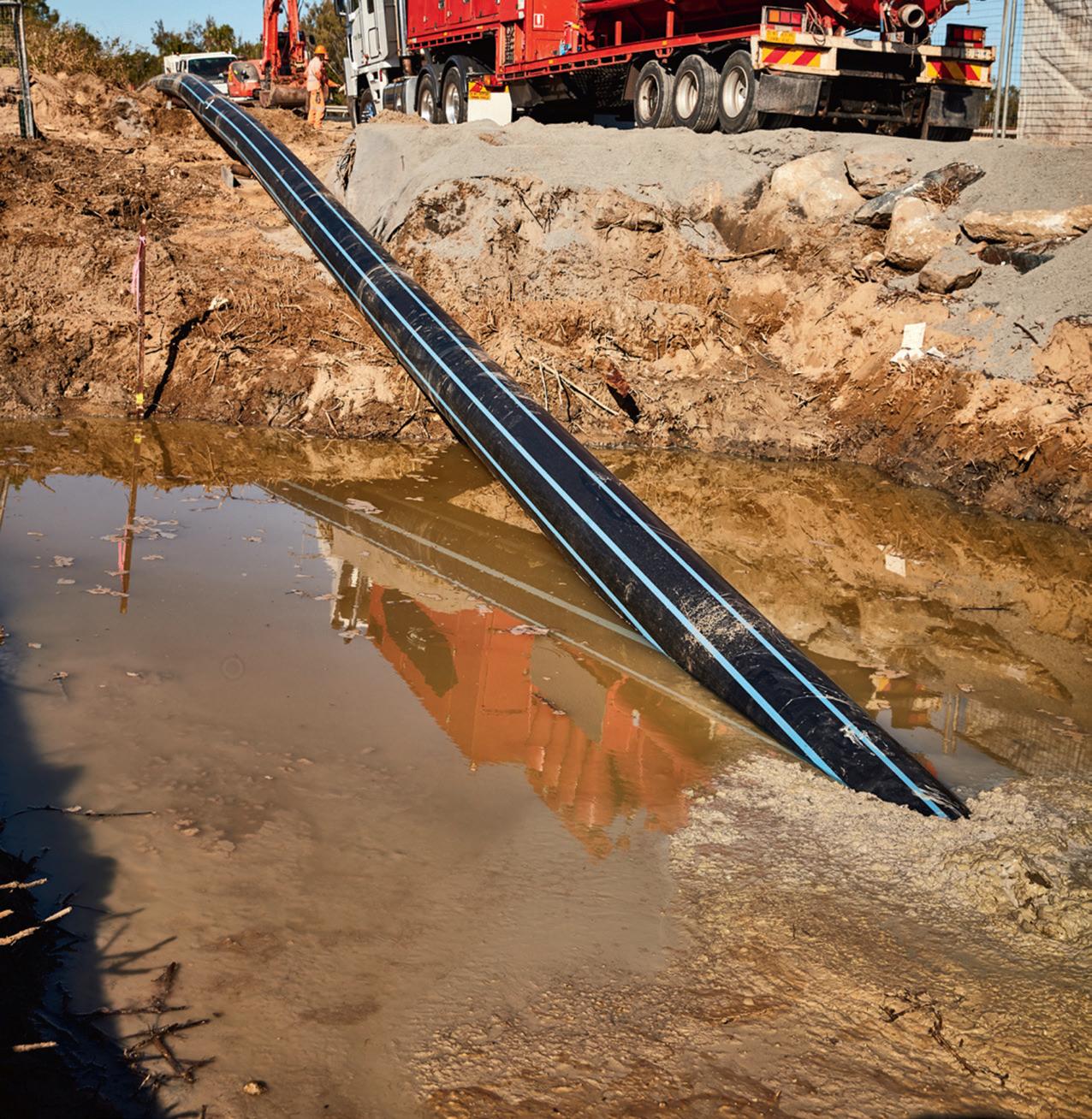
UTILITY • MAY 2018 WWW.UTILITYMAGAZINE.COM.AU
46
BEENYUP ADVANCED WATER RECYCLING PLANT
WASTEWATER MANAGEMENT
Groundwater Replenishment for Perth

UTILITY • MAY 2018 WWW.UTILITYMAGAZINE.COM.AU 47 WWW.IPLEX.COM.AU 1 IPLEX MILLENNIUM® PE100 HSCR TAKES CARE OF THE STRESS IN TRENCHLESS PIPELINES CIVIL 13 10 86 • EMAIL DESIGN@IPLEXPIPELINES.COM.AU • WWW.IPLEX.COM.AU
ALTERNATIVE APPROACH TO MAINTENANCE
When a sinkhole appeared in the middle of a busy suburban road, the City of Swan in Western Australia needed to contract urgent evaluation and repair. Interflow, known for its reputation of quality and cost-effective repair for deteriorated underground pipelines, was able to utilise an alternative approach to repair the problem.

Interflow moved in to complete the work with minimum disruption to the local community and through traffic. As the resulting sinkhole was getting larger it was becoming a danger to pedestrians and vehicular traffic demanding immediate attention.
CREATING A SOLUTION
During initial investigations, Interflow found that a 900mm drainage pipe under Benara Rd in the suburb of Caversham – a creek crossing running almost at capacity with water and mud – had leaked at joint locations.
The solution was to clean and reline the pipe with a 23m long Rib Loc Expanda liner which has significantly extended the service life of the asset.
Interflow’s Western Australian Operations Manager, Stephen Thomson, said, “It was a pleasure working with the City of Swan Engineering team to find a solution for this unique problem.”
MAINTENANCE MAKING A COMEBACK
Interflow is committed to solving its customers problems and recommend that water infrastructure asset and network owners utilise maintenance programs over CCTV contracts.
The traditional convention of CCTV contracts is limited as they are designed to capture raw footage which is then analysed and graded.
The alternative approach is to integrate this activity into a turn-key scenario whereby a delivery partner, such as Interflow, performs cleaning, CCTV surveys, condition assessment, recommendations and rehabilitation.
Sylvain Cabanel, Interflow’s Business Development Manager WA, said “Using our turn-key solutions and having Interflow carry out assessment and recommendation tasks frees our customers from the heavy workload. Customers only need to review and assess the work that Interflow recommend.”
PREVENTING POTENTIAL PROBLEMS
Interflow employ over 500 employees across Australia and New Zealand and has completed works for all major water authorities and many local and regional councils.
“We work on the prevention side too. Interflow can check stormwater culverts for potential problems and work towards asset management strategies to economically extend the life of underground assets,” Mr Thomson said.
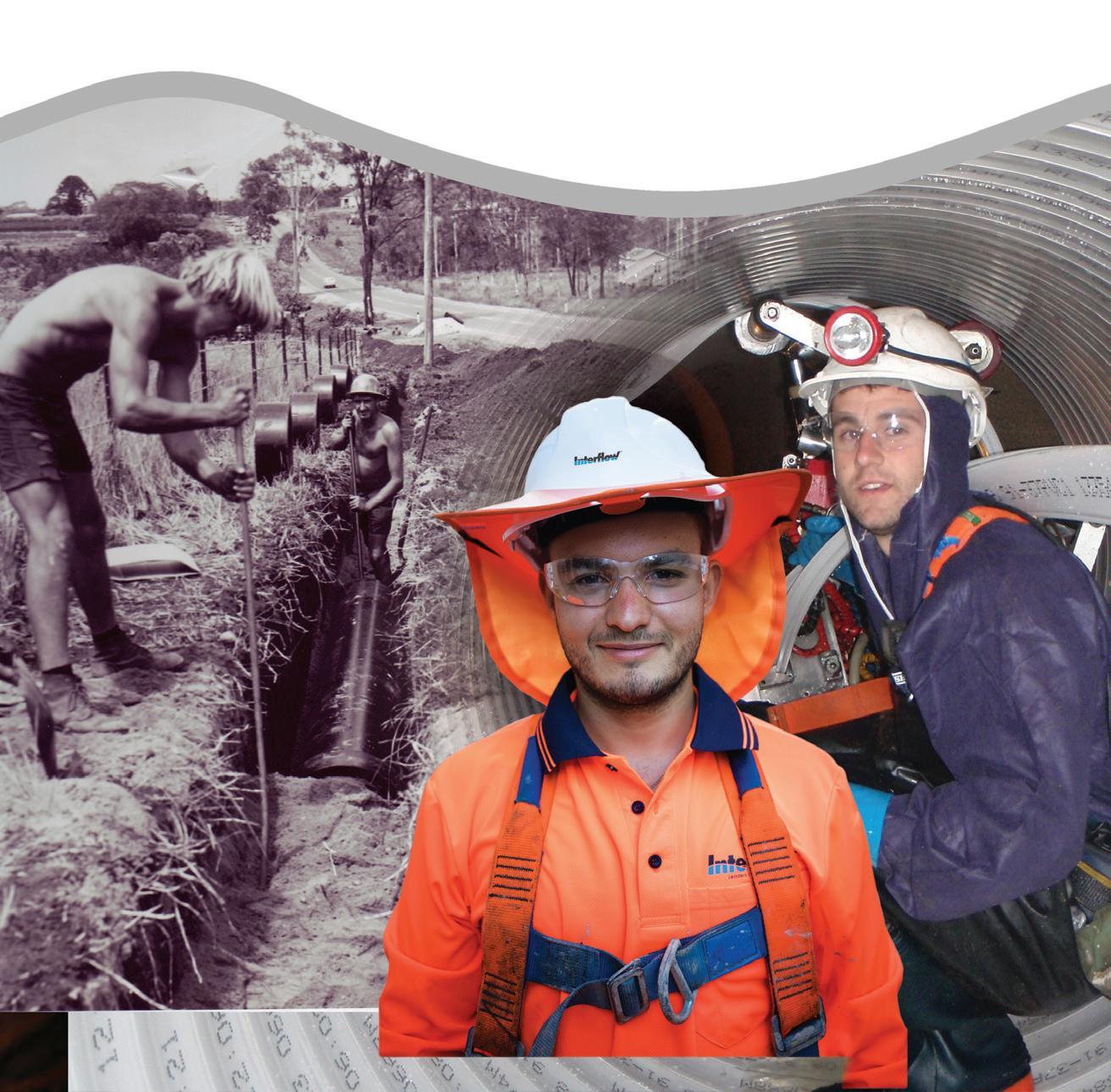
UTILITY • MAY 2018 WWW.UTILITYMAGAZINE.COM.AU Utility Partner Solutions 48 WASTEWATER MANAGEMENT

Locations throughout Australia & New Zealand www.interflow.com.au mail@interflow.com.au Water Infrastructure Solutions Wastewater Infrastructure Solutions Road & Rail Culverts Network Maintenance Stormwater Infrastructure Solutions Condition Assessment Trenchless Installation Your trusted infrastructure renewals delivery partner since 1936 Solutions for the whole network

The BLOCKCHAIN EFFECT
50 DEMAND MANAGEMENT
UTILITY • MAY 2018 WWW.UTILITYMAGAZINE.COM.AU
A project is currently underway in Western Australia that aims to assess how cities can use blockchain technology and data analytics to deliver integrated energy and water systems that offer improved efficiency and sustainability, while relieving demand on the grid.
The $8.4 million project will use Power Ledger’s locallydeveloped blockchain ledger to integrate distributed energy and water systems in Fremantle, WA, over a two year trial period.
The Federal Government is providing $2.57 million in grant funding to the RENeW Project, which comes as part of the government’s inaugural Smart Cities and Suburbs Program, which recognises innovative projects that improve the liveability, productivity and sustainability of cities and towns across Australia.
The project is also being supported by the Australian Energy Market Operator (AEMO), Western Power and the CRC for Low Carbon Living, and has a variety of other project partners, including Curtin University, Murdoch University, LandCorp, CSIRO and Data61.
The residential area being used for the trial is a 1.5 hectare site called the Knutsford Precinct, containing around 100 dwellings, with the hope to roll it out to the entire 23 hectare site.

Distributed systems in the project include a large solar photovoltaic (PV) plant, distributed rooftop solar, a large precinct-sized battery, an electric vehicle charging station, and precinct water treatment and rainwater capture systems.
Power Ledger will provide the transactional layer for both utility services of electricity and water, as well as facilitate the communityowned battery, allowing residents to buy, sell and trade excess energy.
The Perth-based startup first launched its commercial peer-to-peer energy trading platform at the White Gum Valley housing development in Fremantle in 2016.
CHANGING THE TECHNOLOGY LANDSCAPE
James Eggleston, Senior Analyst at Power Ledger, said that the Power Ledger platform utilises distributed ledger technology, also referred to as blockchain, to facilitate and record transactions.
Blockchain technology enables the existence of cryptocurrency and uses software algorithms to record any digital interaction reliably, securely and anonymously.

“Basically, what we’ll be doing, in very real terms, is providing all the meter reading, invoicing and settlement services throughout that network,” Mr Eggleston said. Power Ledger’s platform will be used to track the output and input of any energy and water that is consumed or produced in the system.
“We use existing meters, which is the sensor that provides a reading of whether there is an inflow or an outflow. What the Power Ledger software does is live inside those meters. What the Power Ledger software can do is very rapidly update a ledger, a distributed ledger, for what’s passing through that sensor,” Mr Eggleston said.
“It sounds pretty plain, the role that it plays, but I guess what I’ll point out is that at the moment if I owe you $20 and you send me your bank account details, and I send you that $20, it can take days for that $20 to get to you.
UTILITY • MAY 2018 WWW.UTILITYMAGAZINE.COM.AU 51 DEMAND \MANAGEMENT
JAMES EGGLESTON, SENIOR ANALYST AT POWER LEDGER
The blockchain effect

“What blockchain does is it enables us to settle those transactions in real time. Our platform has trust built into it, so that you don’t need any of the high-friction services that slow down transactions in order to verify trust and to maintain security.”
The project will also explore the water energy nexus, a concept that refers to the relationship between the water used for energy production and the energy consumed to extract, purify, deliver, heat/cool, treat and dispose of water.
“So how can we use surpluses of electricity to treat water on-site? Not necessarily for drinking, it can be for grey water, for other uses, such as water in common areas and things like that, and verges. That’s really the call that we answered in the project,” Mr Eggleston said.
REDUCING NETWORK DEMAND
Mr Eggleston said that the advent of renewable technologies is creating opportunities for smaller scale, more widespread adoption of local generation and demand management.
“So 20 or 30 years ago, if you wanted to provide energy to your city, the best way to do that would be to co-locate some kind of big generator, like a coal-fired power station, and then boom that energy over large distances, over transmission lines, to where it needs to go. But given the idea now that you don’t have to have a big centralised generator, you can have lots of smaller scale generators distributed through the network,” Mr Eggleston said.
One in four Australian households now has solar PV, which, when combined with a form of energy storage, creates a behind-the-meter energy system, enabling on-site power generation for use in residential and commercial buildings. Behind-the-meter electricity can also be harvested from power storage owners and sold back into the grid when there is a shortfall in supply, providing peak load support for the grid more cost effectively.
The scenario is similar to homeowners and car owners making rooms and vehicles available on Airbnb or Uber, and Australia’s rapidly growing distributed solar and battery storage resources have a key role to play in helping the National Energy Market get through times of peak demand – as well as through the transition to renewables.
Mr Eggleston said that the Knutsford Precinct trial is part of the move towards a decentralised energy network.
“With respect to this particular development, rather than have a massive load coming onto the electrical network, what we’re able to do, through solar and battery technology, is reduce the burden of those new developments onto the grid. Which means the grid won’t necessarily need to be upgraded to the full extent that it would have, had we gone for business as usual.”
Demand management is able to balance and absorb both the anticipated and unexpected fluctuations in renewable generation and improve Australia’s energy security, while avoiding building costly infrastructure that may only be needed on a handful of days a year.
ADDRESSING THE WATER SHORTAGE
Behind-the-meter devices have yet to be adopted in the water industry, where the main focus is on increasing the efficiency of the system to cope with decreasing water levels.
Mr Eggleston said that historical records show that Perth’s supply of drinking water has been rapidly decreasing over time without being replenished.
“In Perth, 50 per cent of the drinking water is now desalinated water from the ocean. Without those desalinators we would have a catastrophic water shortage.”
The results of the Knutsford Precinct trial will offer valuable insights into alternative water systems and data that can be used to experiment with more efficient ways of delivering water on-site.
“What we’re doing is looking at measuring water and really
understanding where it’s going, how can we better use it and co-locate it to its source of consumption in order to basically preserve this precious resource for everybody, and use it in a way that is more mindful of its true value,” Mr Eggleston explained.
The water and energy systems have been designed to work harmoniously together – almost like their own ecosystem. For example, if there’s excess on-site energy generation, it can be used at the water treatment systems then and there rather than waiting until the evening, when the energy is more expensive.
DISRUPTING THE SECTOR
Mr Eggleston said that with any innovation comes challenges, particularly with something that hasn’t been done before.
“Sometimes things that are technically possible don’t really necessarily fit into the regulations of the day. So these types of innovations, not only will they require technical optimisation, which we’re more than capable of delivering, but it’ll also require business innovation or regulatory innovation as well to support these new platforms.”
Power Ledger aims to reimagine the electricity network more as a bi-directional transactional network rather than a one-way flow.
Mr Eggleston said that blockchain technology has the potential to transform energy and water provision in the future, and the insights gained from the Knutsford Precinct trial could create a model that can be used not just in Fremantle, but across the country.
“Put it this way, at the moment a lot of houses across Australia have the electricity meters that contain cogs in them. What happens is electricity goes into your house and it spins this little meter. Then that meter ultimately has a person from the utility visit it and physically read it, and then that figure is used for billing. Really that is not a modern way of dealing with electricity consumption, or utilities and services.”
UTILITY • MAY 2018 WWW.UTILITYMAGAZINE.COM.AU
DEMAND MANAGEMENT 52
The ultimate for small tanks!
The future is 80 GHz: a new generation of radar level sensors

When it comes to contactless level measurement of liquids in small containers, smaller is better. With the smallest antenna of its kind, VEGAPULS 64 is simply the greatest! With its excellent focusing and insensitivity to condensation or buildup, this new radar sensor is truly exceptional. Simply world-class!
www.vega.com/radar
Wireless adjustment via Bluetooth with smartphone, tablet or PC. Compatible retrofit to all plics® sensors manufactured since 2002.
REGULATORY INNOVATION:

ENERGY NETWORKS 54 UTILITY • MAY 2018 WWW.UTILITYMAGAZINE.COM.AU
INNOVATION: AN OXYMORON OR FUTURE NECESSITY?

ENERGY NETWORKS 55 UTILITY • MAY 2018 WWW.UTILITYMAGAZINE.COM.AU
Regulatory innovation: an oxymoron or future necessity?

With the delivery of network services advancing at a rapid pace, do current energy sector regulatory regimes encourage the innovation required to meet the future needs of customers or should new approaches be adopted to foster productive change in the market?
Current technology, consumer and digitisation trends are transforming the electricity network and reshaping it from the ground up.
This is supported by numerous studies conducted by the Australian Energy Market Commission (AEMC), COAG Energy Council, Australian Energy Market Operator (AEMO) and others, who have identified the high chance of rapid transformation in energy systems, driven by customer requirements and technological opportunities.
Current National Electricity Rules in Australia set out the regulatory framework for electricity networks. Regulated network businesses must apply to the Australian Energy Regulator (AER) to assess their revenue requirements periodically.
The AER monitors and enforces compliance with these rules and is responsible for economic regulation of distribution and transmission networks.
For electricity network businesses, the AER adopts fiveyear revenue caps based on the expected costs of running each network during this period. The electricity regulatory framework requires that a form of price control is applied to services with monopoly characteristics.
Under incentive regulation arrangements, network firms can achieve profits when they spend lower than the approved forecasts. Also, if firms spend more than the approved forecasts they will have to bear the costs associated with the amount of overspend. The efficiency benefits or costs are shared between the network businesses and customers.
A ROADMAP FOR INNOVATION
The CSIRO and Energy Networks Australia developed a blueprint for transitioning Australia’s electricity system to provide better customer outcomes.
The Electricity Network Transformation Roadmap (the Roadmap) identified a number of areas that will require constant innovation over the long term in system operation and management, incentives and regulatory frameworks, and carbon abatement.
The mechanisms in the current framework focus on containing costs and deriving operational efficiencies.
The Roadmap identified that “a regulatory regime that is outpaced by technology and market developments cannot protect consumers or deliver a balanced scorecard of societal outcomes”.
The Australian electricity network regulatory framework contains some measures which specifically target innovation. These include the Small Scale Incentive Scheme and the Demand Management Incentive Scheme (Scheme).
The National Electricity Rules provide for a small-scale incentive scheme which can be introduced at the discretion of the AER. The rewards or penalties under such schemes are capped at 0.5 per cent of the allowed revenues, but can be up to one per cent of the annual revenue if the network business consents.
To date, however, the AER has not developed any smallscale incentive schemes.
The AER’s current Demand Management Incentive Scheme has three key features: the cost uplift, the net benefit constraint, and the overall incentive constraint.
The cost uplift gives network distributors an incentive of up to 50 per cent of their expected demand management costs. The incentive is only available for efficient demand management projects.
To allow consumers to benefit from the Scheme, the size of the incentive will not outweigh the value (or net benefit) the demand management project delivers across the electricity market. This is the net benefit constraint.
In addition, the overall incentive constraint will limit the incentive’s impact on short-term prices. The cap limits the total incentive that distribution businesses can receive in any one year.
Published on 14 December 2017, the Scheme complements the AER’s reforms targeting consumer choice and more efficient network pricing outcomes.
These include work on tariff reform, metering contestability, ring-fencing, and strengthening the transparency and efficiency of replacement expenditure.
The Scheme’s objective is to provide electricity distribution businesses with an incentive to undertake efficient expenditure on non-network options relating to demand management.
The separate Demand Management Innovation Allowance will provide distribution businesses with funding for research and development in demand management projects that have the potential to reduce long-term network costs.
ENERGY NETWORKS 56 UTILITY • MAY 2018 WWW.UTILITYMAGAZINE.COM.AU
Expert advice in the Roadmap, provided by Cambridge Economic Policy Associates, has suggested that there is strong potential over the medium term to move away from the existing schemes to TOTEX (Total Expenditure – both capital and operational) based approaches.
AN ACRONYM APPROACH
Australian networks are at the cutting edge, trialling energy storage, blockchain approaches and demand management initiatives. Yet, despite the “technological development”, many parts of network regulation have not kept pace.
One utility sector regulatory innovation trialled in the United Kingdom, which currently has a longer regulatory period of eight years, and other European countries is the use of a “total expenditure framework” (TOTEX).
This framework changes how expenditure allowances are set, measured and reported.
Under a TOTEX approach, the distinction between capital and operating expenditure is removed, with regulated networks given a single expenditure allowance with a predetermined capitalisation rate.

TOTEX has been adopted as a Roadmap recommendation to be trialled by 2018 and implemented by 2027.
A TOTEX approach may have significant benefits. For example, it could:
• Improve stakeholder and customer confidence that perceived ‘bias towards building’ is removed. A frequent criticism of current frameworks is that they may lead to underinvestment in innovative operational solutions and subsequent potential losses in customer value
• Focus decisions on the best value solution for customers over the life of the asset. Where long-lived assets are being funded, the customer gains from better optimisation and optionality can be significant
• Better reflect what the current system says it does now. This is achieved by approving overall efficient allowances, rather than approving specific capital and operating projects
• Improved simplicity. TOTEX would reduce the bureaucratic and complex regulatory requirements, and streamline incentive scheme approaches that have dominated network regulation over the past decade
• Reduce the regulatory disputes and monitoring costs around capital and operating cost allocation, and the capital and operating mixtures in benchmarking

Your business partner for engineering solutions

ENERGY NETWORKS 57 UTILITY MAY 2018 WWW.UTILITYMAGAZINE.COM.AU Regulatory innovation:
oxymoron
necessity? P E Level 2, Suite 26/20 Enterprise Drive Bundoora, Vic, 3083 1300 1 L ANCO (52626) tenders@lancogroup com au lancogroup.com.au
an
or future
Since 1998. “We don’t purely just design; we help our customers realize their goal, if you give us an idea we can provide a efficient and effective engineering solution” Accredited consultant with Melbourne Water, Retail Water Corporations – Metropolitan and Regional Areas Corporate Profile Insurance Category Level of Cover $ Professional Indemnity $10 million Public Liability $20 million Work Cover n/a A list of applicable insurances includes: Name of Entity: Lanco Group Pty Ltd ABN: 27 160 328 478 Company Address: University Hill Business Park South Level 2, Suite 26/20 Enterprise Drive Bundoora, Vic, 3083 Company Structure: Private Company Quality ISO 9001 Environment Health & Safety AS 4801 ISO 14001 2
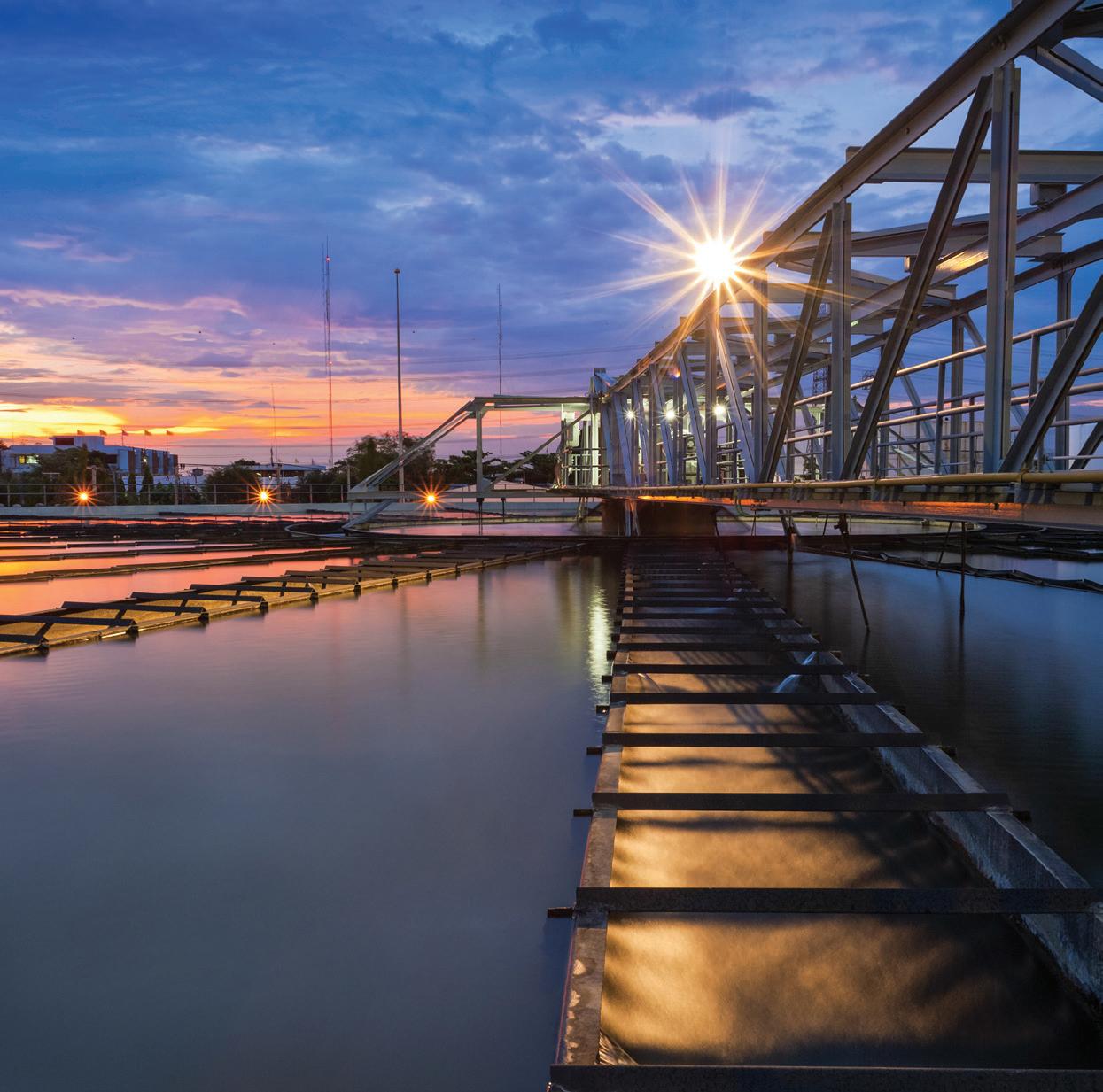
INTELLIGENT MOTOR CONTROL
SUPPORTING CONNECTED ENTERPRISES
The information unlocked with Intelligent Motor Control can be a significant step towards maximising today’s technologies. The Connected Enterprise brings top floor and plant floor together to optimise productivity and competitiveness.
NHP offers increased workforce efficiency and lower total costs of ownership, enabling you to transform data into actionable and real-time information.
Employing standardised and secure networks through smart manufacturing, NHP provides a wide range of devices ensuring connectivity, efficiency and equipment safety.
OPTIMISE PERFORMANCE
Intelligent Motor Control provides key diagnostic information that enables you to optimise performance with real-time access to operation and performance trends. This technology diagnoses problems early and identifies where they are, reducing production losses significantly.
Unplanned downtime is reduced to a minimum and proactive maintenance can be scheduled to avoid further issues.
Access to production and machine data helps you to make informed decisions that improve production and mitigate downtime, increase productivity and boost profitability, offering substantial benefits over conventional approaches.
With Intelligent Motor Control Devices, energy consumption can be monitored on each motor individually at any point in time. This not only helps control energy costs but can also show changes in trends that allow action to be taken accordingly.
From simple fixed and variable speed control to precise torque and position control, NHP offers a complete portfolio of Intelligent Motor Control solutions that help customers to achieve the right levels of control.
Work smarter and increase asset utilisation with NHP, operating and maintaining motor performance through intelligent equipment and networks.
ENERGY NETWORKS 58 UTILITY • MAY 2018 WWW.UTILITYMAGAZINE.COM.AU Utility Partner Solutions
Optimise performance with Intelligent Motor Control
When it comes to your water and wastewater requirements, elevate your operations and connectivity with Intelligent Motor Control solutions from NHP.
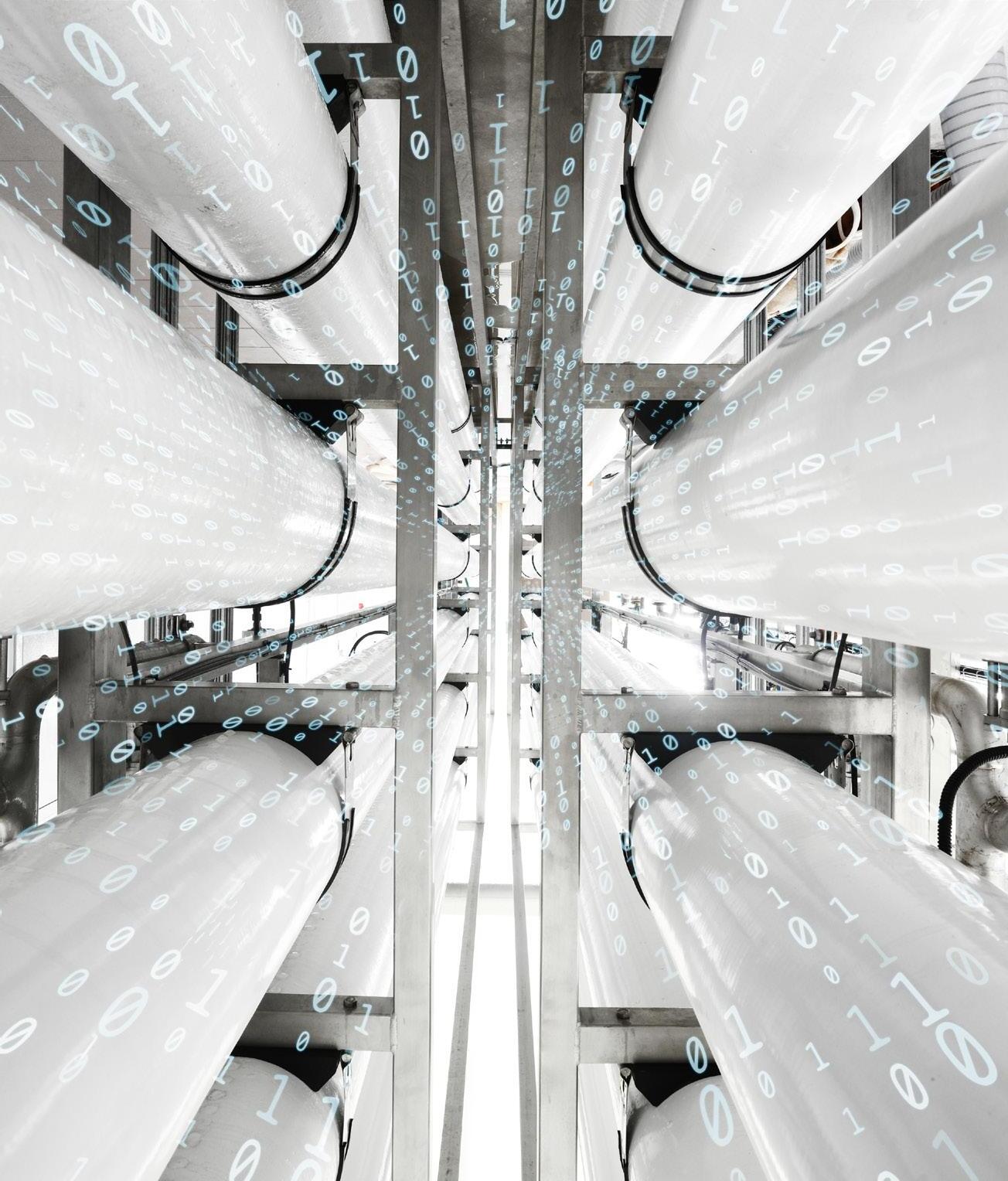
NHP ELECTRICAL ENGINEERING PRODUCTS
1300 NHP NHP | nhp.com.au
Access to production and machine data helps you to make informed decisions that improve production, mitigate downtime, increase productivity and boost profitability, offering substantial benefits over conventional approaches.
Work smarter and increase asset utilisation by implementing an Intelligent Motor Control Solution from NHP to improve productivity and avoid motor failures with an integrated, data-driven approach.
For your next project, visit nhp.com.au/more/intellmc
NHP95218_03/18
|
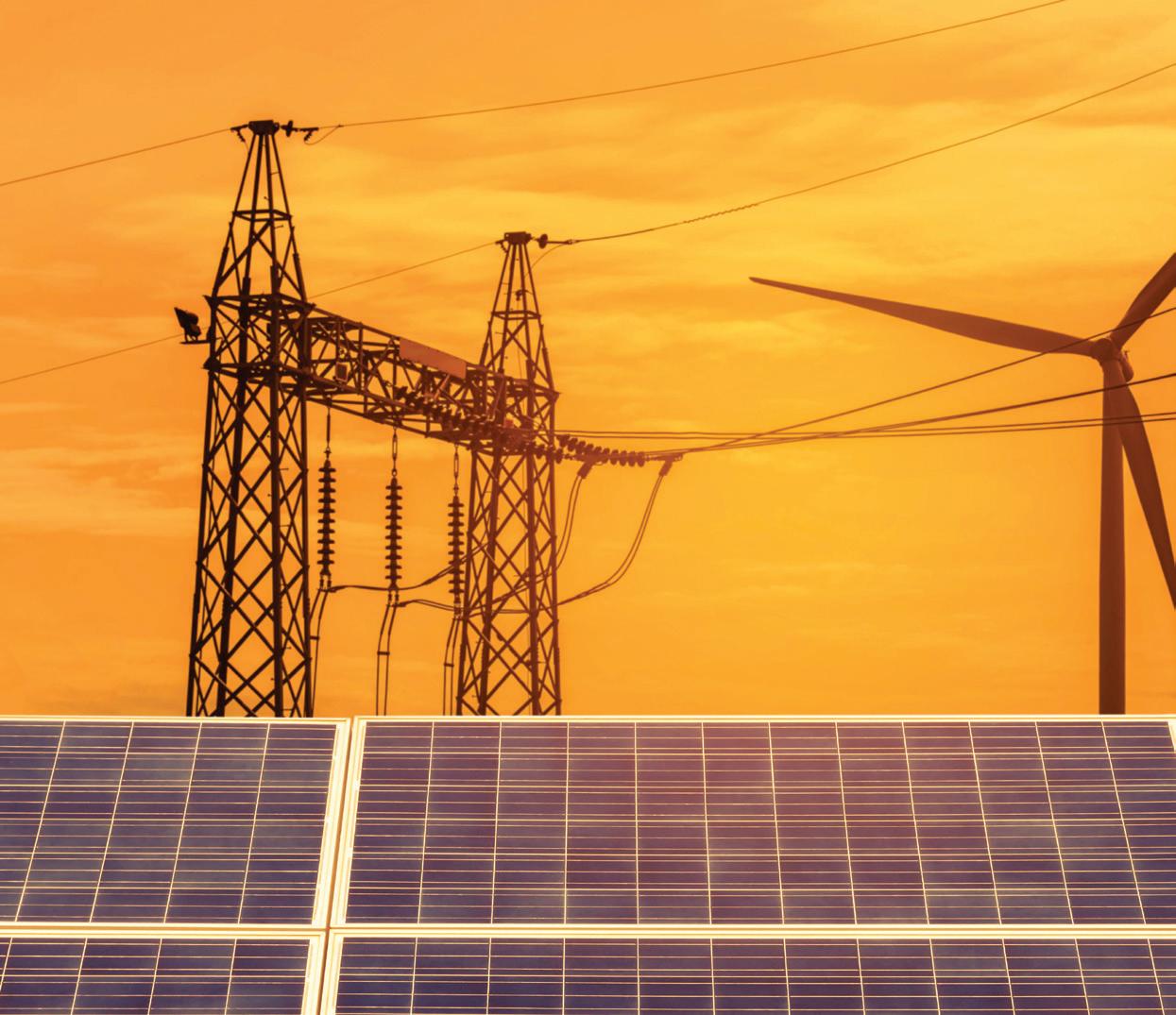
Virtual Power Station 2.0: A NETWORK GAME-CHANGER
The rising use of solar PV and battery storage technology poses new challenges for the industry to overcome. For example, the increased use of solar and battery can result in high and fluctuating voltage which can exceed the capacity of the distribution network systems. ARENA and CSIRO have recently completed a study into the next generation of Virtual Power Stations and how they can coordinate systems to reduce the impact on distribution networks.
Left unchecked, the strain that solar and battery power create for the distribution networks could result in restrictions being placed on the amount of PV-based electricity connected to the grid, limiting customer choice and the amount of clean energy in Australia.
A quick change in weather conditions can cause voltage to fluctuate dramatically, resulting in issues with power quality. Other renewable energy sources, such as wind power, have similar issues with fluctuating voltages.
Without an integrated solution, the mass-deployment of distributed solar PV is not always embraced by some network industry stakeholders. ARENA and CSIRO sought to address this compelling global problem.
VIRTUAL POWER STATION 2
ARENA contributed $850,000 to the $2.85 million research project to create virtual power station 2 (VPS2), which builds upon CSIRO’s original virtual power station and has the ability to undertake pilot-scale testing of load, generation and energy storage coordination.
The VPS2 project was broken down into four work streams:
1. Modelling and simulation: The project developed suitable network simulation models to assess the performance of different control strategies, ultimately assessing Australia-wide impacts and benefits of proposed solar management solutions. The early models were extended to incorporate representations of key controllable loads within customer sites.
UTILITY • MAY 2018 WWW.UTILITYMAGAZINE.COM.AU
ENERGY NETWORKS 60
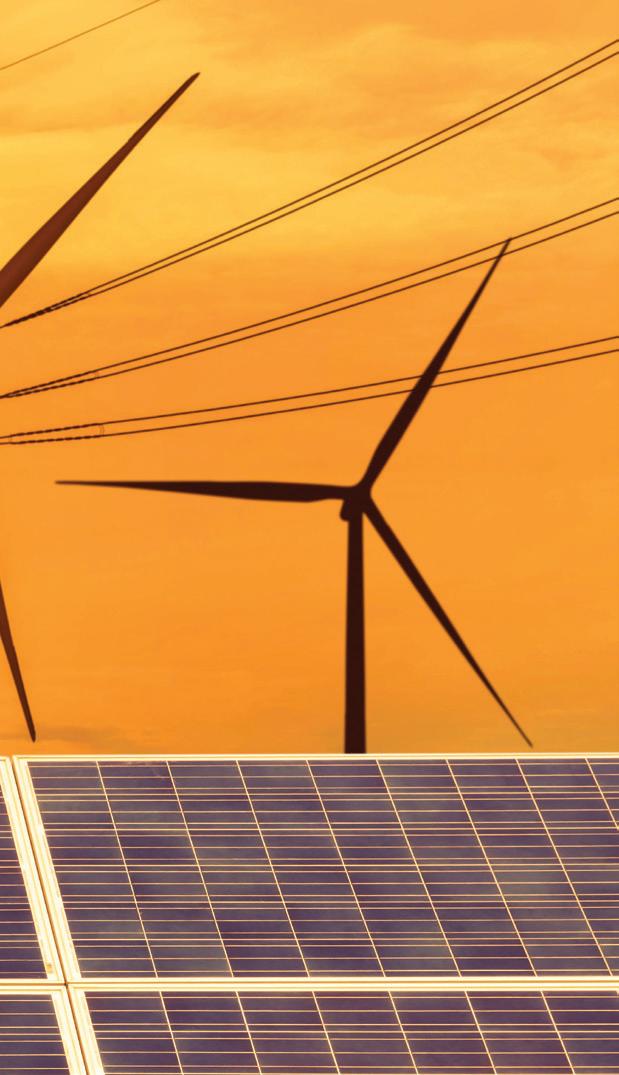
2. Control system design: The project developed a coordinated control system for managing loads, energy storage and reactive power at individual sites. Managing power quality and avoiding energy wastage will provide an immediate financial benefit to consumers in constrained network areas.
3. Aggregator system design (multi-site): It worked on interface and coordination algorithms, suitable for use by energy service providers, allowing aggregation of multiple individual sites to provide reliable and location specific network services. This gives distributors a viable alternative to PV restrictions or distribution network upgrades.
4. Pilot deployment: Following initial testing at the Renewable Energy Integration Facility, the VPS was deployed at a pilot scale (50-100 individual sites) in a new Lend Lease residential development. The pilot was maintained for one year, with high-resolution data on the network power quality and solar PV hosting capacity made publicly available and promoted in a series of technical and academic publications, plus industry forums.
YARRABILBA ENERGY TRIAL
Project partner Lend Lease identified a suitable test site at Yarrabilba, approximately 30 minutes south of Brisbane. CSIRO and Lend Lease approached residents who agreed to take part in the trial.
In this trial, 67 households were recruited and their hardware (solar PV, batteries and air-conditioners) were controlled in a cooperative manner to maintain power quality in the grid.
The results of this project have shown that a viable third alternative to electrical network upgrades or limits on rooftop solar can be found in smart deployment of hardware and software to effectively control devices, enabling greater deployment of solar power.
Overall, the VPS2 project was a success – it demonstrates the fundamental ability of the underlying technology.
NEXT STEPS FOR VIRTUAL POWER STATIONS
In addition to the valuable lessons learnt, the research project identified a number of steps that are required to optimise the use of distributed energy resources. These include:
• Continued development of communications infrastructure underlying the core control technology to provide more granular control of all devices at homes
• Additional validation of the fundamental approach is needed both from a technical and a commercial perspective
• CSIRO needs to demonstrate the ability of the VPS2 approach to actually impact distribution operations in the field; to date, the project has demonstrated the ability to impact individual connection points and modelled impacts on distribution operations
• Incentive schemes and approaches need to be introduced to ensure sufficient uptake of the proper inverters, storage and controls to actually lead to deployments that cost-effectively meet alternatives for solving the grid issues that arise from increased levels of solar PV
CSIRO and ARENA are hoping that once it reaches the commercial market, the VPS2 will provide a reliable mechanism for matching locally-generated PV electricity with household demand, while offering a way to develop and share information on the economic benefits between all parties.
UTILITY • MAY 2018 WWW.UTILITYMAGAZINE.COM.AU ENERGY NETWORKS 61
THE TRANSITION TO A DISTRIBUTION SYSTEM OPERATOR
Considerable disruption in the power sector arising from a combination of policy, technological and customer change is transforming how we think about, produce and use electricity. This change towards a decarbonised, decentralised and digitalised system is profound, and Distribution Network Service Providers (DNSPs) are at the forefront of its impacts.
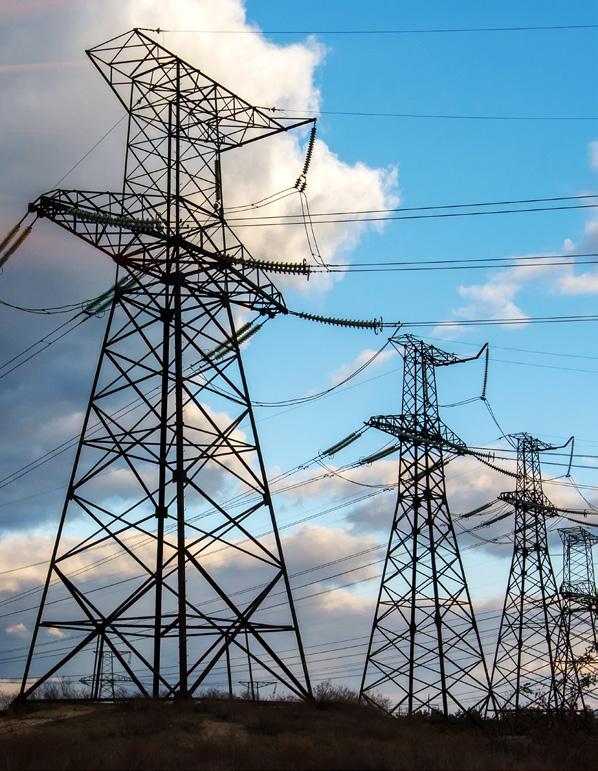
These changes to a more decentralised system introduce increased participation in the marketplace for a range of new business actors. The way these actors engage with both transmission and distribution operators will be key to the successful paradigm shift for energy delivery.
The extent of this change dramatically alters future assumptions about business models and future roles for network companies. Distribution Network Service Providers (DNSPs) need to revisit their current business model, roles, capabilities and skills, and consider their evolution to that of a genuine Distribution System Operator (DSO).
FROM A DNSP TO A DSO
The increase of distributed energy resources in Australia’s energy industry has given rise to conversations surrounding how best to manage these new distributed networks as the industry moves away from the traditional linear, one-way flow of power to consumers.
Many in the Australian energy industry are starting to look to new management models, and given the role of the Distribution System Operator (DSO) is prevalent in the UK, it’s now starting to stand out as a key way forward for the local sector.
The role of the Distribution System Operator (DSO) includes ensuring reliability and efficiency in the operation of systems that have distributed energy resources (DERs). This can consist of the maintenance and management of the distribution system, with a key factor being the integration of all elements of the system.
*https://ec.europa.eu/energy/sites/ener/files/documents/xpert_group1_reference_architecture.pdf
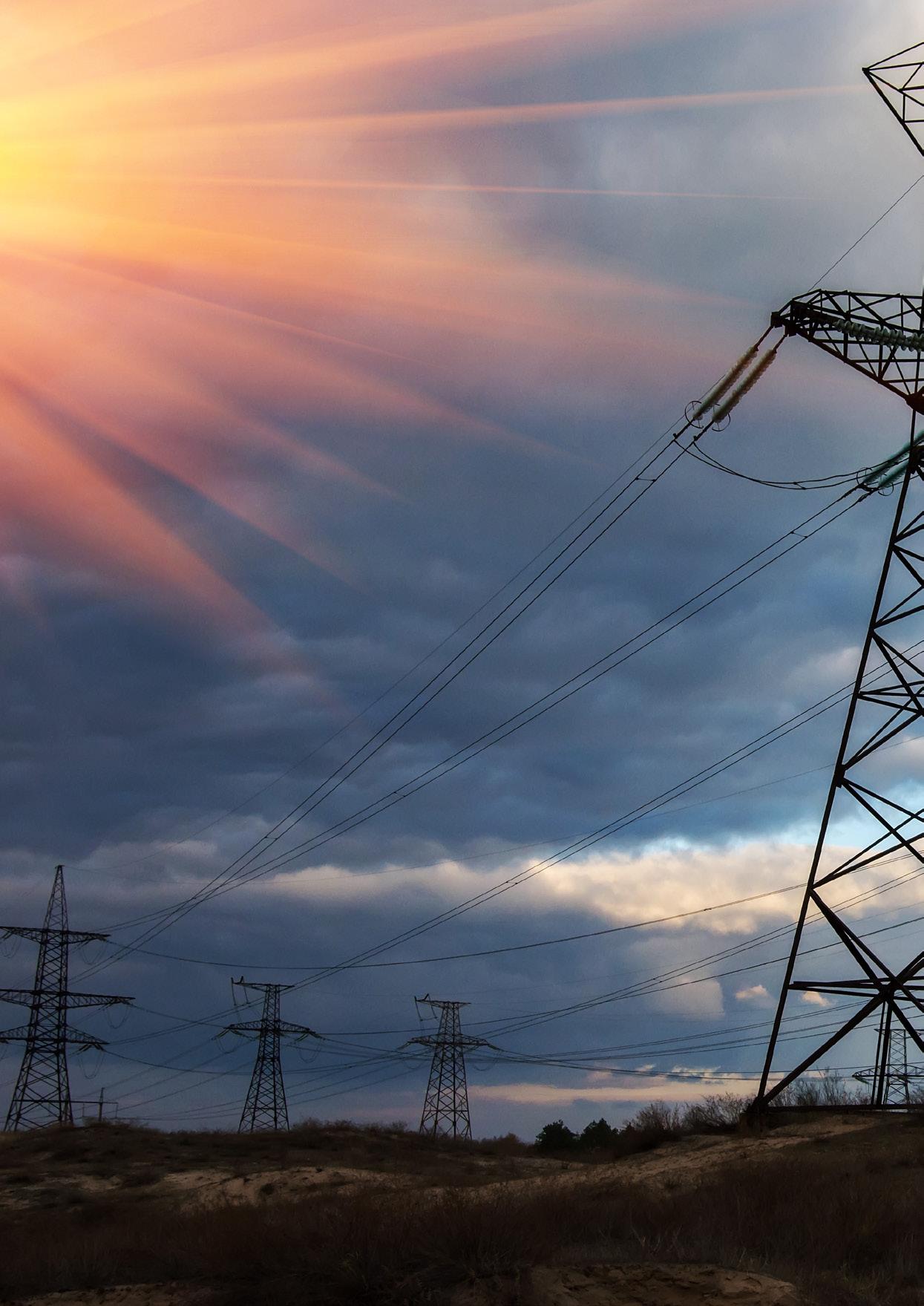
ENERGY NETWORKS 62 UTILITY • MAY 2018 WWW.UTILITYMAGAZINE.COM.AU Utility Partner Solutions








The move to DSOs would mean they undertake the duties of a DNSP but with increased responsibilities bought on by new technologies and flexibility of distributed resources.
THE SMART GRID ARCHITECTURE MODEL (SGAM)
One way in which this dramatic change can be captured and evaluated is through the use of the Smart Grid Architecture Model (SGAM). This is made up of a number of layers, zones and domains as shown in Figure 1.
The SGAM framework allows for the consistent capture of information and the representation of what the future energy system will look like for all key players.
In particular, the framework allows the representation of:
• Who is communicating with the DSO? Identifying which existing and new actors are involved
• What are they saying? Specifying the information exchanges necessary to facilitate the system and the market going forward
• How are they saying it? Describing the communication methods necessary, such as highly resilient SCADA links or electronic signals sent via differing communications media to procure and activate services and inform the market of the status of the system
By using a comprehensive and replicable framework such as SGAM, it is possible to understand how a DSO will deliver the necessary functions in one of many potential futures that might emerge.
It offers a ‘market-agnostic’ view that can describe who will be involved in the system and how they will contribute
INTEROPERABILITY LAYERS
Business layer: provides a business view on the information exchange related to Smart Grids. Regulatory and economic structures can be mapped on this layer.
Function layer: describes functions and services including their relationships from an architectural viewpoint.
Information layer: describes information objects being exchanged.
Communication layer: describes protocols and mechanisms for the exchange of information between components.
Component layer: physical distribution of all participating components including power system and ICT equipment.
DOMAINS
The value chain from generation and transmission through distribution, DER to the end customer
ZONES
Hierarchy of power system management from processes, through substations to enterprise and ultimately market-wide
to the successful delivery of the various functions across a range of different commercial and market frameworks that could exist with different parties having different responsibilities.
POTENTIAL FUTURES FOR AUSTRALIA’S ENERGY INDUSTRY
This ‘market-agnostic’ view is key as it helps to drive out the changing requirements for the DNSP as it becomes a DSO, and the SGAM identifies the new skills and technology requirements that will become business as usual.
It also allows for DNSPs to understand how their roles could change in a variety of future worlds, and therefore points to least regrets pathways that can be adopted to manage the uncertainty as the market and commercial frameworks continue to evolve over the coming years.
The DSO transition is potentially the biggest change to happen to networks in decades, but by taking a considered approach with a framework such as SGAM, it is possible to navigate a path that delivers value for all stakeholders.
EA Technology is at the forefront of this challenge and is leading the development of SGAM frameworks for five potential ‘future worlds’ that could emerge in the UK on behalf of Energy Networks Association.
This collaborative project involving distribution businesses, transmission operators, regulator, government, energy suppliers, aggregators and more, is an example of how it is critical to take a whole system view of the future energy marketplace.
For more information on the transition to Distribution System Operators, please contact Mark Sprawson, Head of Network Strategy and Transformation at EA Technology at Mark.Sprawson@eatechnology.com or call Neil Davies on 07 3256 0534.
ENERGY NETWORKS 63 UTILITY • MAY 2018 WWW.UTILITYMAGAZINE.COM.AU Utility Partner Solutions
Generation Transmission Distribution DER Customer Premises Process Field Station Operation Enterprise Market Domains Zones Component Layer Communication Layer Information Layer Function Layer Protocol Protocol Data Model Data Model Outline of Usecase Functions Business Layer Business Objectives Polit. / Regulat.. Framework Interoperability Layers
FIGURE 1. FIGURE TAKEN FROM “SMART GRID REFERENCE ARCHITECTURE,” CEN-CENELEC-ETSI SMART GRID COORDINATION GROUP, NOV., 2012.*

An industry outsider with a passing interest in the National Energy Market could be forgiven for thinking smart meters were a new technology. Certainly, the new breed of device – versatile and programmable – is a step beyond the digital interval meters seen as part of the early-adopting Victorian rollout. But for EDMI, in its 40th year, these “new” products are just evolutions of the technology and methods it has been working on for almost three decades.
EDMI started life in December 1978 as Electronic Design and Manufacturing Queensland, in a small shed north of Brisbane. Originally imagined as an engineering consultancy group that delivered smart solutions for diverse projects like irrigation, railways and scoreboards, the group became EDMI in 1982 and found further success with a contract to provide scoring systems to support the 1982 Brisbane Commonwealth Games.
This initial period was, in itself, quite fruitful for the company, but it was in the early 90’s that EDMI found the niche that would prove the foundation for the profile in metering it enjoys today.
“EDMI’s Mk1 smart electricity meter was a new way of doing things,” said EDMI’s Chief Technology Officer, Ivan Barron. “No similar interconnect meter existed in the market at that time and EDMI designed it from scratch, working closely with the customer.”
The Mk2 meter followed in 1994, and the Mk3 meter released in 1996 became a transmission mainstay for many years. Today, EDMI has leveraged its DNA in highaccuracy, highly functional products to deliver uniquely differentiated solutions to the residential market.
Now in its 40th year, EDMI Limited, headquartered in Singapore and owned by leading Japanese smart metering company Osaki Electric, has sold more than 10
million electricity and gas metering devices for the global smart meter market. A big part of EDMI is still Australian, however, and its local R&D team continues develop metering solutions specifically for the Australian and New Zealand markets from its regional offices in Brisbane, Melbourne and Wellington.
“EDMI have played a part in a number of advances in Australian metering over the last 40 years and can take some credit in leading the way with many of them,” said Andrew Thomas – Executive Director, EDMI Australasia.
“EDMI’s history has laid the foundation for our market-leading position in the Power of Choice market. Our solutions ecosystem combined with our uniquely collaborative and adaptive culture positions us to continue to meet the needs of the ever-changing energy market,” said Mr Thomas.
“EDMI are proud of our work with industry to overcome many challenges in the last 40 years and look forward to continuing that role in the future.”
For more information, visit www.edmi.com.au or contact sales@edmi.com.au
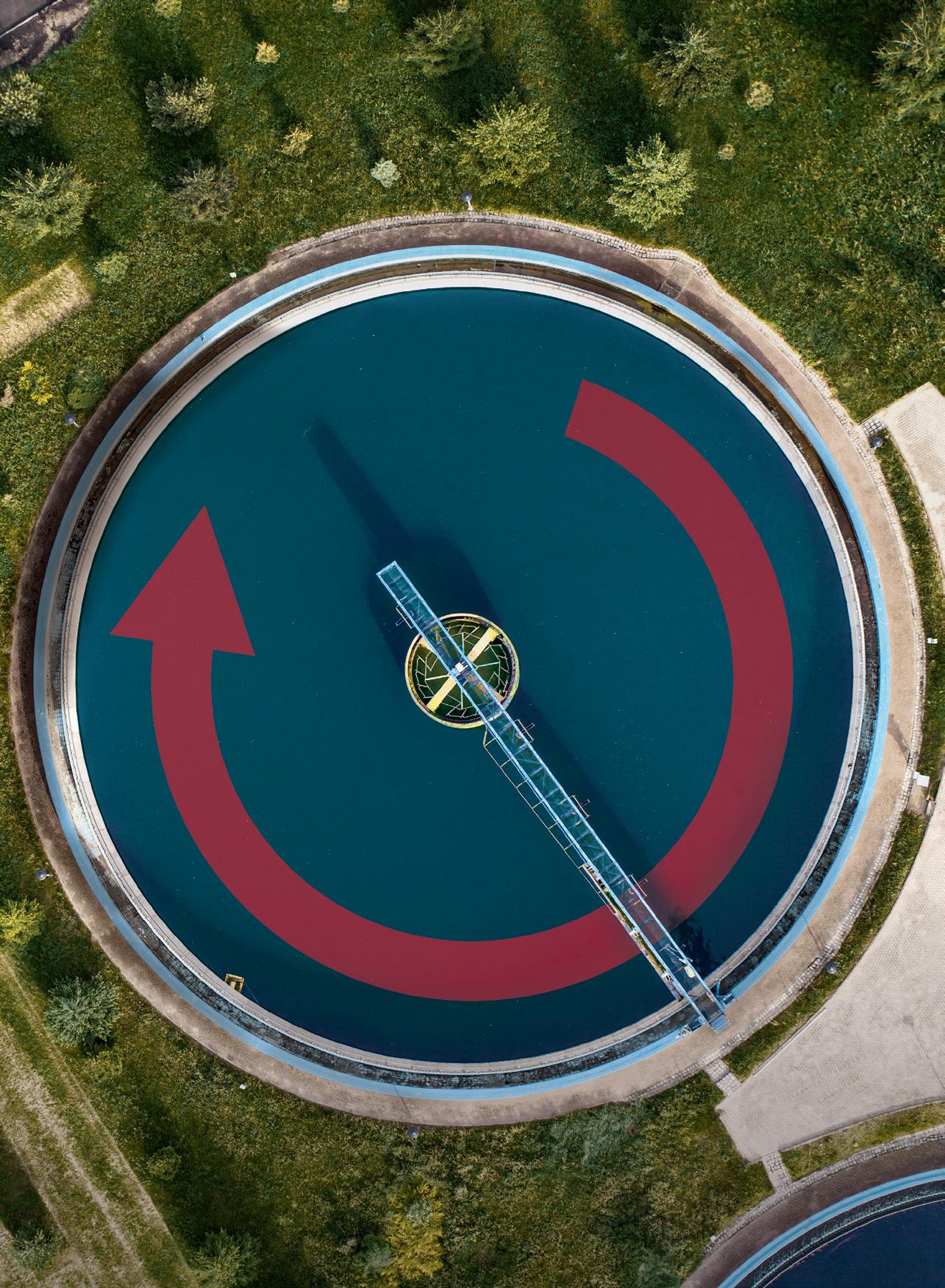
UTILITY • MAY 2018 WWW.UTILITYMAGAZINE.COM.AU
million meters:
DESIGNER EDMI
Ten
AUSTRALIAN SMART METER
CELEBRATES 40 YEARS OF PRECISION, RELIABILITY AND INNOVATION
64 SMART METERS i Utility Partner Solutions
MasterSeal 7000 CR
360° Protection for Extreme Conditions

Specific chemical resistance
Including high concentrations of biogenic sulfuric acid
Crack-bridging
Ability to bridge cracks of up to 0.7 mm
Maximum moisture tolerance
Can be applied on humid substrates
Reduced downtimes
Thanks to excellent curing properties
Fast and easy application
By rolling or spraying at +5 °C to +35 °C
PROTECT YOUR CONCRETE STRUCTURES AGAINST COMPLEX PHYSICAL AND CHEMICAL CORROSION PROCESSES
MasterSeal 7000 CR is the new concrete protection system that meets the challenges in aggressive wastewater environments. Due to its unique combination of specific chemical resistance and static and dynamic crack-bridging abilities, MasterSeal 7000 CR can significantly extend the life cycle of concrete wastewater structures, ensuring continuous and safe operation.
Discover more about BASF’s repair and protection solutions and watch the video on www.masterseal-7000cr.basf.com
1300 227
300
W219778. 04.2018
Smart meter trials CONTINUE TO UNEARTH NEW IDEAS
by Andrew Davis, General Manager - Electricity Markets, Jemena
Even before the rollout of smart meters in 2009, Jemena was one of a number of electricity distribution businesses testing Advanced Metering Infrastructure (AMI), more commonly known as smart meters. Today, many of the perceived benefits that smart meters were expected to bring are being realised, but such are the advances in technology and connectivity that some other early theories are also now becoming possible.


UTILITY • MAY 2018 WWW.UTILITYMAGAZINE.COM.AU 66 SMART METERS i


UTILITY • MAY 2018 WWW.UTILITYMAGAZINE.COM.AU 67 SMART METERS i
ALPHINGTON AND FAIRFIELD PRIMARY SCHOOL STUDENTS AT THE LAUNCH OF POWER CHANGERS
Smart meter trials continue to unearth new ideas
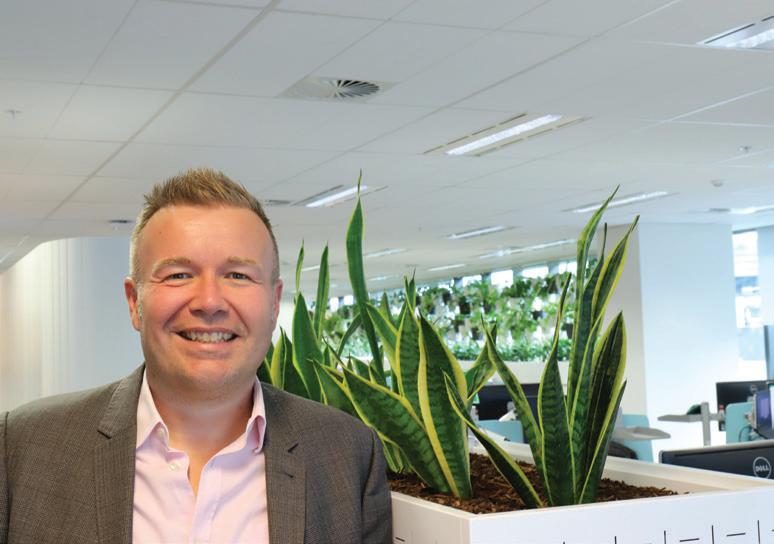
Here, we look at the current and future benefits of smart meter technology, focusing specifically on:
• The impact smart meter technology continues to have on customer bills
• New innovations which, thanks to smart meter technology, are allowing customers to remotely control and monitor their appliances and electricity use
• The positive impact smart meter technology is having on the electricity grid and network
There are approximately 2.8 million AMI meters in Victoria, rolled out to all customers using less than 160MWh of electricity per year. In the Jemena Electricity Network, across Melbourne’s northwest, there are around 335,000 AMI meters.
ACCURATE BILLS AND INFORMATION
Prior to smart meters, meter readings were assessed by estimates and manual readings of a customer’s aggregate consumption. In the highvoltage distribution network, time-ofuse information was available through the SCADA (Supervisory Control and Data Acquisition) system. However it was only with the rollout of AMI that time-of-use information was extended

MARKETS, JEMENA
to individual customer premises. This shift has enabled the most obvious benefit of smart meters to consumers –accurate bills.
Smart meters also allow customers better freedom of movement and choice. The technology enables customers to easily switch between retailers as disconnections or connections can now be done remotely.
Smart meters can also support other new technologies, such as solar energy systems by enabling solar generated energy to flow into the grid.
Smart meters provide customers with better information. Today, our bills not only reflect accurate usage but provide key time-of-use consumption data. Property owners can better monitor their usage, leading to informed decisions about when they use electricity, how much they consume, and how that compares to previous bills.
Consumers are tech savvy and have come to expect information on-the-go. The availability of real and relevant data is ideal for interactive online and web-based portals. Not only are these convenient sources of information, they also encourage greater interest in the electricity industry and the broader energy sector.
RESIDENTIAL TRIALS
Testing the interplay between smart meter technology, household data and peak demand, Jemena’s residential demand response trial Power Changers, was conducted in partnership with the Victorian Government over peak times on very hot days during the recent summer.
By analysing household data, made accessible via the smart meter, Jemena was able to calculate a baseline for energy saving challenges, with participants incentivised to reduce consumption and demand on the grid via two rewards programs.
Under the Community program in Alphington, Eaglemont, Fairfield, Ivanhoe and Ivanhoe East, participants donated their challenge points to local groups and schools. In the Rewards program, conducted across Craigieburn, participants redeemed their points for gift cards for their own personal use.
Some 600 people registered for the four month trial. Early indications are that participants did indeed reduce their energy consumption, cut bills and reduce demand on the network.
SMART APPLIANCE TRIAL
Smart meters not only provide data, but they form an interconnected wireless grid. This virtual network allows information to flow, not just from them, but through them. By analysing trends and patterns, Jemena can identify new opportunities to optimise this technology.
Jemena’s Smart Appliance trial utilises smart meter connectivity to test Direct Load Control (DLC) across the Jemena Electricity Network, allowing us to offer a remotely controlled service to customers at peak times on very hot days.
In the DLC trial, participants permit Jemena to manage their smart air conditioner and smart pool pumps at pre-agreed times on scheduled days.
The benefit to customers is knowing their appliances are operating at their optimum without impacting comfort levels, however, they will see their bills decrease. For Jemena, the pilot enables us to test consumer sentiment for Direct Load Control.
SMART METERS i
ANDREW DAVIS, GENERAL MANAGER – ELECTRICITY
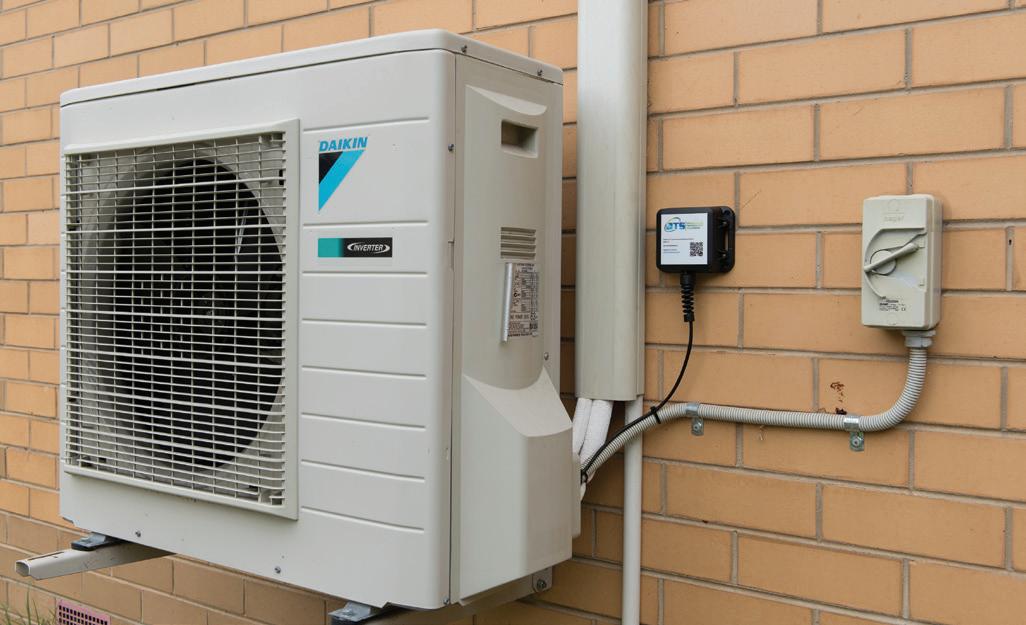
Both Power Changers and the Smart Appliance trial have provided great insights into customer engagement, motivations and segmentation. They have great potential to reduce household bills and demand on the grid.
Jemena is also considering how these trials can be scaled up. One focus will be on the forecast increase in electric vehicles (EVs). The day could come when EVs are typically plugged in at home on their return from work, but DLC manages the recharge period overnight, to spread the load across the network.
SMART METER “HEALTH” CHECKS
Data analysis also provides opportunities to identify risk as well as opportunity. Through the connectivity of smart meters, faults and outages can be better managed across the network and at the home.

Jemena is trialling in-depth analysis of smart meter data, known as Advanced Data Analytics (ADA) to identify irregular patterns, unusual readings and data anomalies.
By early identification, Jemena can make earlier interventions, proactively and efficiently deploying resources to address the issue before the customer is even aware of it.
FUTURE SMART METER BENEFITS
While these trials show early promise, they are not in themselves the ‘silver bullet’ to driving network efficiencies.
Therefore, Jemena will continue to test smart meter technology trials, collate data, consider learnings and seek customer benefits.
As results of these trials are realised, we are confident smart meter technology will continue to provide new opportunities to improve services,
cut household bills and reduce demand on the grid.
These trial findings and future opportunities will also go some way to supporting a national picture of future electricity use, as outlined in the Energy Networks Australia and CSIRO Electricity Network Transformation Roadmap Final Report, released in April 2017.
Under the Roadmap, pricing reforms, harnessing smart meter technology and other technologies will play an important role in delivering the goal of $414 annual savings in average household bills and $16 billion in network infrastructure investment savings by 2050.
Jemena looks forward to contributing to the Roadmap’s target to “outperform current abatement targets, keep the lights on and deliver lower costs”, and to continue our work at a state level with customers, industry and government to bring energy to life.
SMART METERS i
Andrew Davis is Jemena’s General Manager, Electricity Markets. He oversees a team of senior professionals to develop and deliver market, product, commercial, customer strategies and growth opportunities for Jemena’s regulated and unregulated electricity network business.
JEMENA DIRECT LOAD CONTROL DEVICE CONNECTED TO SMART AIR CONDITIONER
Smart meter trials continue to unearth new ideas
TAKING THE PAIN OUT OF MOVING TO SMART METERS
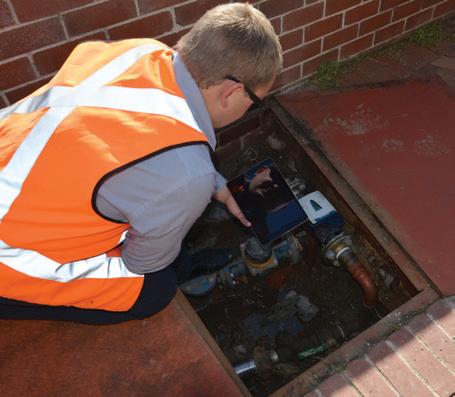
TWO WAY INTERROGATION TO IDENTIFY
WWith smart cities on the rise, the utility management market is evolving rapidly with practices such as smart metering and data capture at the forefront of sustainable urban development. Smart meters are commonly accepted and used in the energy sector, and the water management industry is rapidly embracing this technology.
Cadia has monitored these trends closely, and has assisted a number of councils as they move towards upgrading their systems to enable smart metering capabilities.
ater utilities across Australia are under increasing pressure to address the challenges caused by water shortages, population growth and climate change. With increased demand for water, inaccurate metering is no longer viable or acceptable. Effective monitoring of water consumption is essential in the management of Australia’s precious water resources.
The traditional manual recording of water consumption data performed by utilities every three months results in infrequent data collection. This process only provides limited information and fails to give a clear understanding of water use behaviour, leakages or seasonal variations. Smart water meters offer an intelligent efficient alternative with a range of functions that go above and beyond traditional water meters.
Smart water meters enable early leak detection by picking up even the smallest leaks which will help to save water and reduce customer bills. They also eliminate the need for field operators to manually read a property’s water meter which may result in inaccuracies should an operator be unable to access the meter.
In the long term, the efficiency of smart water meters has the potential to reduce water bills, while the data collected can be used to evaluate the effectiveness of demand management programs and conservation initiatives, as well as identify peak demand patterns.
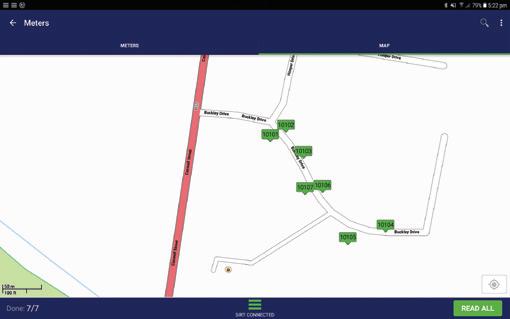
GPS LOCATED DEVICES SHOWN ON HAND-HELD SOFTWARE.
of the project, it is clear that councils are well aware that the move to a smart meter water system is not as straightforward as issuing a tender to market, and that there are a myriad of options and methods that need to be considered in order to accurately identify the most effective solution.
Accordingly, Cadia has developed a model to offer on-site analysis and a full needs assessment which is then used to customise a smart meter solution which will address the local challenges and capture opportunities to better manage resources. This “Cadia Concierge” service can provide on-site training and education, beginning with initial assessment and continuing through the deployment of the smart meter system.
By using smart water meters, customers and ratepayers experience increased awareness of their water usage, with Cadia able to assist councils with developing an online system that provides them with access to their own data.
Through partnering with hardware manufacturers, Cadia now offers meters that are able to withstand the harsh operating conditions of the Australian landscape (both heat and frost proof), with a long battery life and significant capacity for individual meter data interrogation.
MAKING THE CHANGE
Cadia has recently invested in a six month smart meter research project, speaking to councils, suppliers and IT experts, to collate and assess information about the industry and the way smart meters can be used in the marketplace. As a result
Cadia’s ISO Environment, Occupational Health and Safety and Quality Assurance accreditations are testament to the stringent standards it operates within, and your assurance that your smart meter upgrade will be managed in a professional, sustainable and ethical way.




70 SMART METERS i Utility Partner Solutions
WATER
THEFT.
Need accurate results for your ratepayers?


















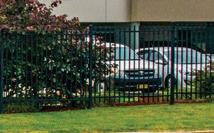







Are you confident that your water revenue system is capturing accurate results for your ratepayers?
Our regional customers are telling us that they are overwhelmed by the change in technology with dated assets failing.















Cadia Concierge can Clarify, Educate and Support your council from the strategic planning through to installation and data capture (hardware & software).
Quality ISO 9001 Environment ISO 14001 1300 422 342
www.cadia.com.au
sales@cadia.com.au
FOR
25 years TRUSTED
DATA COLLABORATION FOR A TRULY MOBILE WORKFORCE SUPPLY CHAIN
New technologies and innovations have provided significant opportunities for water utilities to leverage real-time data and a mobile workforce to improve operational efficiency, safety and optimise resources. Despite these advances there is still a gap in data collaboration between utilities and their supply chain, with disparate internal and external systems creating a challenge to reaching the full potential these advances provide. Implementing a single integration solution is key to realising the benefits of a mobile workforce for utilities, their suppliers and their clients.
Traditionally, water utilities have taken a build-asyou-go approach to supply chain management software, implementing products into their existing management system as it was required. However, it is not uncommon to hear complaints that a product is not quite doing what the utility wants. When this happens, they invest in another product to fill this gap, creating the challenge of disparate systems.
Even if a utility is able to build a management system that meets all their office back-end needs, they are then faced with the challenge of making it work from an in-field perspective, which poses the problem of integrating with the external systems that contractors use. These problems are further exacerbated and repeated as new suppliers and customers are onboarded.
Gavin Evans, CEO of ConnectiX Technologies said this has created a gap in data collaboration, and while utilities are aware of this problem, until recently there hasn’t been a single easy solution.
“ConnectiX is a powerful cloud-based solution that shares assets, works and safety data. ConnectiX bridges the gaps left by singular disparate systems to provide utilities and the supply chain with a complete, all-on-one collaboration space with real-time views (for mobile users, back-office users) and connectors to internal systems,” Mr Evans said.
“It integrates with existing EAM, ERM and Work Order software, providing a single entry across the supply chain with the utility and its contractors only needing to connect once, rather than everyone needing to connect every time a new product is introduced.
“It is also compatible with all internet enabled devices, eliminating the need to stipulate the use of a certain operating system to the internal and external workforce.”
CONNECTING THE OFFICE TO THE FIELD
Bridging the data gap between utilities and their contractors is key to taking advantage of the benefits of a truly mobile workforce by connecting the back-end to those out in the field.
One of the key areas of mobility that is hindered by disparate systems is in-field communication.
These disparate internal and external systems mean that many utilities still predominantly use manual methods to manage the entire supply chain, from work planning and data collection to communication. Such methods are open to misinterpretation and error, leading to urgent communication or vital information being missed or inaccurate, and incorrectly recorded information which can have a detrimental effect on cash-flows.
“To get the most benefit out of a mobile workforce, in-field teams need to be able to work offline or automate via online forms and guided workflows,” Mr Evans said.
“This is crucial to ensuring that all HSEQ and compliance processes and procedures are met, improving service capabilities and increasing competitiveness.
“ConnectiX allows for the electronic input and sharing of all data, connecting what contractors are doing in the field to the office. This increased visibility means utilities can track the progress of a job in real-time and better manage their workforce by assigning work orders to the right worker at the right time.
“It also allows for all relevant forms, photos and documentation to be attached to a job, allowing utilities to capture and measure compliance automatically, and ensuring all relevant documentation and forms have been seen and received by the contractor.
“Unlike how other products capture data in the field, ConnectiX is able to work offline in the instance when internet service is unavailable. It stores all the information captured in the field and then uploads it automatically once it connects to the internet again.
“By improving and simplifying internal and external processes, and increasing mobility, utilities can achieve savings of 20-30 per cent throughout the supply chain, while improving performance, visibility and compliance.”
ConnectiX also meets the strictest security standards and clearances, with data being hosted in T4-certified Australian data centres.



72
MOBILITY
Utility Partner Solutions




your existing systems to achieve your full potential
Contact us today ww w. con n ec t i x.c o m.a u sales@connectix.com.au +61 2 8017 9050
Connecting
Achieve complete transparency between you and your suppliers by tracking job progress and controlling external and internal data in one collaborative space. No duplicates, no double handling. A single entry system connecting your supply chain, work orders, purchase orders, contractors and suppliers. It’s that simple.
Looking beyond lithium-ion IN ENERGY STORAGE
by Jonathan Knott, Associate Research Fellow at the Institute for Superconducting and Electronic Materials, University of Wollongong
Energy storage has been the subject of intense interest from consumers, industry and government recently – and was even part of the focal point for the 2018 South Australian election. While the bulk of the world’s energy storage capacity will remain in the form of water in dams for use in hydroelectric generators, there has been an explosion in the development and deployment of batterybased energy storage systems as their price continues to plummet. While lithiumbased systems are currently king, the huge demand for energy storage is driving the development of alternative technologies – particularly for residential and utility-scale energy storage applications.
The demand for energy storage has been increasing rapidly, and the market is anticipated to go through a similar expansion to that of solar PV in the early 2000’s. This demand is occurring across many scales and applications, including portable electronics, electric vehicles, residential energy storage (coupled with solar PV systems), and utility-scale solutions.
Residential and utility-scale energy storage products are being developed and deployed in response to a number of factors including an overall increase in energy demand, renewable energy generation methods becoming an increasingly large portion of the generation capacity (both in Australia and worldwide), and because consumers are starting to take an active interest in managing their energy generation and consumption. This is especially true in Australia, where there are approximately 1.79 million solar photovoltaic installations, from small home rooftop systems to megawatt solar farms. Many owners
of these systems are looking to add energy storage, with 6750 battery energy storage systems installed in 2016 (up from approximately 500 in 2015), 20,000 installations in 2017, and predictions the numbers will continue to rise into the future.
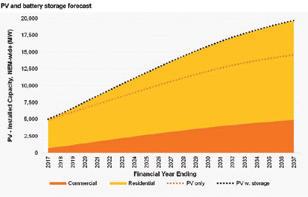
WAYS OF STORING ENERGY
There are many ways energy can be stored, and methods that are applicable to residential to utility-scale applications include mechanical, electrochemical and thermal energy storage.
Mechanical energy storage: Energy can be stored as kinetic energy –such as in a spinning flywheel or as gravitational potential energy – such in a mass of water in a dam. Flywheels have found use in a wide range of

applications, from the International Space Station to remote Western Australian communities. Pumped hydro energy storage systems are prevalent worldwide and form the backbone of many grid-scale energy storage solutions.
Electrochemical energy storage: Rechargeable batteries, hydrogen fuel cells and supercapacitors are all technologies that use the principles of electrochemistry to store and provide energy on demand. In essence, energy is stored and released via the reduction (adding electrons) and oxidation (removing electrons) of particles. This form of energy storage is arguably the most flexible as it can be efficiently (and as of late, relatively cheaply) applied across a huge range of energy storage scales, from milliwatt-hour watch batteries to megawatt-hour utility-scale solutions.
Thermal energy storage: Latent heat is a physical property of materials that has found use in a wide array of applications, from keeping drinks cold in an esky on a hot day to providing a
STORAGE 74 UTILITY • MAY 2018 WWW.UTILITYMAGAZINE.COM.AU
mechanism to store energy as heat for use in industrial processes and generating electrical energy. Latent heat is defined as the energy required to transition a material from one phase to another (i.e. solid-to-liquid or liquid-to-vapour). This energy can be extracted from the material later as heat, leading to a transition of the material back to its initial state.
CURRENT TECHNOLOGIES
Pumped hydro storage accounts for almost 95 per cent of currently installed energy storage worldwide, however there are almost three times as many utility-scale electrochemical storage installations. This is unsurprising as pumped hydro systems typically incorporate large reservoirs with significant capacities, however electrochemical storage systems do not require specific geographic features or a large capital outlay to construct.
Lithium-ion battery energy storage systems are currently the most widespread solution available for residential energy storage solutions. Similarly, lithium-ion batteries dominate
utility-scale battery energy storage solutions, with the famous “world’s biggest battery” in South Australia based on Tesla’s lithium-ion batteries.
There are, however, significant issues that come along with manufacturing and using lithium-ion batteries. Although the relative scarcity and difficult process for extracting lithium has been widely reported, the current issues facing lithium-ion batteries are around the cobalt and nickel required to provide the highest levels of performance. These materials are costly to extract – in dollar, human, health and environmental terms – and mining of cobalt in the Democratic Republic of Congo has been criticised for its use of child labour to meet demand.
THE STORAGE EVOLUTION
There are many new and innovative technologies being developed for residential to utility-scale energy storage applications, with many demonstrations planned, announced or currently underway.
Flow batteries
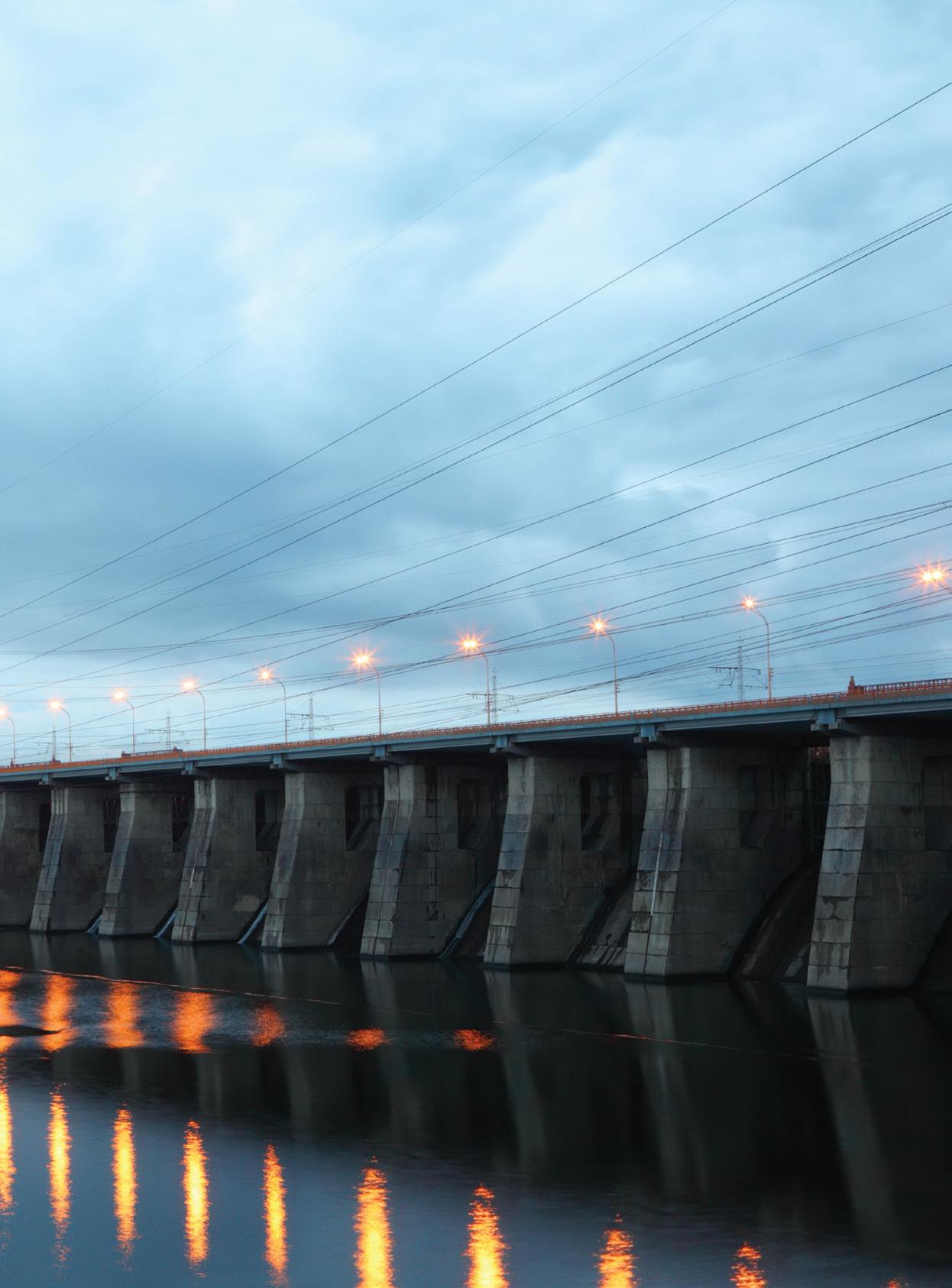
Flow batteries are a hybrid of fuel cell and traditional battery cell technologies – the anode and cathode materials are liquids (rather than solids as in standard rechargeable batteries). Flowing the electrolyte liquids between metal electrodes and a membrane that allows ions to flow and energy to be extracted via the electrodes. Unlike fuel cells, however, the used liquids can be flowed back past the membrane to be recharged, allowing the battery to cycle back-and-forth to release and store energy. A significant advantage of this technology is that the power and energy capacity in the system are largely decoupled – the power is a function of the size of the membrane, however the energy capacity is dependent only on the amount of electrolyte liquid. As such, additional storage capacity can be added to a system by installing larger electrolyte tanks, allowing greater flexibility both during and after deployment.
This technology is gaining traction in off-grid and large-scale energy storage applications, with Australian
STORAGE 75 UTILITY • MAY 2018 WWW.UTILITYMAGAZINE.COM.AU

companies Redflow and VSUN Energy targeting these markets. This is timely, as a recent survey of 500 energy professionals saw 46 per cent of respondents predict flow battery technology will become the dominant utility-scale battery energy storage method in the future.
Sodium-ion batteries
Sodium-ion batteries are similar to lithium-ion batteries in terms of operation, energy density and construction, however sodium is used as the primary element in the oxidation/ reduction cycle. Sodium-ion batteries do not require cobalt, nickel or lithium, which allows many of the issues surrounding sourcing materials for lithium-ion batteries to be sidestepped. An additional benefit of this technology is that the manufacturing processes and plant used to produce lithium-ion batteries can be used for sodiumion batteries, allowing sodium-ion batteries to piggyback on 25 years of manufacturing optimisation and supply chain development.
The University of Wollongong (UOW) is currently leading a $10.5 million ARENA-funded project to develop and demonstrate sodium-ion
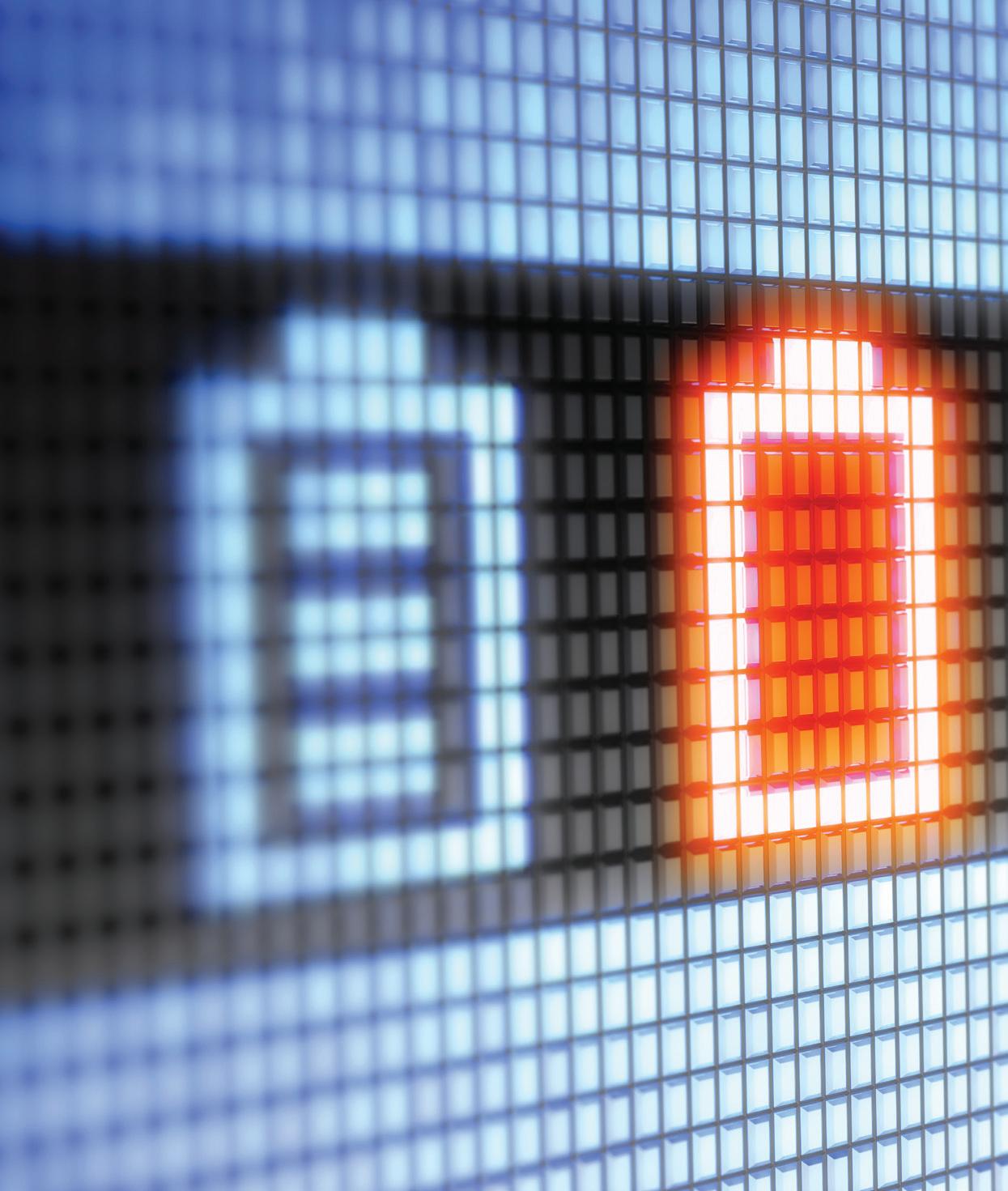
batteries in a number of applications. We’re collaborating with a consortium of national and international partners, including several Chinese manufacturing companies, to scale-up manufacturing of materials developed at UOW. We have also engaged with Sydney Water to demonstrate the sodium-ion battery technology at their Bondi Sewage Pumping Station. There are also several startup companies that have formed around commercialising sodium-ion batteries, and their innovative approaches will further cement this technology as a viable large-scale energy storage solution in the future.
Molten silicon
Molten silicon is an emerging thermal energy storage method that is seeing interest from industrial-scale energy consumers. Silicon has a melting temperature of 1414 degrees Celsius, and a large latent heat (almost 2000 kilojoules per kilogram), meaning very high energy densities are possible with this technology. Another key advantage of this technology is that stored energy can be extracted as electricity or heat, which can be useful for industrial applications that require
process heat (such as in furnaces).
The Australian company 1414 Degrees has been working on commercialising molten silicon energy storage for over ten years and have recently announced a project to install one of their systems at the Glenelg Wastewater Treatment Plant in South Australia.
Concentrated solar power
Concentrated solar power (CSP) with thermal storage is a method of storing energy that combines renewable generation and storage in one process. Light from the sun is focused onto a working fluid – typically a molten salt – which is either used immediately to drive a heat engine or stored in insulated tanks for later use. Many CSP plants use vast arrays of sun-tracking mirrors to focus sunlight on a central tower, in which the working fluid can be heated up to 1000 degrees Celsius. The key advantage of this technology is that it is essentially a dispatchable generator, allowing solar energy to be time-shifted to when it is needed or even to allow continuous generation with appropriately-sized thermal storage tanks.
STORAGE 76 UTILITY • MAY 2018 WWW.UTILITYMAGAZINE.COM.AU
Looking beyond lithium-ion in energy storage
PROTOTYPE SODIUM-ION BATTERY CELLS. SOURCE: UOW/PAUL JONES
CSP with thermal storage has undergone a renaissance in recent years, with many innovative technologies and large-scale deployments being announced. Vast Solar, an Australian company, has developed a modular and efficient ‘CSP plus storage’ system that is currently being demonstrated in regional NSW. At the other end of the scale, Solar Reserve is currently building the world’s largest CSP with thermal storage plant in South Australia, a 150 MW/1100 MWh facility that is anticipated to be operational by late 2020.
FUTURE INTEGRATION
The utility of energy storage for a multitude of applications – including black start services, frequency regulation services, peaker plant replacement, renewables generation smoothing along with many others – is opening doors for the wide-scale deployment of energy storage technologies. Further, a recent CSIRO report stated there is no technical reason the Australian NEM could not move to 100 per cent renewables generation. Such a high renewables penetration would require substantial energy storage capacity to be installed to maintain stability and provide resilience.
While the NEM generation mix will not change overnight – and it may not ever reach 100 per cent renewables generation – it is clear energy storage has a key role to play in increasing resilience, efficiency and cost effectiveness of the grid. As new and innovative energy storage technologies continue to be developed, demonstrated and optimised, even more applications and value propositions will become viable.
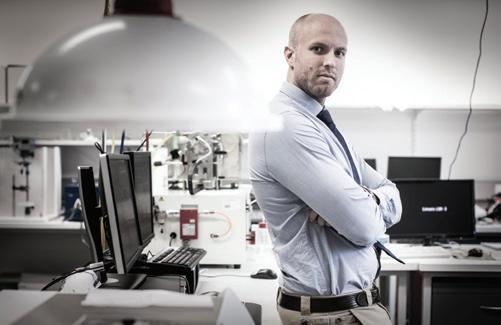



STORAGE 77 UTILITY • MAY 2018 WWW.UTILITYMAGAZINE.COM.AU www.projex.com.au Phone: (02) 8336 1666 E-mail: mail@projex.com.au No downtime on curing! Resistant to: Chemicals, Oils, Gas, Water & Fire 2 Hours Fire-Rating (T-Model) MECHANICAL PIPE SEAL Preferred By Engineers Looking beyond lithium-ion in energy storage About the author: Jonathan Knott is an Associate Research Fellow at the Institute for Superconducting and Electronic Materials at the University of Wollongong. He is currently the Project Manager for the ARENA-funded Smart Sodium Storage Solution (S4) Project. The S4 Project consortium includes the University of Wollongong, Liao Ning Hong Cheng Electric Power Co., Hebei ANZ New Energy Co., McNair Technology Co., and Sydney Water Corporation.
BATTERY STORAGE BOOSTS REMOTE ISLAND POWER STATION
When Horizon Power first built the Mungullah Power Station it committed to incorporating renewable energy into the station. The Carnarvon Energy Storage Trial is the first step in meeting that commitment and is expected to give Horizon Power more information about how it can better support renewable energy installed in Carnarvon, while exploring the benefits of large-scale battery storage in an operating microgrid.
Since mid-2017, Horizon Power has been conducting the cutting-edge trial into the benefits of battery storage to explore ways of meeting energy demand at a lower cost.
Laurie Curro, General Manager Power System Services, Horizon Power, said that the outcomes of the trial will help Horizon Power determine how to optimise the utilisation of battery technology to further its microgrid capabilities.
“The trial involves the integration of two large-scale battery systems which can discharge up to one megawatt of power each at the Mungullah Power Station in Carnarvon. The batteries can store energy and release it instantaneously to provide support for the islanded power station when needed,” Mr Curro said.
“The battery units will primarily be used to optimise spinning reserve which saves on fuel and engine run hours, while giving our power station added flexibility to deal with a raft of challenges we see all our systems being exposed to over the coming years.”
Modelling carried out by Horizon Power indicates that the batteries have the potential of delivering fuel and maintenance savings in the vicinity of $400,000 per annum; costs that would otherwise be used to provide spinning reserve by traditional means.
The batteries were provided by Chinese company, Tianjin
Lishen Battery Joint-Stock Company Limited (Lishen), which won an open tender in October 2016. The batteries arrived in Carnarvon from China in March 2017, and after undergoing commissioning and testing on-site at the Mungullah Power Station, moved into the one year trial period in September 2017.
The trial is testing the capability of the battery units to rapidly provide energy in the event of a spike in demand or one of the generators at the power station stops running.
“The batteries have the ability to store a large amount of energy (equivalent to one of our largest machines running for an hour) that can be called on to support the power station in less than 200 milli-seconds – typically this support is achieved by running another generator,” Mr Curro said.
“The system is also capable of being charged when photovoltaic (PV) systems are producing their maximum outputs, giving us the flexibility of storing that energy and discharging it when our peak demand hits later in the day. We believe mastering the application of technology is key to achieving higher levels of renewable penetration across all our regional systems.”
A NEW LEARNING OPPORTUNITY
The trial means Horizon Power has access to the latest large-scale battery technology and offers the opportunity to build experience and knowledge by using this equipment within an operating microgrid.
Through the trial, Horizon Power is aiming to:
• Understand how best to integrate new technologies into Horizon Power’s microgrids
• Help determine how the technologies cope in WA’s climatic conditions
• Provide valuable operating experience for Horizon Power employees
• Understand how batteries can complement a conventional power system both from an operability point of view as well as an economical point of view
“The trial will enable Horizon Power to determine how a particular technology can be incorporated into Horizon Power’s operating, protection and communications systems, and is expected to provide valuable operating experience for Horizon Power personnel as battery storage reduces in cost
STORAGE 78 UTILITY • MAY 2018 WWW.UTILITYMAGAZINE.COM.AU

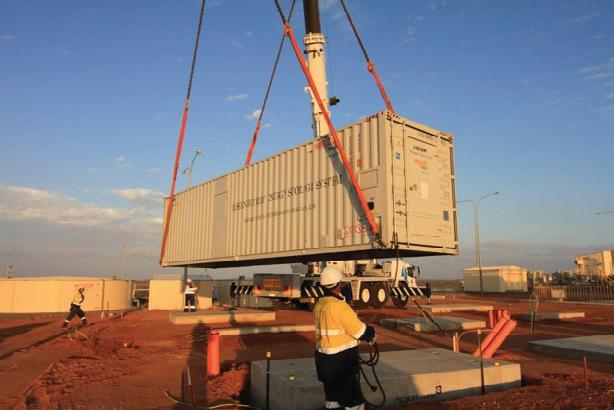
and becomes an integral part of Horizon Power’s future systems,” Mr Curro said.
“The batteries are providing an exciting learning platform for Horizon Power as they respond to real life operating scenarios like generator trips and network faults. The battery can also be used to store energy when renewable output is at its highest and be discharged on demand.”
With the trial well underway, Mr Curro said that the main challenge to date has been ensuring accurate communications between all the various control systems at the power station.
“It has been very challenging to make sure the battery receives the right signals at the right time as this informs it how it needs to respond. If you get this wrong then the battery doesn’t quite know what to do which can be problematic.
“The other challenge relates to how the battery responds under fault conditions. In an islanded power station like Carnarvon, even the smallest network faults can impact the power station. Having the battery set up to be able to ride through these network faults is important for reliability as well as system stability.”
INCORPORATING THE TECHNOLOGY INTO FUTURE ACTIVITIES
Valuable lessons have already been learnt as the trial moves into its final stage.
“The design of the battery systems need to consider longer term maintenance activities as well as performance. If we had our time again, we would make sure the enclosures were more operator friendly with better access for undertaking maintenance like battery cell replacements which will happen from time to time,” Mr Curro said.
“We have also learnt that establishing robust communications and control architecture is
critical to achieving utility grade reliability, and that sometimes these links can be too slow to respond so you then need a primary response from the battery itself.”
As the battery systems are connected to islanded microgrids, they need to be able to withstand harsh environmental conditions and respond quickly to network faults, which means the housing of the batteries and integration of the control system are very important.
The chemical makeup of the battery cells plays an important part in their preferred operating conditions, as does the ability to regulate the temperature around the cells –typically batteries don’t like to get too hot.
Horizon Power has been using battery technology in its control systems for many years but the use of large-scale batteries for bulk storage and high energy discharge to support the power system is new to the utility.
Mr Curro said that Horizon Power will be applying the results of the trial to future projects and initiatives to better support the installation of renewables within its network.
“While we have already deployed smaller storage systems using different technology in several of our remote systems previously (Yungongorra – solar smoothing batteries, Marble Bar, Nullagine – spinning flywheel) our next large-scale battery system will be deployed in Onslow later this year. Following that, we have a plan for each of our systems to adopt new technology as it becomes economical.
“Horizon Power will use the experience gained in this trial and its own microgrid operating knowledge to optimise the use of the type of technology to create innovative energy solutions for the best outcome for the people of Western Australia.”
STORAGE 79 UTILITY • MAY 2018 WWW.UTILITYMAGAZINE.COM.AU
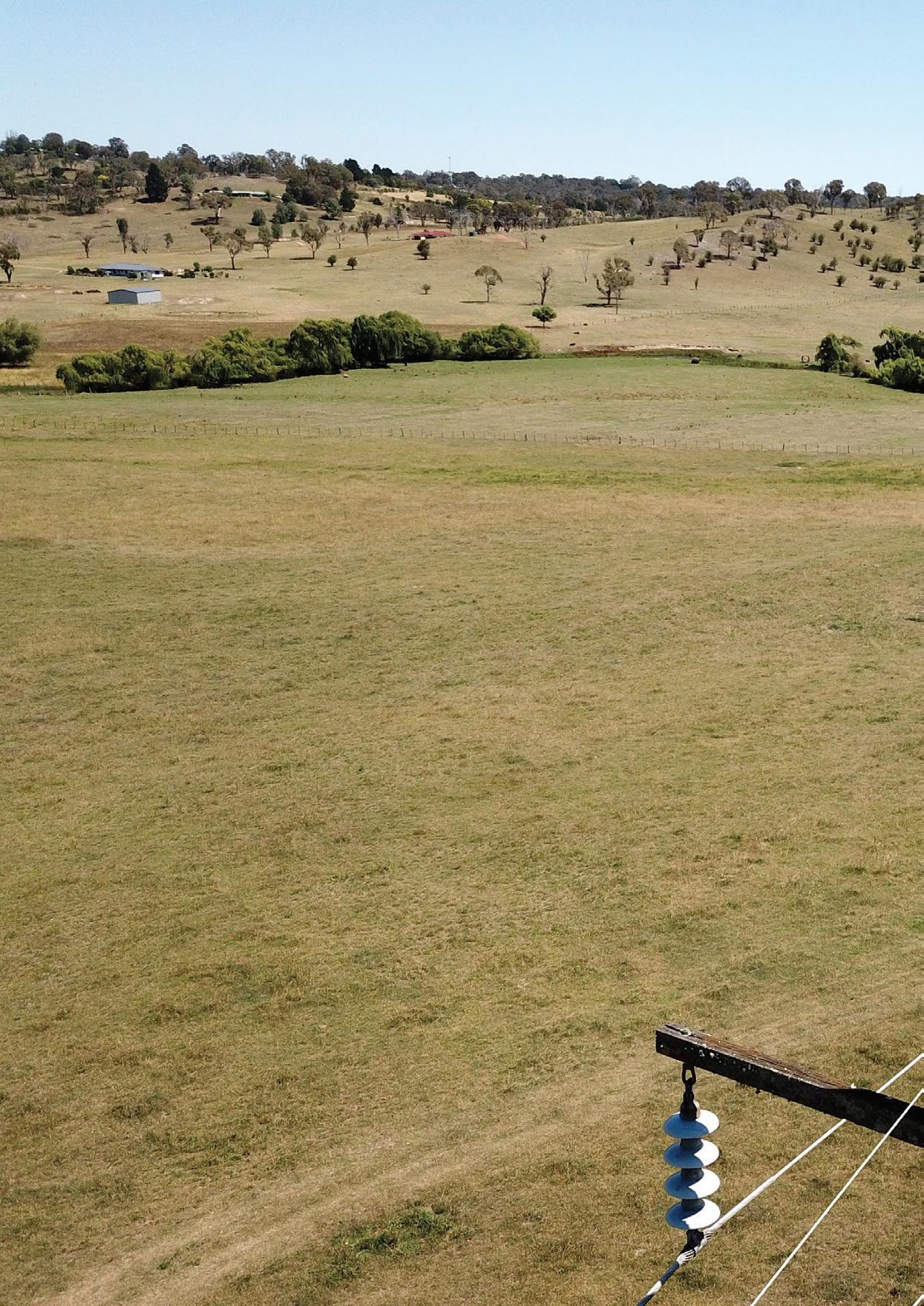
New pole inspection technology PROVIDES NEW PERSPECTIVE
As the energy industry undergoes significant and rapid change, electricity network businesses such as Essential Energy are looking to new technology to improve operational efficiencies, including new technology to improve inspection and condition assessment.
UTILITY • MAY 2018 WWW.UTILITYMAGAZINE.COM.AU INSPECTION 80
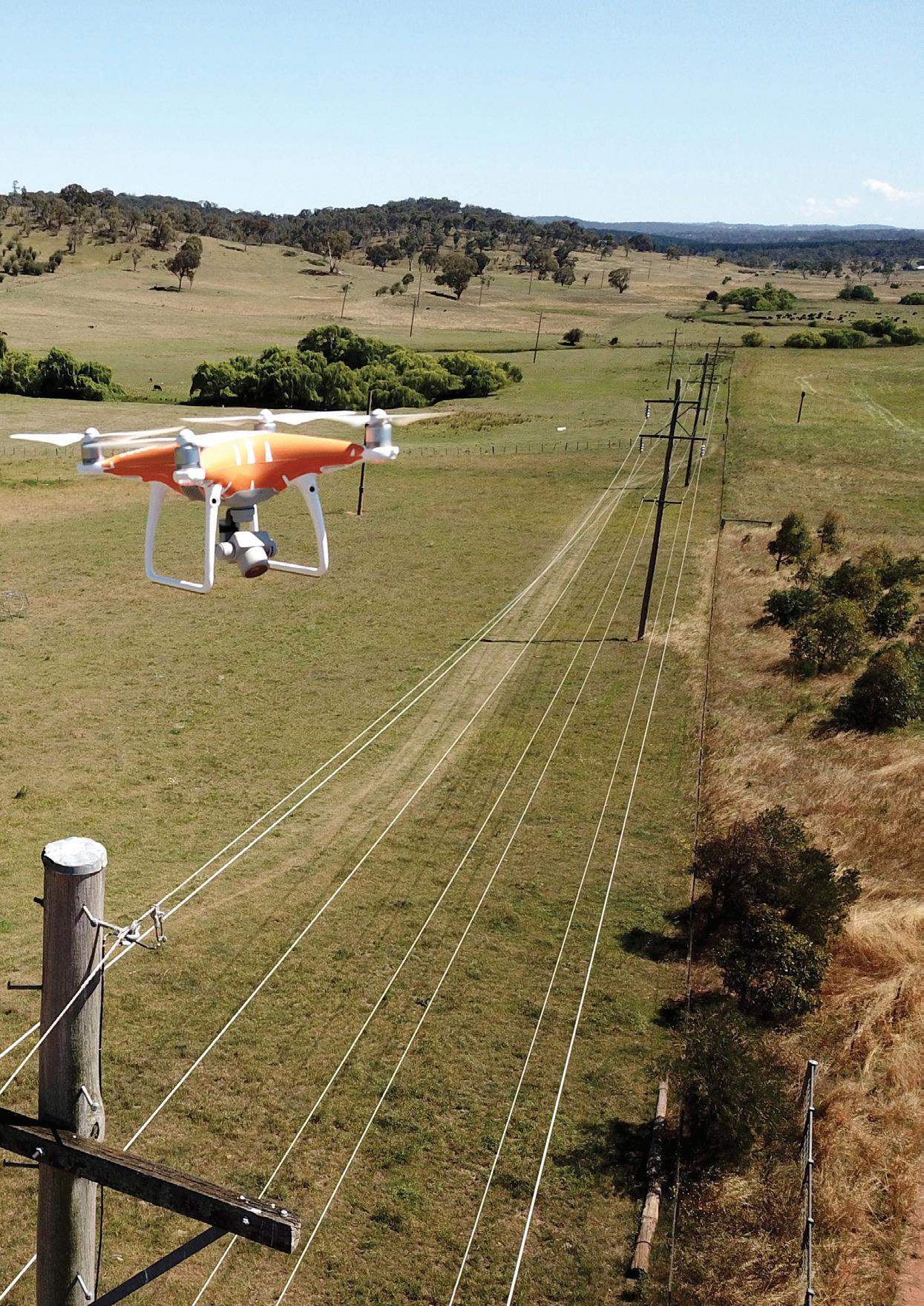
AN ESSENTIAL ENERGY DRONE
COLLECTING VITAL DATA ON THE CONDITION OF ASSETS.
UTILITY • MAY 2018 WWW.UTILITYMAGAZINE.COM.AU 81 INSPECTION
New pole inspection technology provides new perspective
Essential Energy is responsible for building, operating and maintaining one of Australia's largest electricity networks, delivering essential electricity network services to more than 800,000 homes and businesses across 95 per cent of NSW and parts of southern Queensland.
Luke Jenner, General Manager Network Services at Essential Energy, said technology offered an opportunity to improve energy affordability and reliability for customers.
“Our use of technology is part of our continued focus on best practice systems which in turn increases productivity, provides best value for customers, and enhances employee health and safety,” Mr Jenner said.
“Recent additions to the Essential Energy toolkit include new pole inspection technology, increased use of Light Detection and Ranging (LiDAR) data for strategic asset management, and a growing fleet of drones to provide a new network perspective.”
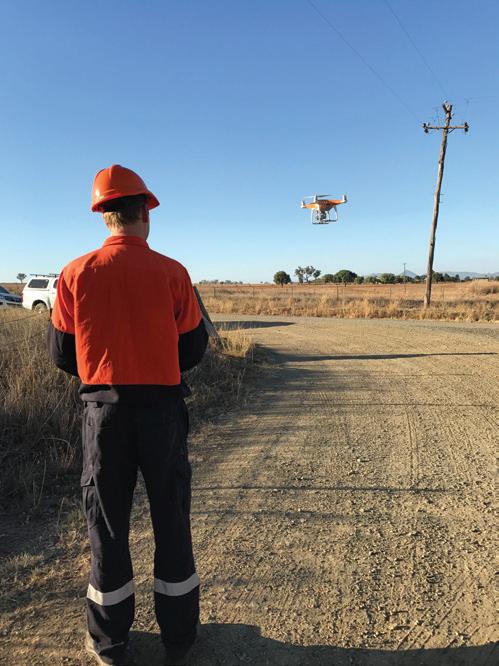
NEW DRILLS PROVIDE MORE ACCURATE DATA
It is estimated the use of new drill technology will deliver Essential Energy annual cost savings of $1.3 million and provide improved asset condition data through more accurate pole density measurements.
“From July 2018, new hand-held automated wood inspection drills are being rolled out following a successful field trial of the new equipment across seven environmental zones,” Mr Jenner said.
“Our extensive field trial of the drills late last year found that the improved ergonomics meant that they were easier to handle for asset inspectors than current equipment and resulted in less injuries."
The new drills automatically drill through the diameter of the pole whilst measuring the resistance to drilling. This information is stored electronically and analysed to provide an extremely accurate picture of pole condition.
“The inspection procedure itself is less invasive and minimises damage to the pole structure as there is significant reduction in the need to drill larger inspection holes in all poles,” Mr Jenner said.
A critical component of the technology is the improved measure of remaining pole timber compared with current methodology, enabling better pole defect identification.

A
IMPROVING NETWORK CONDITION DATA
Essential Energy uses a variety of tools and resources to monitor network asset condition from both the air and ground. The introduction of Light Detection and Ranging (LiDAR) technology in 2014 improved Essential Energy’s network condition data.
“LiDAR allows for the measurement of distance between powerlines and vegetation, the ground and surrounding structures using aircraft-mounted laser imaging, in conjunction with high-definition photography. The images provide details of Essential Energy’s assets with precision and accuracy,” Mr Jenner said.
In 2017, this data moved to cloud-based storage technology which improved access and accuracy of data collected through this process.
“LiDAR images are now easily accessible by our asset managers via the cloud. They are catalogued annually and quarantined for quality assurance testing to vastly improve the effectiveness of strategic asset management,” Mr Jenner said.
“We will provide data for field-based employees to view on mobile devices, use LiDAR with Essential Energy systems for in-house analysis, and provide external parties with restricted access for further analysis. This improves the resource availability, creates cost-effective outcomes and reduces risks associated with defects.”
UTILITY • MAY 2018 WWW.UTILITYMAGAZINE.COM.AU 82
LIDAR IMAGE HELPING TO BETTER UNDERSTAND THE ENVIRONMENTAL IMPACTS OF ASSETS.
INSPECTION
AN ESSENTIAL ENERGY FIELD WORKER USING DRONE TECHNOLOGY IN THE FIELD

With a footprint covering alpine, arid inland and coastal areas, the collection of LiDAR data also enables Essential Energy to better understand environmental impacts on its assets.
LOOK TO THE SKIES
Another aerial technology recently introduced by Essential Energy to improve planning and scheduling works is drone technology. Fifteen drones are now in operation in Armidale, Bega, Coffs Harbour, Dubbo, Hastings, Tamworth, Tumut, Tweed and Wagga Wagga with the fleet expected to increase in the future.
“Drones are enabling our workforce with mobile solutions that enhance safety, drive efficiency and expand on employee capability with new technology,”
Mr Jenner said.
“Successful trials have shown the value drones add by putting staff safety at the forefront, delivering productivity outcomes and returning vital data on the condition of assets.”
Some jobs previously required staff to use elevated work platforms or even physically climb poles – often multiple times. These are now being completed with limited risks for staff and at times in areas that were inaccessible for vehicles or equipment, such as flooded or mountainous terrain.
“Not only can asset condition now be assessed in a safer manner, but drone technology is dramatically reducing the time needed to complete radial live line inspections, as well as identify and resolve faults,” Mr Jenner said.
Overall, Essential Energy’s focus on technology, best practice systems and customer-centred outcomes will provide value for its 1500 local communities served.
“New tools and technology will allow us to deliver innovative solutions that improve the affordability, reliability and resilience of energy into the future,” Mr Jenner said.
UTILITY • MAY 2018 WWW.UTILITYMAGAZINE.COM.AU 83
New pole inspection technology provides new perspective
INSPECTION
Utilising 3D imagery FOR MORE ACCURATE ASSET ASSESSMENT
All utilities must have accurate asset information in order to plan maintenance and, most importantly, make sure employees and the community are safe.
United Energy, which distributes electricity to more than 640,000 customers across east and southeast Melbourne and the Mornington Peninsula, needed to conduct a survey of its network to ensure that it had accurate asset data for its asset maintenance, operational and strategic decision-making.
At first, United Energy considered traditional methods with boots on the ground but an initial investigation showed this to be slow and expensive.
Geomatic Technologies was confident it could achieve the required 95 per cent accuracy at a lower unit cost with a survey methodology using AIMS 3D imagery, offshore data extraction and onshore quality assurance.
Geomatic Technologies’ AIMS3D field capture system is an innovative solution that allows a utility to rapidly and cost-effectively capture a comprehensive 3D view of its network. Merging panoramic imagery and LiDAR sensors, AIMS3D efficiently maps, measures, documents and records networks without the need for traditional, time consuming survey methods.
High-resolution cameras provide detailed 360-degree panoramic imagery and can be mounted on road or rail vehicles for rapid image and LiDAR capturing.
Survey accurate GPS and IMU sensors deliver exact positioning and alignment data, while engineering quality LiDAR enables accurate mapping and measurement. Sensor configurations are also customisable to align with individual business needs.
Once captured, the 3D imagery can be accessed via a standard browser-based web viewer so everyone in the
organisation can quickly and easily access the information they need.
AIMS3D imagery can be easily embedded into any web based application without the need for programming, or can be fully integrated into third-party products via the AIMS3D API.
VISUALISING NETWORK ASSETS
United Energy engaged Geomatic Technologies to do a pilot survey of its electricity and third-party communications infrastructure across 12 suburbs in Melbourne, approximately 25,000 poles along 1000km of road, over 15 per cent of its network.
As a result, Geomatic Technologies delivered a data set on electricity and telecommunications infrastructure assets in the pilot area that exceeded United Energy’s required 95 per cent accuracy threshold, with this data quality achieved at a significantly lower cost to the business.
The survey has uncovered high-value information for United Energy about the condition of its assets, leading to more efficient work planning and execution, maintenance cycles that reduce risk of network and equipment failure and the replacement of some assets.
Geomatic Technologies now has a proven survey methodology that can be applied to any asset survey. Network owners wanting to reduce the cost of delivering business-critical functions can rely on its experience, expertise and quality assurance processes to leverage operational and strategic benefits, without risk to safety, service integrity and reputation.
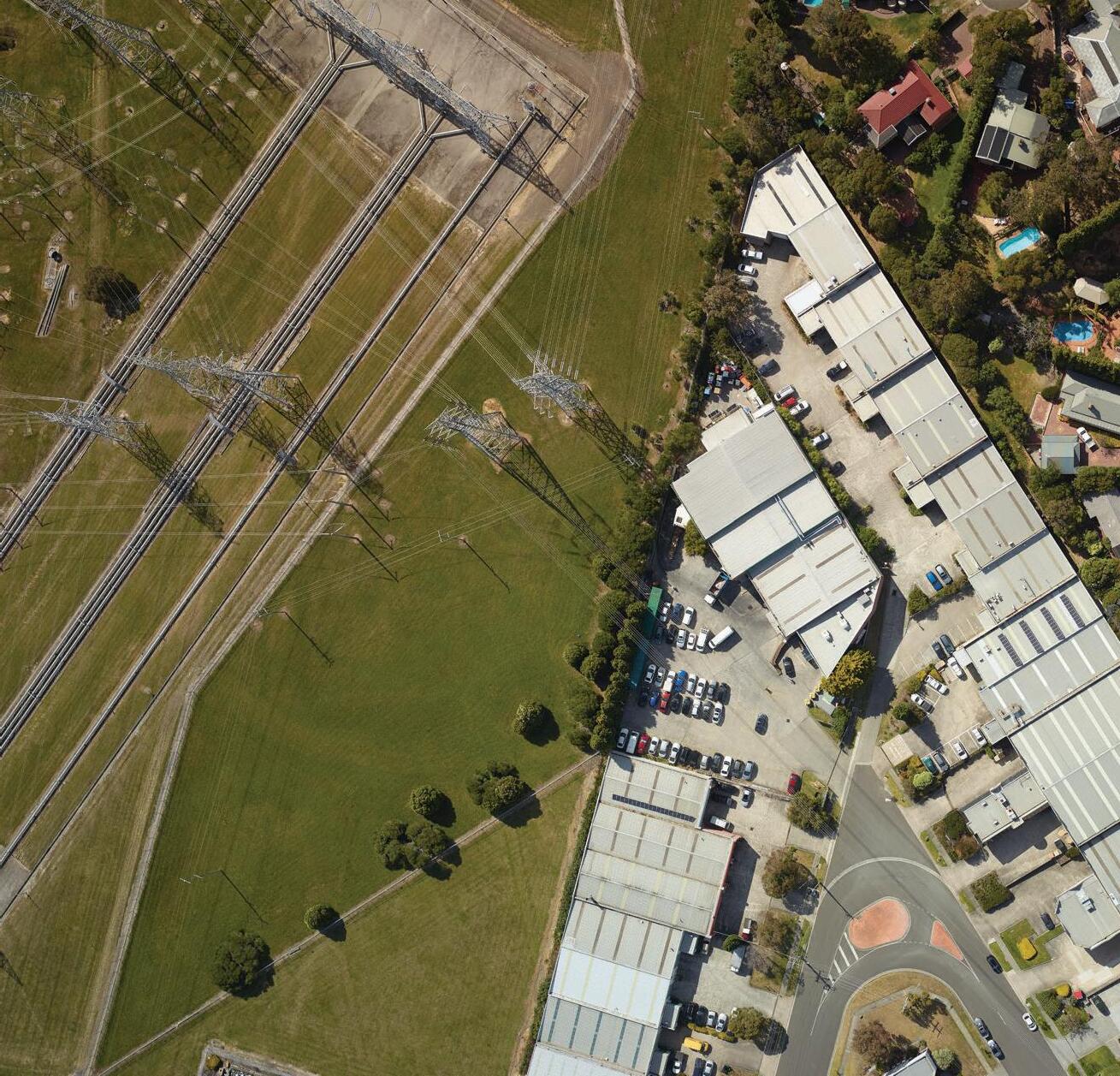
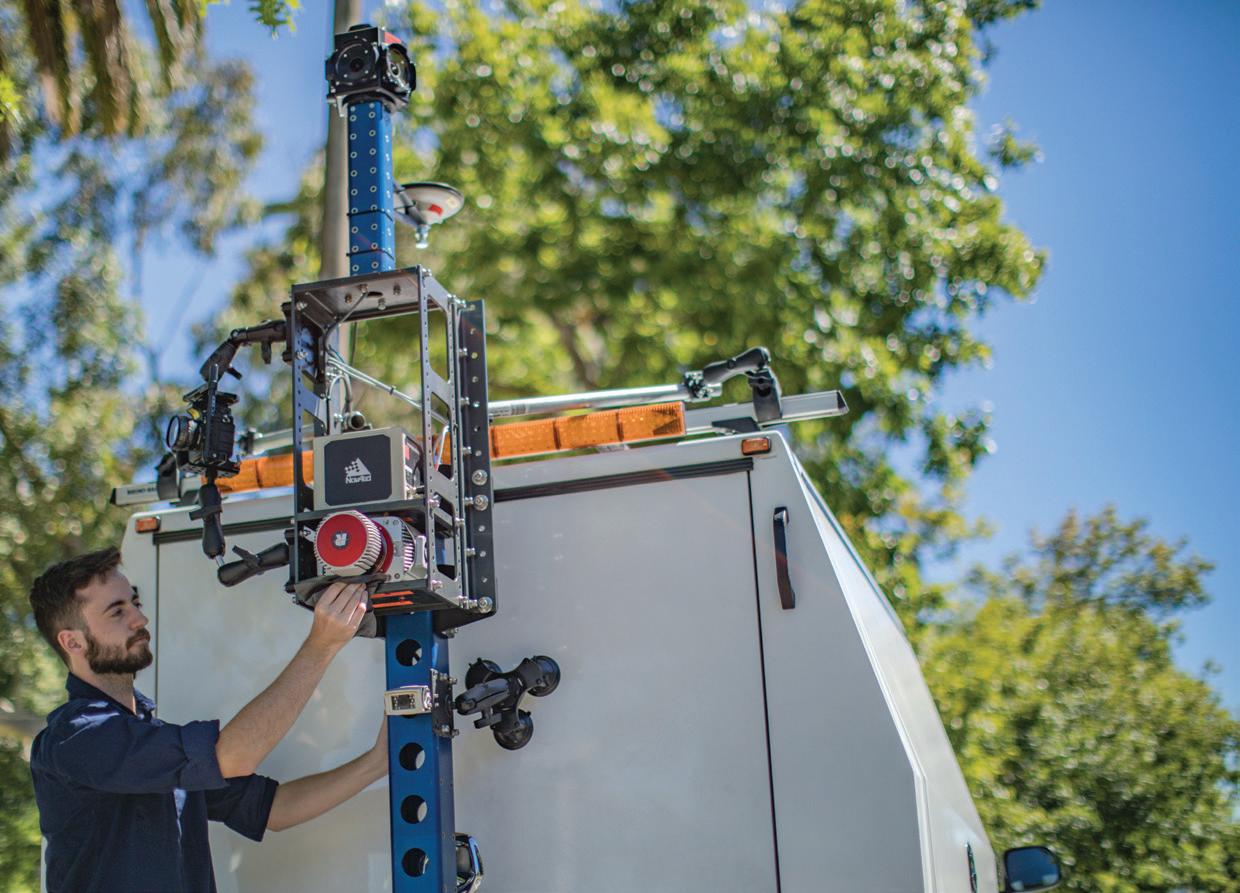
UTILITY • MAY 2018 WWW.UTILITYMAGAZINE.COM.AU 84
INSPECTION Utility Partner Solutions
Asset intelligence to support safe and efficient networks


What we do



Advanced mobile and spatial solutions to solve complex asset and data management challenges.
Capture & Asset Mapping
Reduce your network risks and maintenance costs
Processing & Analysis
Make sense of your spatial data, whatever the source
Visualisation & Reporting
Deliver timely information to reduce errors and accelerate action
Mobile Workforce Management
Manage your mobile workforce and streamline operations
Data Maintenance
Reduce your costs without compromising service or safety
geomatic.com.au WATER ELECTRICITY GAS TELCO TRANSPORT GOVERNMENT
Our approach to VEGETATION MANAGEMENT
by Matt Thorpe, Head of Network Compliance, United Energy, CitiPower and Powercor
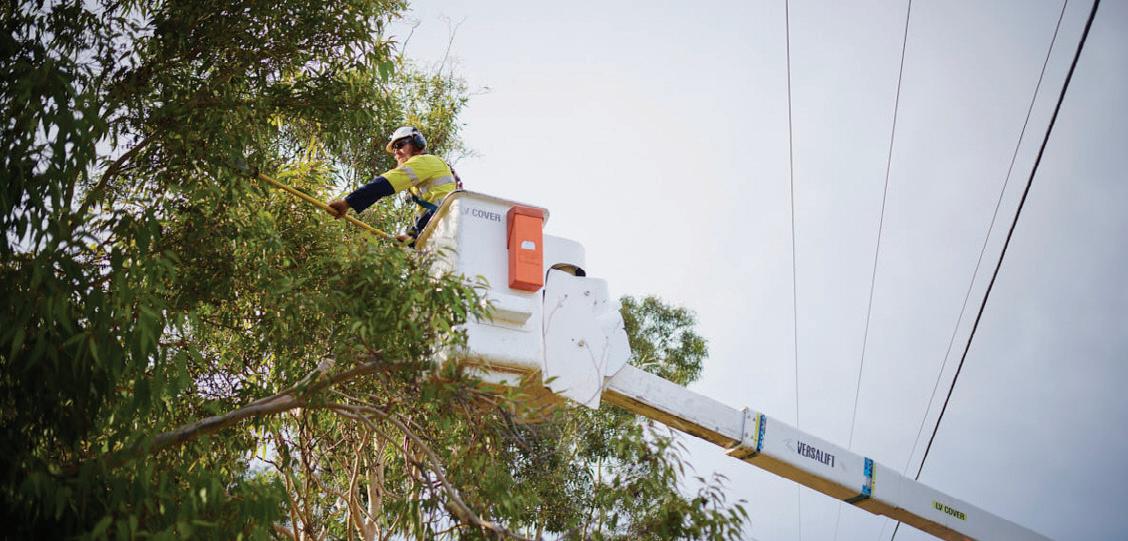
For the past seven years, Melbourne has been ranked the world’s most livable city – and as a Melbournian, it’s hard to disagree. For me, it’s the environment – the trees – that contribute to not just Melbourne’s reputation, but the state’s, as a great place to live and visit. But, as Head of Network Compliance at United Energy, CitiPower and Powercor, it’s Victoria’s leafy characteristics that also pose a challenge when it comes to managing our network.
We know vegetation can cause power outages, or worse, fires.
As an electricity distribution company, our priority is to continually improve the safety of our network for the communities we operate in, so vegetation management is an area that we focus on all year round.
We oversee three networks–United Energy, CitiPower and Powercor–that cater to customers from inner-city Melbourne through to rugged coastal hamlets and harsh dry plains in north-west Victoria.
In the Powercor network, we have some of the state’s highest bushfire risk areas, while our CitiPower and United Energy networks are home to suburbs that are made up of tree-lined streets that pose their own challenges when it comes to making sure vegetation is kept clear of our powerlines.
It’s our role to take all reasonably practicable efforts to minimise the chance of a branch or tree coming in contact with our power assets and causing outages or bushfires.
So how do we manage the risk posed by more than
10 million trees across our networks, which cover more than 70 per cent of Victoria, including some of the most bushfire-prone parts of the state? With the help of the latest technology.
THE NUMBERS
Each year, several major network faults across Powercor, CitiPower and United Energy are caused by vegetation. Most commonly these are a result of trees or other plants blowing into contact with powerlines during wild weather and we’re working hard to get that figure even lower.
That involves inspecting 400,000 spans (one span is the powerline between one pole to another) each year and cutting back vegetation at almost one-fifth of those sites.
OUR COMMITMENT TO SAFETY
Energy Safe Victoria (ESV) guidelines regulate the industry, ensuring trees and vegetation are maintained at a safe clearance from powerlines.
UTILITY • MAY 2018 WWW.UTILITYMAGAZINE.COM.AU
VEGETATION MANAGEMENT 86
When it comes to the required vegetation clearance distances, it’s not a one-size-fits-all approach.
ESV’s Code of Practice for Electric Line Clearance is calculated based on a range of criteria including whether the powerline is in a hazardous or low bushfire-risk area, the type of conductor, whether the powerline is high or low voltage, and the length of the section of powerline between power poles.
Special allowances are made where necessary, and considerations are made when assets fall within significant zones such as heritage sites.
Across our networks about 300 staff are employed directly and indirectly for vegetation management, executing on our carefully-considered vegetation management plan.
DATA-LED INTELLIGENCE
Technology now plays a vital role in collating and managing information across our enormous asset network.
Low-flying helicopter inspections and automation are helping us stay ahead of the challenge, particularly in our most fire-prone zones.
Three Bell 206 helicopters fly 250-500m above powerlines and use state-of-the-art Light Detection and Ranging Measurement (LiDAR) surveying equipment to scan the assets and vegetation.
LiDAR’s remote sensing method uses a pulsed laser to measure distances between a conductor and nearby vegetation to an accuracy of within 10cm.
The chopper-mounted measuring units send data back to specialist teams in the office for analysis and to determine what needs removal.
The process helps prioritise works required for the next fire season, and alerts us to any urgent work to ensure we can enlist immediate attention.
We’re industry leaders in using LiDAR as the sole inspection method for both hazardous bushfire-risk areas and low bushfire-risk areas, and the data is easily transformed into work instructions to enable cutting teams to do their work.
Since LiDAR was introduced, we have been able to detect hazardous trees more accurately, helping reduce the likelihood of vegetation causing outages.
Since December, we have been flying our helicopters across the western part of the state to get ready for the next fire season. The weather may be cooling off, but for us the work to prepare for summer and the storm season happens all year round.
While the management of vegetation across our electricity network is challenging, the opportunities new technology is providing is fast transforming how we work and is an exciting part of the future.
Power Safety Training is a leader in the delivery of specialist vegetation control training for the electricity supply industry in Australia.
We provide training in nationally-recognised and industry-specific qualifications and units of competency as required of the electricity network providers for their vegetation control staff and contractors.
• Certificate II in ESI (Powerline Vegetation Control) (UET20312) Including all ESI stream units for Groundline, EWP, Climbing, Scoping, Specialised machinery, LV switchboard rescue
• Close Approach Vegetation Control (CAVC) training for qualified workers to work within safe approach distances
• Chainsaw training: Beginner to Advanced
• Machinery training: Chipper, mulcher and skid steer
• Chemical licence training (QLD & NSW)
• Provide First Aid and Provide CPR
Come to our training facility in Tamworth, NSW or we can travel to you.


UTILITY • MAY 2018 WWW.UTILITYMAGAZINE.COM.AU
VEGETATION MANAGEMENT 87
INDUSTRY EXPERTS DELIVERING SPECIALIST TRAINING
Contact us today for training rates and to book your next company course (individuals also welcome): training@powersafetytraining.com.au www.powersafetytraining.com.au ph 07 3288 8800 Registered Training Organisation 45198
BIGGER OPTIONS – BIGGER PRODUCTIVITY GAINS
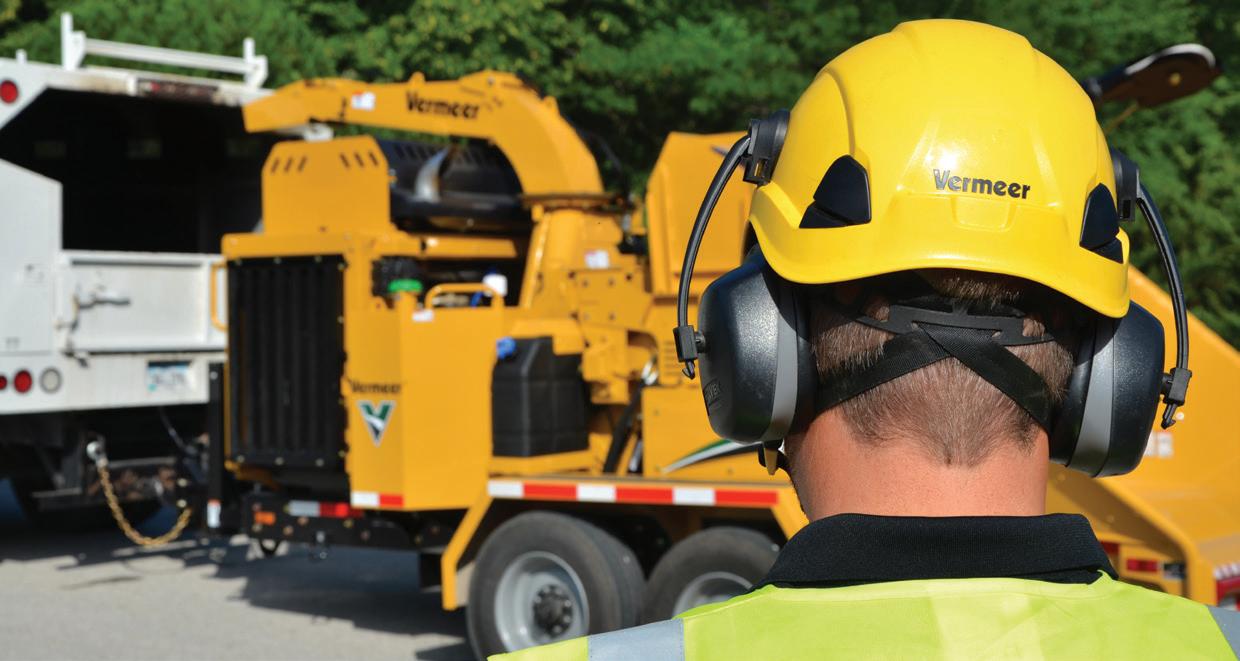
The management of large vegetation near electrical infrastructure such as poles and wires is vital for keeping assets and the community safe, and reducing the risk of fires and blackouts. As it is one of the highest operational expenditures for a utility and there are often vast quantities and varieties of vegetation to work with, contractors and utilities can greatly benefit from equipment that helps reduce costs through efficiency and productivity.
Vermeer Australia’s National Sales Manager for Environmental Equipment, Craig Baillie, said many utilities outsource the task of vegetation management. This means companies that can provide them with cost savings have a competitive edge.
“Vegetation management for utilities can involve a wide-range of tasks, including tree pruning, brush removal and hazard tree removal, and when it comes to processing larger wood waste a machine that can easily do this
will be able to improve efficiency and productivity.
“Processing large wood waste with smaller wood chippers means the timber needs to be broken down more prior to processing, making the job more labour intensive and time consuming.
“Utilising a large chipper such as the Vermeer BC2100XL, which features a chipping capacity of timber up to 21 inches or 53.3cm in diameter, can dramatically reduce the amount of work required before the timber can be
processed. Often an entire tree can be fed directly into the chipper.
“When you consider the costs related to this sort of work in an urban environment, any reduction in job time frame results in significant reduction of associated costs such as human resources and traffic control — as well as less impact on neighbours.
“A chipper like the BC2100XL is small enough to provide efficiencies for smaller jobs whilst being big enough to allow for larger material to be disposed of without needing to invest in a whole
UTILITY • MAY 2018 WWW.UTILITYMAGAZINE.COM.AU
VEGETATION MANAGEMENT 88 Utility Partner Solutions
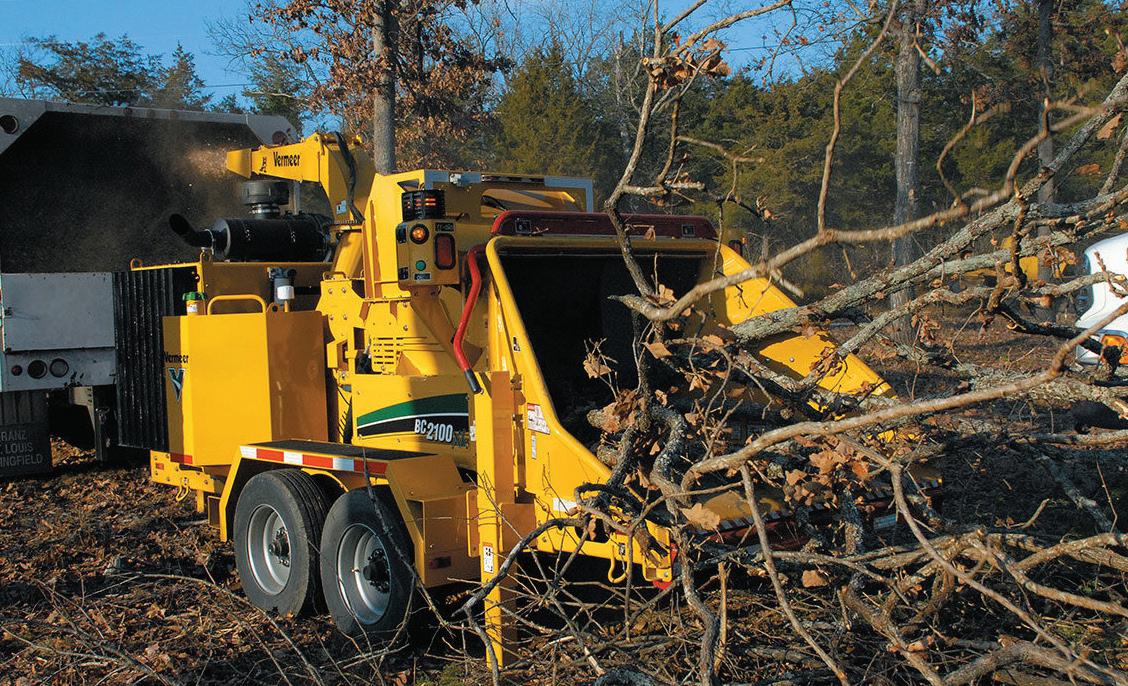
tree chipper. It’s the best of both worlds for those regularly dealing with large timber.”
IMPROVING PRODUCTIVITY WITH SMART SYSTEMS
The BC2100XL has been designed with a number of features to make it more productive and efficient.
Its SmartFeed system increases operator productivity while reducing strain on vital engine parts. This system monitors engine rpm and senses jams, automatically stopping or reversing the rollers as needed, even turning them independently to turn and re-feed timber at the required orientation.
When feeding larger trees into the chipper, the system can sense feed roller jams, reducing strain on the engine and heat buildup within the hydraulic system.
It also features Vermeer’s SmartCrush system, again to improve performance when dealing with larger material. Once the upper feed roller freely raises for four seconds, it will automatically increase down pressure
on the material being fed, allowing the upper feed roller to easily climb onto large forked material before the increased down pressure is applied for maximum pulling force.
The lower feed roller is also designed to offset from the upper feed roller by 11" (27.9cm). This means material is more easily pulled to the upper feed roller, so there is less need to manually raise the upper feed roller for larger diameter material.
IMPROVED SAFETY FOR OPERATORS
As well as improving productivity, the BC2100XL is equipped with a number of features to improve operator safety.
“The health and safety of workers plays an important role in productivity gains, and using the right machine can help reduce fatigue and chance of injury,” Mr Baillie said.
“The BC2100XL provides operator safety as it has a 153.7cm feed table for extra distance, as well as our exclusive bottom feed stop bar system.
“The need to drag large material to
the chipper is also eliminated with the option to include a 150 inch (45.7m) winch line. This winch has a Rope Line Pull rated to 1814.9kg, making it easy to lift logs directly onto the feed table.
“The winch can also be hydraulically raised out of the way to allow operators to feed the unit using a mini loader like our CTX100.”
Safety is further improved with the option to include a remote control so that operators can use a mini loader to load while still maintaining control of the chipper. Using the remote control, the operator has control over forward, reverse and stop functions of the feed rollers, restarting the feed rollers, engine throttle, engine stop, crush boost for the upper feed roller and hydraulic discharge chute positions (if equipped).
“Vermeer’s BC2100XL has been built with productivity, efficiency and safety in mind so that contractors can take on a wider variety of jobs, and save time and money.”
UTILITY • MAY 2018 WWW.UTILITYMAGAZINE.COM.AU
VEGETATION MANAGEMENT 89 Utility Partner Solutions
pp RR
Organisational resilience: what it means for THE UTILITY SECTOR
by Col Muller, Business Continuity and Resilience Manager, SA Water and the Resilience Expert Advisory Group (REAG)
Why is organisational resilience important for the Australian utilities sector?
Societies
are highly reliant on the continuous availability of utility services. The total economic cost of natural and man-made disasters in Australia exceeded $9 billion in 2015. This is expected to rise to an average of $33 billion per year by 2050 unless steps are taken now to increase resilience. Clearly our society is highly reliant on a continuous availability of utility services.
Recent Australian events such as the 2009 Black Saturday Bushfires in Victoria; the 2010-2011 floods in Queensland, Victoria and New South Wales; the 2016 floods in Tasmania; and the 2016 South Australian Blackout, all highlight how vulnerable Australian utility operations can be to novel events.
Australia is lucky that it has not yet suffered a catastrophic disaster synonymous with a significant death toll, an unprecedented long-term disruption of utility services to communities and businesses, widespread and sustained loss of public utilities, and the displacement of entire populations and exceeding our resource response capability.
Australia is also experiencing increased interaction at the urban and rural interface, pushing up against limits on natural resources, an increased reliance on global supply chains, creating instability in the economy and financial markets, and challenges to social cohesion.
In response to these challenges, governments, businesses and the community are demanding greater resilience, higher levels of safety and increased efficiency in restoring services. Consequently, the utility sector has an opportunity to lead civic responsibility and enhance organisational resilience in an effort to reduce the impact of unforeseen interruptions on communities.
But the six million dollar question is, who is responsible for organisational resilience? Our answer is everyone!
CREATING A RESILIENT CULTURE
A resilient culture arises when all employees are willing, able and empowered to contribute to enhancing organisational resilience. They can do this in their organisation by working collaboratively to identify areas for improvement, and by identifying, leading and supporting solutions which address the problem. Importantly, management has the
opportunity to support and lead employees in working through these initiatives. In this way, the entire organisation is positively contributing to organisational resilience by creating a resilient culture.
A culture which builds employee resilience makes connections between individuals and organisations they work in. A resilient workforce is dependent on enabling conditions set by organisations they work within. This is an ongoing and iterative process of responding, anticipating, adapting, coping and thriving in response to changing workplace and broader business and sector circumstances.
An organisation’s executive has a further critical role to play in achieving resilience outcomes. Management’s job is to facilitate change management initiatives to comply with policy adherence and change if necessary, foster innovation and creativity within the workforce, and to sponsor resilience initiatives through to fruition.
Consumers expect essential utility services to be available regardless of any shock to utility operations. Utility operators and those dependent on continuous supply of utility services are advised to enhance organisational resilience. But what does this actually mean?
We want to debunk the myth that organisational resilience is only for larger concerns and provide an appropriate industry approach.
WHAT UTILITIES SHOULD BE DOING
Organisational resilience is not solely about recovering from a crisis. It involves preparedness, prevention and mitigation strategies, recovery and response plans. During each phase, organisations need to display important attributes that are culturally embedded in their organisation. Organisational resilience requires the convergence of multiple capabilities that allow an organisation to manage
90
ORGANISATIONAL RESILIENCE UTILITY • MAY 2018 WWW.UTILITYMAGAZINE.COM.AU
its critical vulnerabilities and create the adaptive capacity to respond to changing circumstances in a complex and often uncertain business environment. An outcome of organisational resilience is the ability to survive, and even thrive, in times of crisis.
By embracing and supporting innovative ideas to improve asset management, organisations will be well placed to enhance their resilience and safeguard operations against corporate compromise due to asset-related risk exposures.
Organisations require strong leadership which encourages their employees, and empowers them to make decisions and to understand the important link between their own work and organisational resilience. Employees should be encouraged to maintain their situational awareness, which involves information sharing on improvements, both internally and externally, to transfer knowledge and experience, and ensure interdependencies are known, explored and where practical, exploited.

In addition, organisations need to break down silos, foster internal and external relationships and collaborations to ensure productive relationships are developed to leverage when needed. Organisations need to be change-ready by providing an organisation-wide awareness and engagement of purpose and priorities following a challenging or adverse event. Organisations should develop, evaluate and frequently test and review plans, strategies and capabilities to manage vulnerabilities in relation to the business environment and its stakeholders. And this should be done in a climate of mutual respect and understanding that all parties are acting with good intent to ensure long-term viability of their organisation.
Organisations need to participate in simulations or incident scenarios designed to practice response strategies to internal and external stresses and disruptions. Organisations require a proactive strategic and behaviour posture which is ready to identify and respond to early warning signals of change in an organisation’s internal and external environment or operational context before it escalates into a major challenge or adverse event.
Only when organisations embed these attributes into a preventative and mitigation strategy, preparedness activities, in response, and finally into recovery activities, will an organisation have an ability to not only bounce back after an adverse event but to bounce forward.
Whilst there is a multitude of resources available to assist utility operators to enhance their organisational resilience, it is useful to know that as part of the Australian Government Critical Infrastructure Resilience Strategy, there are a number of expert advisory groups willing to assist.
The Resilience Expert Advisory Group (REAG) provides advice and strategic thinking on organisational resilience to support the continued operation of critical infrastructure regardless of the hazards. REAG has a number of free industry-focused resources to assist utility operators in enhancing their resilience and these are commended to you for consideration. What
More information is available at the Organisational Resilience website www.organisationalresilience.gov.au

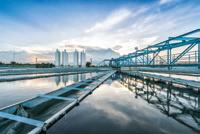

91
$
is Resilience?
is it impoRtant?
is Responsible?
to get help? The cycle of risk: Prevention, Preparedness, Response & Recovery The #1 global risk in 2017 in terms of likelihood was extreme weather events Everyone contributes to enhance resilience The resilience experT advisory group in the critical infrastructure centre has a suite of tools to assist you Business interruption including supply chains was identified as the #1 global business risk Management creates a resilience culture in only 15 minutes the HealTHcHeck tool provides a snapshot of your organisation’s resilience The potential cost to australia is $33 billion if we do not enhance our resilience Executive enables the organisation to achieve resilience outcomes The good Business guide provides possible treatment actions to improve your organisation’s resilience Having the attributes to survive a crisis and thrive in a world of uncertainty The ability to not only bounce back after an adverse event but to also bounce forward pp RR += Networks & relatioNships leadership & Culture ChaNge ready (World economic Forum 2017) (allianz, 2017) (Deloitte 2017) $ ORGANISATIONAL RESILIENCE
Resilience
Why
Who
WheRe
Organisational
UTILITY • MAY 2018 WWW.UTILITYMAGAZINE.COM.AU

A secure water supply FOR TASMANIA’S SOUTHERN HIGHLANDS
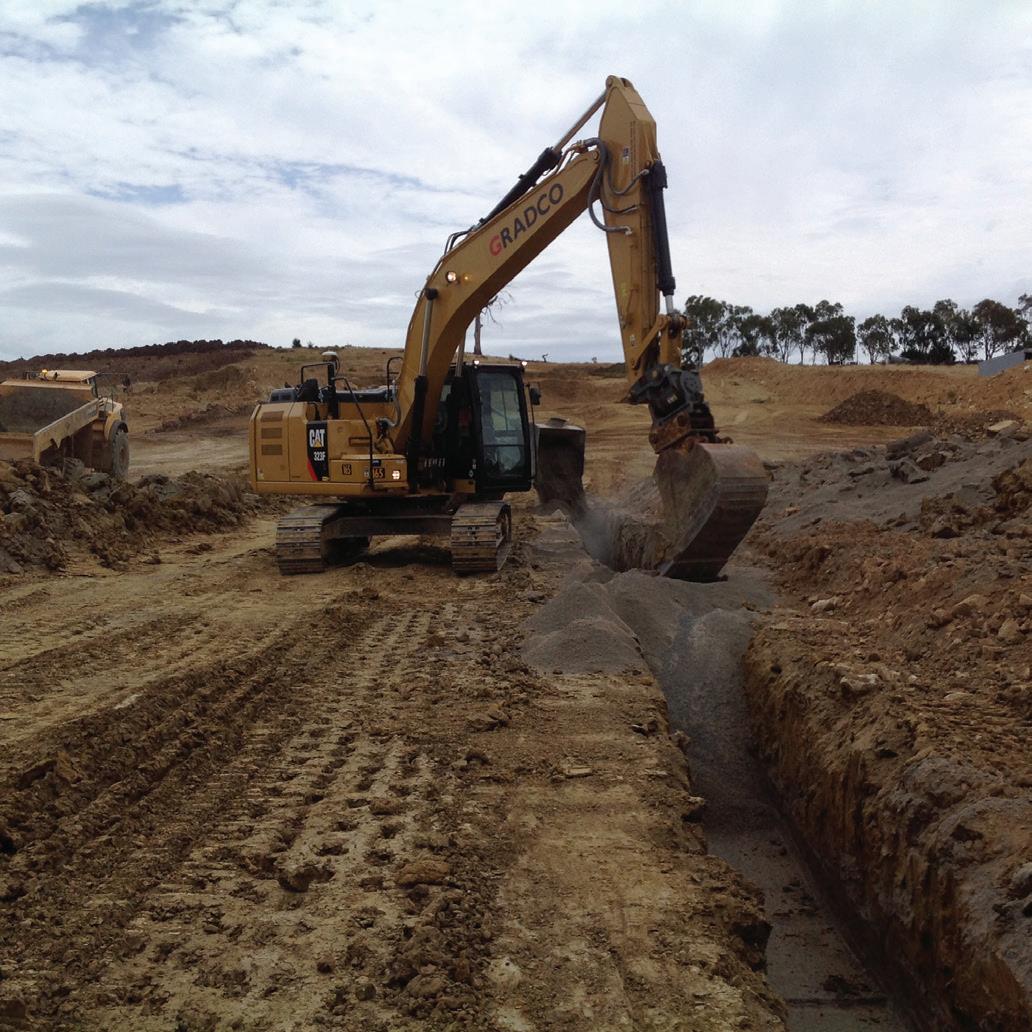
92 UTILITY • MAY 2018 WWW.UTILITYMAGAZINE.COM.AU IRRIGATION
The Southern Highlands Irrigation Scheme will deliver water to one of the driest areas of Tasmania and is vital in the diversification of agriculture and expansion into dairying, horticulture, viticulture and potential downstream processing.
The $31 million Southern Highlands Irrigation Scheme (SHIS) is one of five schemes which comprises Tasmanian Irrigation’s (TI) second suite of schemes known as ‘Tranche Two’, which commenced its first season of water deliveries on the 1 November 2017.
The SHIS is centered around the township of Bothwell in the state's southern highlands region, with a total irrigable area of 8000ha. The region is an important cropping and livestock finishing region and also one of the most drought prone areas of Tasmania.
This historic lack of a reliable water supply has prevented the region from reaching its full potential with water for irrigation purposes being historically limited, impacting on growth in the region.
SHIS Irrigator Committee Chair, Richard Hallett, said that the idea of bringing water from the Shannon River catchment into the broader Clyde River catchment has been discussed since the 1800’s but progress has been slow.
Twenty-three local farmers have contributed $8.66 million to the scheme with the rest of the funding coming from the Federal and State Governments.
“Partly as a result of the drought years of 1999/2000 and 2006, 2007 and 2008, it became a reality as farmers, along with the State and Federal Governments, finally got together to do something about the poor water security for the Southern Highlands region, a region which had so much to offer in productive farm land for cropping and livestock,” Mr Hallett said.
“This is one of the driest and formerly drought prone agricultural areas of Australia, but has some very fertile soils. By developing irrigation we have turned one of our risks/weaknesses (our dry conditions) into a strength, as high value crop production is very well suited to our dry climate and long warm summers. It has been a case of ‘just add water’.”
In 2008, the Emergency Shannon-Clyde Water Scheme was implemented by the Tasmanian Irrigation Development Board (TIDB) to provide a temporary water supply to the Clyde River catchment until the end of the 2008/09 irrigation season.
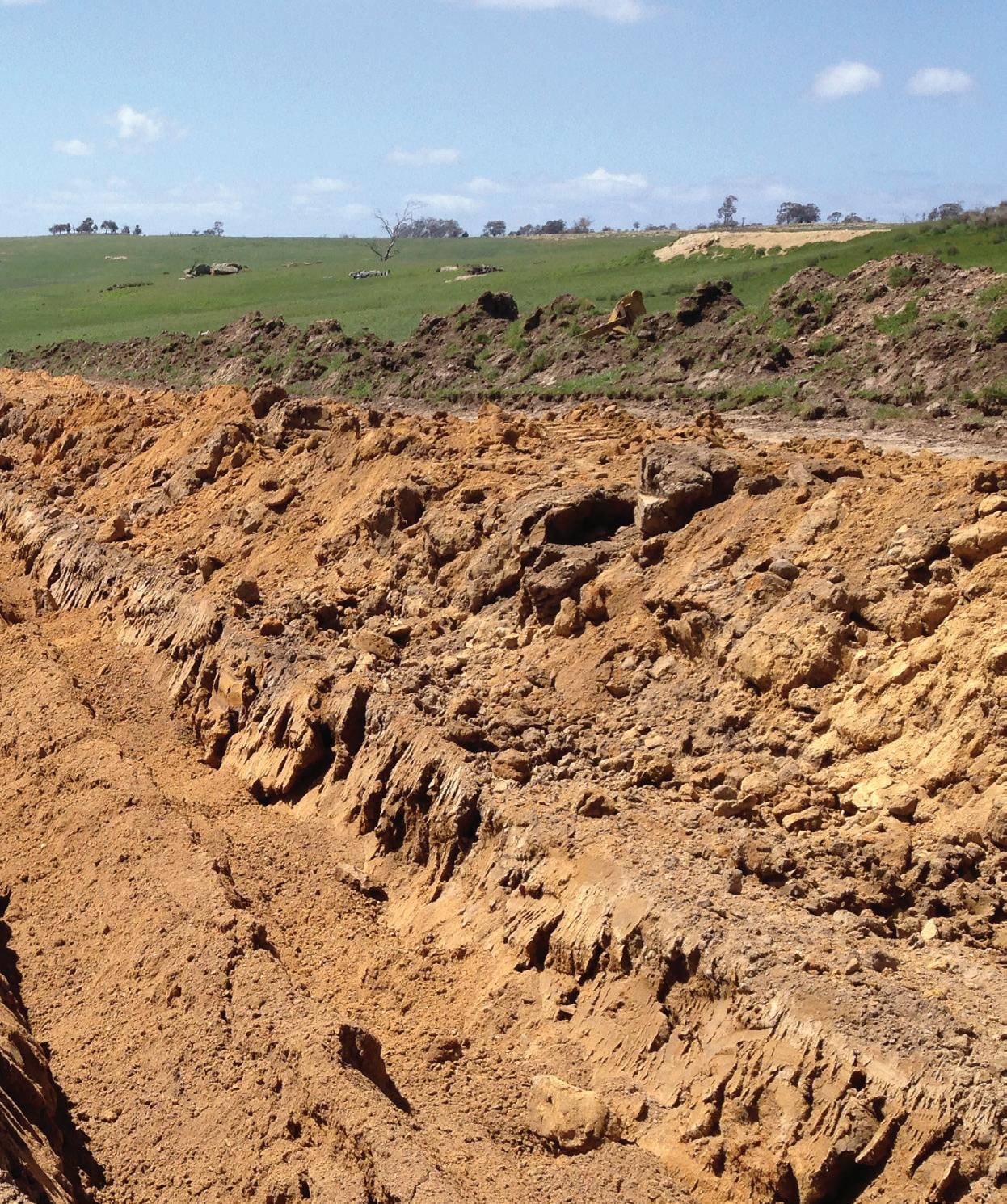
This prompted the TIDB to investigate a separate longer term scheme to supply additional irrigation water to the Clyde River catchment beyond the end of June 2009 as one of its portfolio of large-scale irrigation projects around the state.
MAKING THE LAND FIT FOR PRODUCTION
The objective of the SHIS is to harvest water from a catchment where there is plenty of winter flow, and deliver it to a neighboring region where it can be used for production.
“The water we harvest from the Shannon River would otherwise largely end up flowing out into the Derwent River (to sea). The basic principle here has been to build the infrastructure link between where there is plenty of water and connect it with the land,” Mr Hallett said.
The scheme will support farmers by providing a secure water supply to underpin high value crops and livestock production, and unlock tens of millions of dollars of on-farm investment in irrigation equipment and technologies. The scheme also doubles the area of irrigated land in the Southern Highlands region.
The SHIS has a total entitlement volume of 7215ML of high reliability irrigation water, which is harvested into the Southernfield Dam (approximately 17km northwest of Bothwell) from the Shannon River, and then delivered via approximately 58km of pipe running from Waddamana Road, south to Bothwell and on to Hollow Tree.
Winter flows from the Shannon River will be pumped up to the 7600ML Southernfield Dam, which is a zoned earth fill embankment, with a 500m long and 26m high wall.
The pump station is located south of Waddamana Road on the banks of the Shannon River, and is responsible for filling the dam and pumping water to the scheme. The 1MW pump station has been designed to maximise operational flexibility, with the ability to pump to the dam, the scheme or a combination of both at the same time.
In addition to the Shannon River Pump Station, the scheme also has two small booster pumps at Bothwell and Hollow Tree.
93 UTILITY • MAY 2018 WWW.UTILITYMAGAZINE.COM.AU IRRIGATION

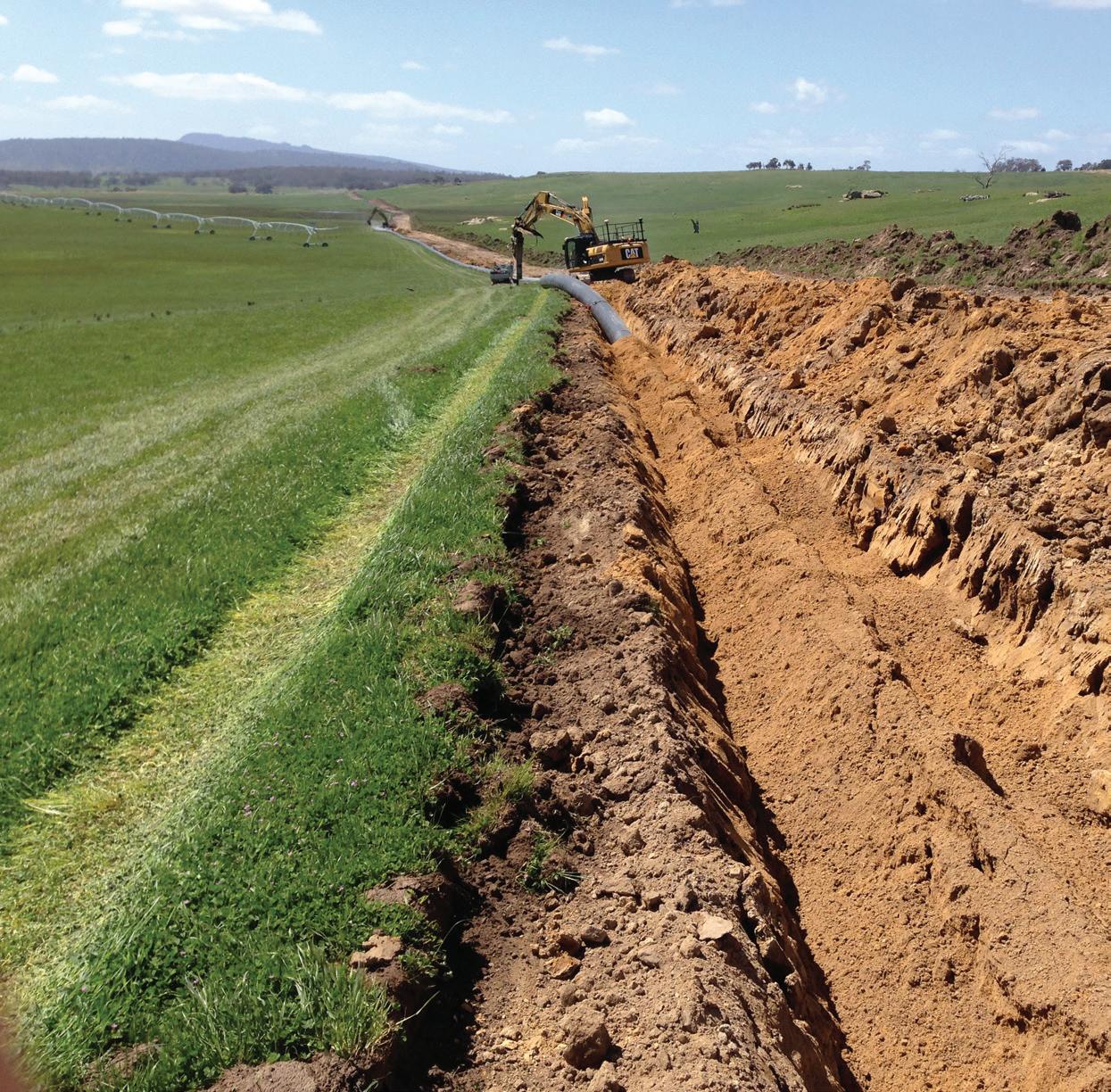
94 UTILITY • MAY 2018 WWW.UTILITYMAGAZINE.COM.AU
IRRIGATION
A secure water supply for Tasmania’s Southern Highlands
Mr Hallett said that the entire scheme uses poly pipe for water delivery.
“All on-farm pipe is either poly or PVC pipe, and most of the water is applied to paddocks using highly efficient centre pivot equipment. Many irrigators also use variable rate irrigation systems on their irrigators, which allows farmers to pinpoint application perfectly to different zones in their paddocks, based on soil type, slope, drainage, aspect, crop requirements and other factors.”
USING TECHNOLOGY TO CREATE SMART IRRIGATION SYSTEMS
Pharmaceutical poppy production is the main type of crop grown in the area but other crops include dual purpose cereal (wheat) production, grass and other seed crops, as well as intensive grazing enterprises such as red meat production.
Dairy production is also planned, with canola, linseed, hemp and other production a possibility. The region also has some potential in horticulture production in the future, for example cherries or grapes.
Farmers have been using all available technologies to design and implement their on-farm infrastructure. Technologies such as drones, grid mapping, crop imaging technologies and soil surveying have been essential in the preparation of their land and the management of their crops and irrigation.
Drones enable farmers to create detailed terrain, drainage, soil variability and irrigation maps. They can then use that data to pinpoint where on their farm the extra water will be most useful. Some farmers have set up on-farm wi-fi networks so they can control irrigators on the site via their mobile phone.
The use of technology and precision agricultural techniques is helping farmers to operate their land more efficiently and maximise their return on investment.
Mr Hallett said that irrigation design and use has come a long way over the last 20 or 30 years.
“The emphasis is now on creating smart irrigation systems where you have maximum efficiency and zero loss. The cost of this water is too high to be using in any other than a highly productive and efficient manner. So, it is a self governing factor.”
To date, the scheme has performed as expected during its first season.

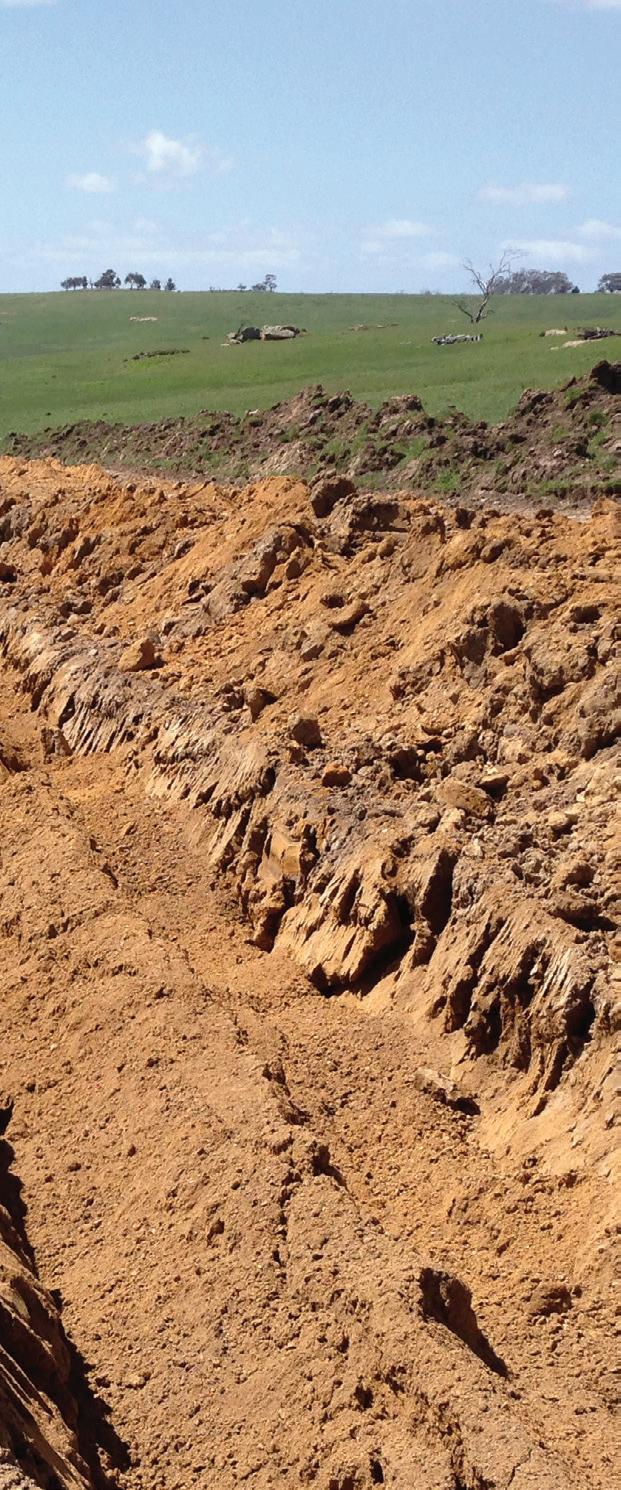








95 UTILITY • MAY 2018 WWW.UTILITYMAGAZINE.COM.AU IRRIGATION
Underground is a precision microtunnelling contractor that operates in Australia and the USA. With a
on innovative technology and expertise, Edge Underground designs
enhances the performance of trenchless equipment. OUR SERVICES • Microtunnelling • Pipe Jacking • Thrust Boring • Laser Tunnel Boring GUIDED BORING SPECIALISTS * stuart@edgeunderground.co 8 www.edgeunderground.co Find out more about keyhole pipeline installation www.keyholepipeline.com.au 0458 000 009 ( JACKED 1300 522533
ABOUT US Edge
focus
and
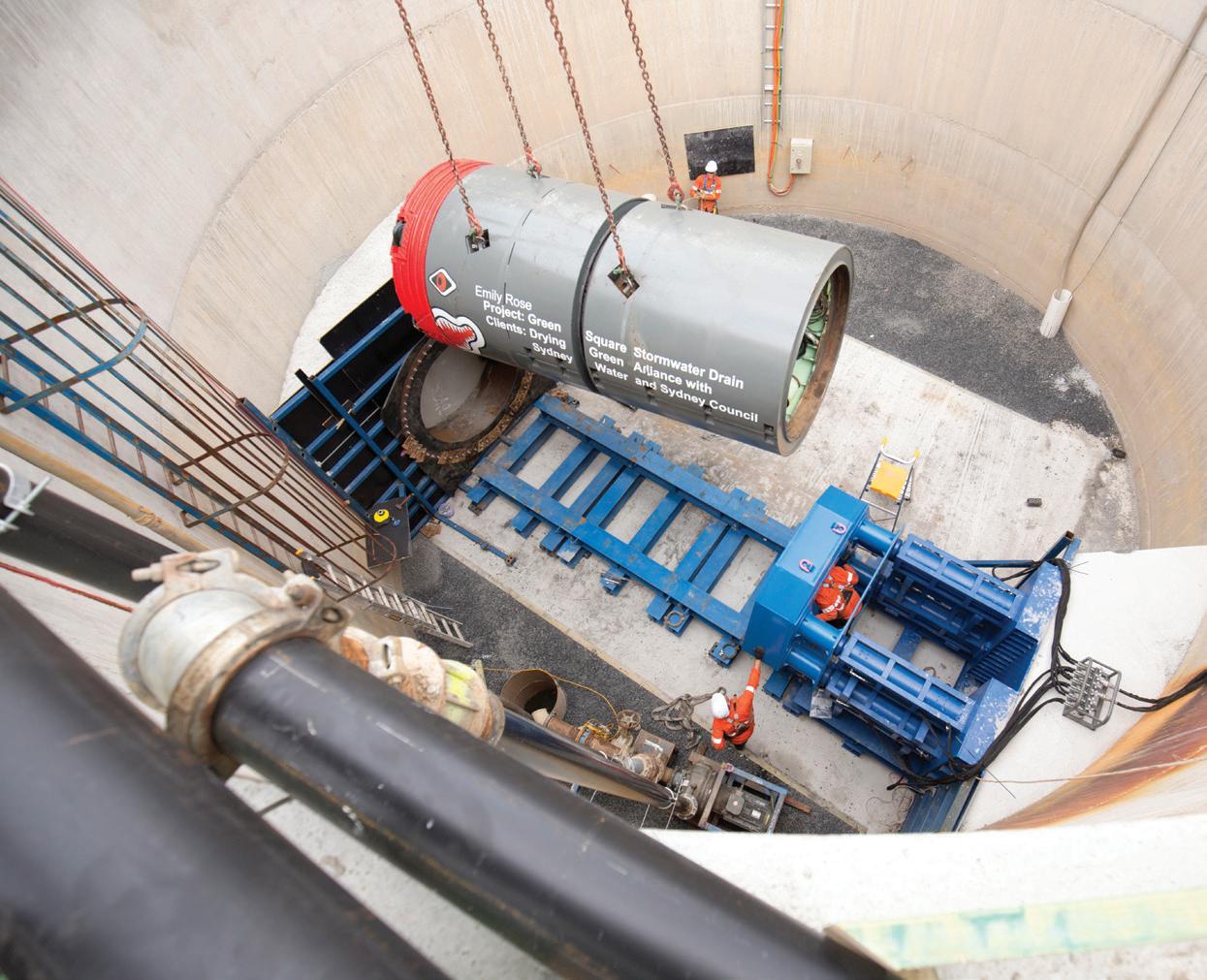
ROB CARR FINISHES STRONG ON ITS LARGEST PROJECT TO DATE
More than two years after mobilisation, microtunnelling specialist Rob Carr successfully overcame multiple hurdles and delivered their largest and longest running contract—the Microtunnelling & Civil Works subcontract for Green Square Stormwater Drain Project in metropolitan Sydney.
Green Square is one of the City of Sydney’s key urban renewal precincts, which is in the process of being transformed from old industrial land into a major new residential, retail and cultural hub. By 2030, the broader Green Square Urban Renewal Area is expected to accommodate approximately 61,000 residents and 22,000 workers.
The Green Square town centre is located on a floodplain known as the Waterloo Swamp, and the new two kilometre stormwater drain is needed to reduce hazardous flooding in and around the town centre and enable further development. The project is in its final stages, and being delivered by the Drying Green Alliance (comprising client partners Sydney Water and City of Sydney with UGL Engineering, Parsons Brinkerhoff, RPS Manidis Roberts and Seymour Whyte Constructions).
Rob Carr, as a related party entity to sister company Seymour Whyte Constructions, worked closely with the Alliance partners in 2014 during the Expression of Interest and Target Outturn Cost stages to submit a competitive bid for the project.
Rob Carr Construction Manager, Iain Lamb, said the company was heavily involved in the detailed design phase for both the stormwater pipelines and box culverts.
“The tender reference design primarily consisted of box culverts installed by open cut methods, which would have
required larger, more disruptive site footprints, multiple service diversions and major road closures with larger volumes of spoil and dewatering to dispose of,” Mr Lamb said.
“Our trenchless solution offered an alternative, value for money approach with significantly reduced environmental impact and comparatively minimal community disruptions.”
Following the successful tender process, the Drying Green Alliance was given preferred status in December 2014. The Alliance team mobilised the following month with the Project Alliance Agreement executed in mid-February 2015.
The Rob Carr team mobilised in April 2015 and by the time they completed the work in mid 2017, their scope of works had extended to include:
• Four kilometres of DN1800 microtunnelling using concrete jacking pipe
• Five caissons varying in diameter between 10–12m, and in depths up to 10m
• Eight other conventionally shored shafts up to 6m deep
• construction of a DN840 watermain and DN225 open trench sewer including several concrete manholes up to five metres deep
• Construction of permanent complex civil structures within each of the caissons supervision and management for all works within the microtunnelled sections of the project
UTILITY • MAY 2018 WWW.UTILITYMAGAZINE.COM.AU 96 Utility Partner Solutions MICROTUNNELLING
The project site was located on a floodplain and was once a network of swamps, wetlands and creeks, which caused Rob Carr’s biggest challenge over the contract duration, working in high water table ground that was classified as restricted and hazardous.
For 20 months, the Rob Carr team worked to install DN1800 concrete drainage pipeline via microtunnelling in twin and triple parallel formation over a 1.3km section through poor subsurface ground, which consisted of fill and loose wet sand.
Project Manager, Darren Madden, said that working in such difficult ground conditions required diligent planning and team commitment.
“Our team performed well under pressure. Whenever we came up against an unexpected challenge, our team would always come up with a Plan B to pull together and solve the issue.”
Mr Madden highlighted a recent incident where a tunnel boring machine (TBM) was blocked due to buried steel objects and could not proceed further.
“To complete the work, our team sank 7.3m shoring boxes down to six metres and drove sheet piles outside the shoring box panels to project downward between the new and existing previously tunnelled line,” Mr Madden said.
“This enabled the removal of the obstruction, which in this particular case was a section of steel plate buried in sand six metres deep. Following this, the TBM was retrieved and re-launched from the opposite end to complete the line.
“This was typical of the type of obstructions that were encountered along the alignment—there could be 200m of clean natural sand, then in one localised position a buried object would prevent the TBM from continuing. Unfortunately, this is impossible to predict even with the most detailed geotechnical information.”
To facilitate the trenchless pipeline installation, Rob Carr Pty Ltd self-performed the construction of five in situ concrete caissons between 10m and 12m in diameter in critical locations as well as eight other conventionally constructed shafts. This allowed for tunnelling equipment access and recovery, and enabled the team to construct other key complex drainage infrastructure.
With the range of multi-disciplinary work and extended scope of works that Rob Carr had to self-perform, Construction Manager, Iain Lamb, said the team increased to more than 50 employees at peak of construction.
“Our project team consisted of TBM operators, pit men, dogmen, general labourers, plant operators, trades such as carpenters, pipelayers, formworkers and boilermakers, supervisors and engineers,” Mr Lamb said.
ABOUT ROB CARR
“To ensure we had the right resources to carry out the works efficiently and safely, we invested time in recruiting quality new personnel to supplement our existing experienced team.”
Through good leadership on the ground by the experienced team members, Rob Carr was able to integrate the new members of the workforce while adhering to the highest safety and quality standards at all times.
Project Manager, Darren Madden, said that although time and production schedules were tough, safety remained the top priority for the team.
“Our team takes a proactive approach to safety, and we look to eliminate risk or engineer a solution to reduce risk. A recent example involved planning for the lifting of roof beams for a 6m x 6m cast in-situ pit, it was highlighted that it would introduce a working at heights risk for the person removing the chains after the lift,” Mr Madden said.
“Our Supervisor Damian Coward devised the solution of installing handrails on the precast beams prior to lifting them to eliminate the risk of working at heights.”
Rob Carr General Manager, Angelo Soumboulidis, described the Green Square Stormwater Drain Project as the company’s largest contract, and possibly its most challenging, to date.
“This project has showcased Rob Carr’s ability to step up and face challenges head-on to produce successful results. I commend every one of our project team—from workers to supervisors and managers—for their perseverance on this complex project,” Mr Soumboulidis said.
“The team had to contend with difficult ground conditions, brownfields sites full of buried man-made objects in the fill ground, time pressures and multiple constrained project sites, often next to live traffic or other works.
“Yet with all of this, the team never gave up and work was completed on budget and on time.”

Rob Carr is recognised as a leader in civil construction and tunnelling. Our specialist services include microtunnelling, detailed excavation and caisson construction, pipelines, pump station construction, complex concrete structures, mechanical and electrical works and rehabilitation. Rob Carr’s multi-disciplinary offering delivers efficiencies for clients who need a wide range of utilities services and turnkey solutions.
In October 2017, Rob Carr and the Seymour Whyte Group joined VINCI—a global player in concessions and construction that employs more than 183,000 people in some 100 countries. As part of VINCI, Rob Carr will have access to international expertise and innovations that will enhance our in-depth local knowledge.
SECTION 97 UTILITY • MAY 2018 WWW.UTILITYMAGAZINE.COM.AU MICROTUNNELLING Utility Partner Solutions
ROB CAR CONSTRUCTED THREE PARALLEL LINES, ONLY 800MM APART, IN A CURVED ALIGNMENT

Minimising disruptions and maximising ACCURACY WITH MICROTUNNELLING
In crowded urban areas, the installation of underground utilities can pose major disruption to the community and the surrounding environment. When considering environmental concerns and community impact, trenchless technologies such as microtunnelling can help mitigate concerns by minimising disruptions. It also benefits asset owners by reducing time costs and increasing accuracy.
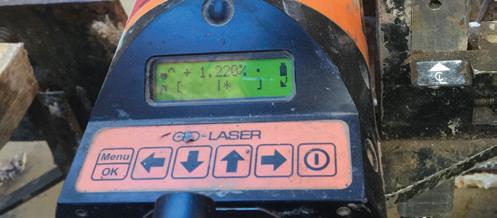
In the past, when considering the installation of underground utilities contractors didn’t have access to trenchless technologies, and therefore more disruptive methods of installation were used, such as open cut trenching. Microtunnelling now offers an alternative, sustainable solution for installing pipelines quickly, accurately and with minimal disruption.
CONSIDERING THE COMMUNITY
In high density areas it is now less acceptable to cause major disruption to communities such as through major traffic restrictions. Managing Director of Edge Underground, Stuart Harrison, said the impact on residents and businesses is always a concern when working with underground assets.
“Microtunnelling is a pit-launched technique with only an entry and exit pit required to be excavated for installation. This means destruction to surface infrastructure is limited, and road closures and community disruption are minimised,” Mr Harrison said.
“There’s a lot of potential damage to existing infrastructure or utilities by putting a new deep utility in. Microtunnelling allows installation through one small incision between the entry and exit pits, rather than having to tear the whole street open to do it, exposing already present underground infrastructure to the risk of damage.
“As there is minimal disruption, it’s more likely that projects will actually be able to commence, because the objections aren’t there. Especially since surface obstructions don’t present a problem.”
Furthermore, contractors with modular equipment, such as the AXIS boring system, can further reduce disruptions as the equipment layout can be adjusted to accommodate for job site considerations and operator preference.
A SUSTAINABLE SOLUTION
Microtunnelling also has a number of environmental benefits, including minimal disruption the ground. When working within existing infrastructure, excavating large amounts of earth can unstabilise ground pressure. As a result of the imbalance, existing infrastructure can move as the ground moves. Microtunnelling only pulls out what earth is needed and leaves the surrounding ground in harmony, reducing the risk of damaging underground assets.
“Excavation leaves a long-lasting effect on the earth that has been in place for millions and billions of years. When you dig deep trenches you are interfering with nature’s harmony. The least amount of excavation represents the least amount of impact to nature,” Mr Harrison said.
“Microtunnelling involves the excavation of an entry and exit pit, with the ground between these points left undisturbed throughout the installation process, greatly reducing the impact to the surrounding environment.
“This also reduces the additional costs incurred from open trench methods which requires extensive site restoration, which can include footpaths, roads and vegetation.
“Microtunnelling also reduces other environmental costs that are not as obvious but are just as important to consider, such as the reduction of fuel and energy resources.”
Using a machine such as the Vermeer AXIS has further environmental benefits with a reduction of carbon emissions.
An emissions study conducted by Dr Samuel T. Ariaratnam from Arizona State University compared the results of various trenchless methods, with the AXIS system conclusively presenting the least emissions.
A CASE FOR ACCURACY
While microtunnelling can mitigate these environmental and social disruptions, the AXIS system has been designed to do so without compromising on accuracy or productivity.
“The AXIS system uses a high end laser guidance system to position the target with live monitoring, allowing the operator to watch what is happening during the installation and make hydraulic steering corrections as needed. This means an accuracy of +/- 10mm is commonly achieved,” Mr Harrison said.
“Over the years I have worked with various microtunnelling equipment which might offer great benefits in one area, but at the expense of accuracy and productivity.
“AXIS doesn’t have this problem, it provides the benefits of being able to minimise disruptions while still being able to provide a high level of accuracy.”
Utility Partner Solutions MICROTUNNELLING




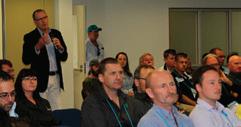


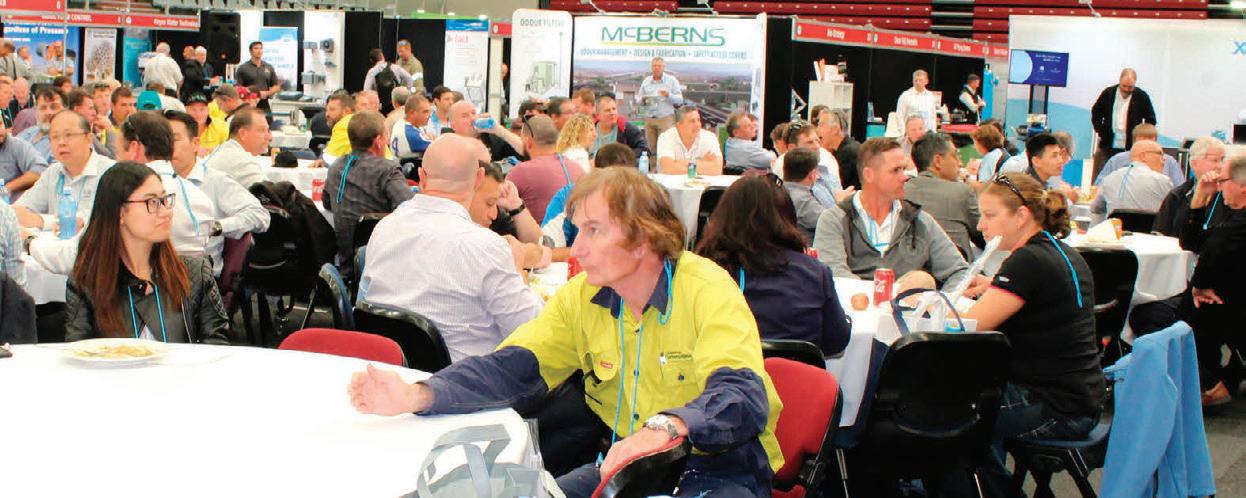





Promoting best practice in water management by building the knowledge, skills and networks of operators.
• Listen to the experience of others through the latest “operational” technical and research based information through platform and poster presentations.
• View and discuss the latest advances in technical equipment, products and services with suppliers and trade consultants.
• Update their knowledge and skills through interaction with fellow water industry employees.



Queensland Water
W wioaconferences.org.au E info@wioa.org.au P 03 5821 6744 REGISTER NOW
Join us at our 2018
Industry Operations Conference & Exhibition Logan Metro Sports Centre 6 & 7 June 2018
Sponsored by Supported by All industry personnel involved in the operation and maintenance of urban, rural and industrial water related infrastructure for the management, conveyance, treatment, discharge and reuse of water and trade wastes should attend this conference. The Water Industry Operators Association of Australia (WIOA) is a national association facilitating the collection, development and exchange of quality information between people undertaking operational roles in the water industry.
112 Exhibition Sites SOLD OUT
REGISTER TODAY FOR ENERGY NETWORKS 2018 – VISION CRITICAL
Energy Networks Australia’s biennial conference and exhibition is fast approaching. Don't miss your chance to connect with leading thinkers and technology innovators, service delivery and asset management experts, and policy and regulation professionals.
With the full program now launched, keen interest from across Australia and beyond is continuing to build for Energy Networks 2018. Energy Networks Australia is delighted to showcase cutting edge thinking, technology and solutions from right across the energy sector.
Energy Networks 2018 – Vision Critical will be held in Sydney at the International Convention Centre from Tuesday 5 to Thursday 7 June 2018. This is an exciting time to be involved in the energy sector. Energy networks are leading the transformation of the grid into a platform for new products and services that empower customers with new information, new tools and new ways to manage energy.
Energy Networks 2018, the only energy networks conference and exhibition in the Australian market developed by the industry for the industry, has unrivalled access to industry leaders. On day two of the conference, the Energy Networks 2018 Leaders’ Panel will take place. Paula Conboy (Australian Energy Regulator), Ed McManus (Meridian Energy and Powershop Australia), Paul Italiano (Transgrid), Richard Gross (Ausgrid) and Ben Wilson (Australian Gas Infrastructure Group) will explore the current energy landscape and provide their insights into the challenges and opportunities facing their organisations and the sector as a whole. Attendance at this session is a must for anyone wanting to understand how key industry leaders perceive Australia’s energy future.
Other plenary sessions will feature additional industry leaders from across the network sector including Nino Ficca (AusNet Services), Guy Chalkley (Western Power) and David Smales (Energy Queensland). NSW Energy
and Utilities Minister, Don Harwin, and Australian Environment and Energy Minister, Josh Frydenberg, will also address the conference.
Energy Networks Australia is delighted to welcome international plenary speakers from around the world, including Peter J Peacock, Chair Customer Forum for Water in Scotland; Blanca Losada, Chief Technology Officer, Gas Natural and Chief Executive Officer Gas, Natural Fenosa Engineering, Spain; and Susan Kennedy, Founder and CEO, Advanced Microgrid Solutions in the United States, along with a number of other esteemed leaders in the field.
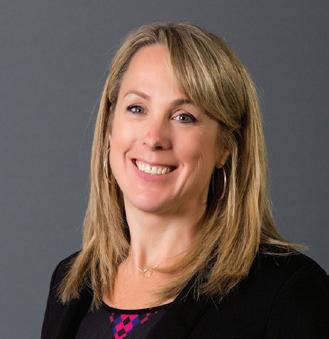
The concurrent program features more than 60 national and international experts who will discuss the key issues affecting Australia’s energy future. Speakers come from a range of energy sector businesses, leading service and technology providers and research organisations including Reposit Power, Landis+Gyr, Boston Consulting Group, CSIRO, Siemens, ABB, Flow Power and ARENA. Topics to be explored include customer engagement, asset management, energy network transformation, regulation and tariffs, microgrids, embedded generation and
metering, and grid intelligence.
Running alongside the concurrent program will be the Network Operations Forums. Designed for network business line managers and operational staff, they will consider the latest operational practices and technology in supporting the modern grid. Wednesday’s forum is titled ‘Internet of energy: data, security & network operations’, while Thursday’s will focus on the key topic of vegetation management.
The Meet the Industry breakfast will again be held in 2018, providing exhibitors and sponsors the opportunity to invite guests through the exhibition hall and to network with the sector. Exhibitors will also be welcome to participate in the conference sessions.
For more information on the conference program, visit www. energynetworks2018.com.au. With increased attendance in 2016, this biennial event is your opportunity to stay at the forefront of a sector in the midst of unprecedented change. Join the critical energy conversation and help identify solutions that will deliver value for consumers and network operators.
WHEN:
Tuesday 5 June to Thursday 7 June, 2018.
WHERE:
International Convention Centre, Sydney
REGISTER NOW
Registrations are open for Energy Networks 2018 – Vision Critical Visit www.energynetworks2018.com.au to download the program, register and view information on fees, accommodation and social functions.
UTILITY • MAY 2018 WWW.UTILITYMAGAZINE.COM.AU 100 EVENTS
PAULA CONBOY, CHAIR, AUSTRALIAN ENERGY REGULATOR
Don’t miss out on your chance to be a part of the only national Conference + Exhibition focused on the energy network sector organised by the industry for the industry and its supply chain partners.

UTILITY • MAY 2018 WWW.UTILITYMAGAZINE.COM.AU 101 EVENTS
www.energynetworks2018.com.au @EnergyNetwork18 REGISTER TODAY AT WWW.ENERGYNETWORKS2018.COM.AU Affiliated Partner Platinum Sponsor Gold Sponsor Gold Sponsor Silver Sponsor Digital Sponsor Concurrent Session Series Sponsor PROGRAM NOW AVAILABLE This is a prime opportunity for you to take your place in the transformation of the energy system.
MICROTUNNELLING
How to change the cutter head of the microtunnelling machine when there is a hard rock in between the drive length
It is not uncommon for microtunnelling contractors to arrive on site and find the ground conditions are different to the geotechnical information provided. This is problematic for most microtunnelling projects as most machines are not designed to allow easy access to the cutter head once an installation has started. So if you don’t have the right equipment and you encounter rock, project costs and time can increase.
Microtunnelling, as a trenchless installation method, by nature is non-man entry, so contractors do not have the ability to get up to the cutter head physically in order to change the tooling. This leaves two options: to dig up the cutter head to change it, or retract the cutter head before changing it. Which method you will be able to use will be determined by the machine you are using.
If we are to look at the microtunnelling machines on the market, we can divide them into two categories: those that do not allow the cutter head to be retracted and those that do.
Most mictrotunnelling machines available fall under the first type; they are designed to only go forwards so they do not allow the operator to retract the cutter head when it hits ground conditions it is not suited for. So if a contractor is in a situation where the ground condition suddenly changes to rock, the only option available is to dig a shaft down to the head in order to change it.
This has a number of drawbacks though. Firstly, it will increase project time and costs as there is a lot of extra labour needed just to change the cutter head. On top of the extra labour, there are additional restoration costs for the area that was dug up to retrieve the head. The fact of the matter is, if the contractor is expecting certain ground conditions and the machine unexpectedly hits rock, it’s almost guaranteed that they haven’t allowed for rock in the original project price.
Secondly, this defeats the purpose of choosing a trenchless
Global microtunnelling
is the
method of pipeline installation as you’re excavating additional ground. Depending on where the cutter head has stopped, these problems could be compounded, especially in urban areas which may pose increased challenges to being able to do this if it’s under a road, rail line or other existing infrastructure.
The alternative to excavating the cutter head out of the ground is to always allow for rock, but then clients will also be paying a premium for every job because the machine will be running rock tooling on every cutter. To do this is fairly expensive for the contractor so they will need to offload the cost to the client.
The second type of microtunnelling machine are those designed to retract. Machines, such as the Vermeer AXIS guided boring machine, have been designed to go both forwards and backwards. In the situation where the cutter head needs to be changed because of changed ground conditions, the operator can retract it back to the entry pit where it can be changed. Displacement machines also have this capability but they have their own range of issues.
The benefit of machines that can retract is that they allow the contractor to perform a pilot line before installing the pipe, so they can choose the best cutter configuration before committing to the final jack. This reduces the chance of a failed installation and saves time and money when the cutter head does need to be changed.

of
Underground, where he specialises in on-grade microtunnelling installations with millimetre accuracy. Stuart is also the inventor of the Vermeer AXIS Guided Boring system, and he is constantly working to improve the effectiveness of this and other trenchless systems used in the installation of gravity sewers. To discuss your next microtunnelling installation, contact Stuart on 1300 JACKED or at stuart@edgeunderground.co.
UTILITY • MAY 2018 WWW.UTILITYMAGAZINE.COM.AU 102
ABOUT STUART HARRISON
pioneer Stuart Harrison
Managing Director
Edge
Platinum Sponsor:
August 20 -23, 2018
Gold Coast Convention and Exhibition Centre
Queensland

Make History
Join fellow colleagues from several Oceania nations for the inaugural damage prevention industry conference to educate stakeholders on damage prevention and safe excavation. A showcase of best practice and international learnings for damage prevention efforts on underground assets and essential infrastructure.
Gold Sponsor: Founding Sponsors:
Supported by:

OceaniaDPC.com
•Plenary Sessions
•Networking Functions
Owned
&
Oceania Damage Prevention
Produced by:
•20+ 50 - minute Breakout Sessions
104 UTILITY • MAY 2018 WWW.UTILITYMAGAZINE.COM.AU Article title SECTION
2019 MAJOR FEATURES BIG DATA SOLAR DAMS SYDNEY WATER SPECIAL FOCUS MAPPING, GIS & SURVEYING UTILITY LOCATION SEWER REHABILITATION EMBEDDED NETWORKS DISTRIBUTED GENERATION EQUIPMENT & MACHINERY DRONES PUMPS, VALVES & FILTERS SWITCHGEAR MAJOR FEATURES WATER MANAGEMENT DEMAND MANAGEMENT ENERGY NETWORKS SPECIAL FOCUS INSPECTION, CCTV & CONDITION ASSESSMENT MOBILITY VEGETATION MANAGEMENT IRRIGATION EQUIPMENT & MACHINERY SMART METERS MICROTUNNELLING STORAGE Advertisers’ index SALES DEADLINE TBC FEBRUARY 2019 SALES DEADLINE 7 DECEMBER 2018 EVENT DISTRIBUTION TBC EVENT DISTRIBUTION ASSET MANAGEMENT FOR CRITICAL INFRASTRUCTURE OCEANIA DAMAGE PREVENTION (ODPC) ALL ENERGY WIOA BENDIGO EVENT DISTRIBUTION AUGUST 2018
2018 MAJOR FEATURES WATER OPERATIONS & TREATMENT STORMWATER ASSET MANAGEMENT SPECIAL FOCUS GAS PIPELINES TRENCHLESS TECHNOLOGY IoT AND SCADA DRAIN CLEANING DAMAGE PREVENTION WASTE MANAGEMENT EQUIPMENT & MACHINERY PIPE & CONDUIT CABLES EXCAVATION MAJOR FEATURES SMART GRIDS RETAIL, BILLING & CRM WIOA TASTE TEST WRAP CORROSION SPECIAL FOCUS LAND ACCESS TRANSFORMERS & SUBSTATIONS PIPELINE INTEGRITY LEAK DETECTION SAFETY EQUIPMENT & MACHINERY EQUIPMENT RENTAL HORIZONTAL DIRECTIONAL DRILLING (HDD) CABLE PLOUGHING SALES DEADLINE 22 JUNE 2018 SALES DEADLINE 21 SEPTEMBER 2018 WIOA NSW AUSTRALIAN UTILITY WEEK EVENT DISTRIBUTION AHD Trenchless 11 AMS Instrumentation & Calibration 12 BASF Australia 65 Bintech Systems 43 Cadia Group 71 Connectix 73 EA Technology 62-63 Edge Underground 95 EDMI Meters 64 Energy Networks Australia 101 Evoqua Water Technologies 27 Filtec 27 FiNAO 28–29 Greg Houston Plumbing 42 Innovyze 17 Interflow 49 Iplex Pipelines Australia 37, 47 Irrigation Australia International Conference.....................IBC Kwik-Zip 9 Lanco Group 57 Lutra 39 NHP Electrical Engineering Products 59 Oceania Damage Prevention Conference (ODPC) 103 Piping Specialty Supply Service 7 Power Safety Training 87 Projex Group 77 Rob Carr 96–97 Select Solutions 85 SUEZ 15 Taggle Systems 40 Thermo Fisher Scientific Australia 33 Total Drain Cleaning Services 2-3 Trility 13 VEGA Australia 53 Veolia Water 10 Verge Solutions 13 Vermeer IFC WIOA 99 Xylem 45 Zinfra OBC
EDITORIAL SCHEDULE MAY
NOVEMBER





DISCOVER what is POSSIBLE






CONNECT with INSPIRATION

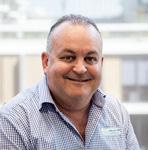

GAIN a competitive EDGE


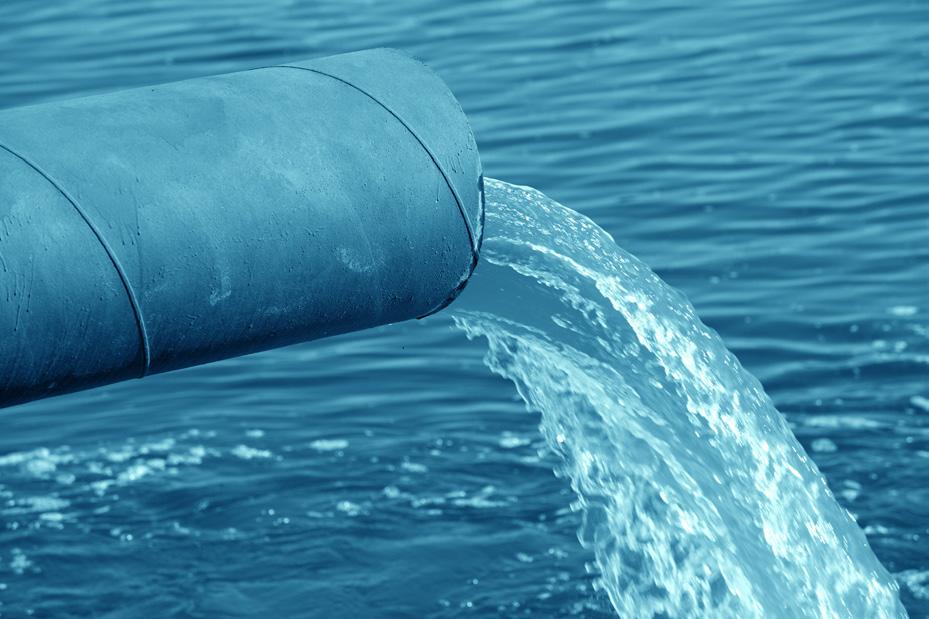



COME with a problem, LEAVE WITH A SOLUTION

ZINFRA. BUILDING REPUTATIONS
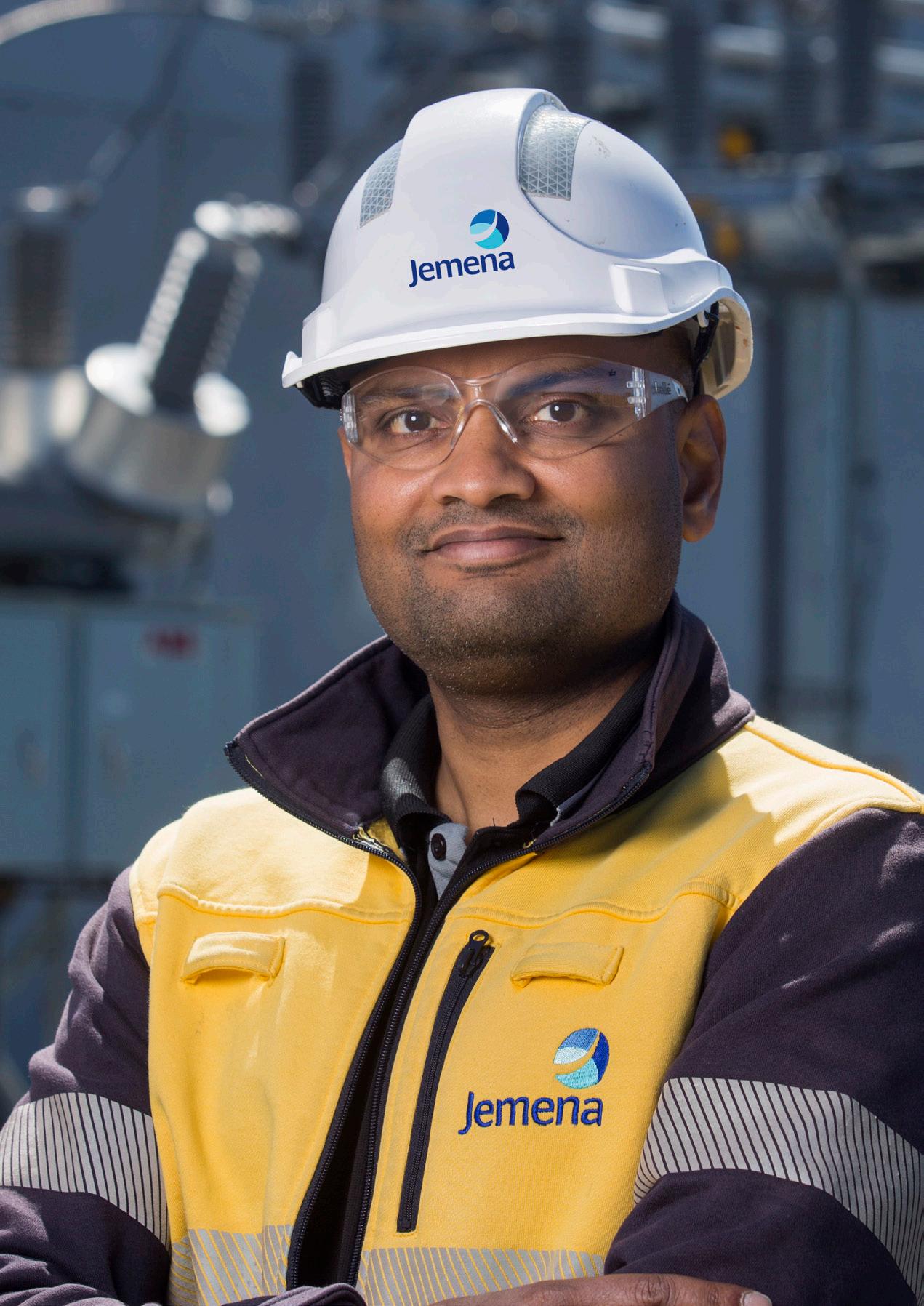 Sylvester de Almeida Project Manager - Jemena
Sylvester de Almeida Project Manager - Jemena
“Introducing new technology is always challenging and increases risk, so when we were appointing a service provider to design, build and commission the first two zone substations in the Jemena distribution network to use the new IEC61850 substation automation system, we had to get it right.
Affirming our decision, Zinfra successfully delivered the project, leveraging its extensive experience and expertise in zone substation projects, along with its highly capable skills in design, construction and commissioning.
Testament to the quality of the work, the project won the AIPM state Project Management Achievement Award (PMAA) for the Construction/Engineering category.”
www.zinfra.com.au
























































































































































 WANNON WATER'S BRANCH MANAGER ASSET PLANNING
WANNON WATER'S BRANCH MANAGER ASSET PLANNING



































































































































































































 Sylvester de Almeida Project Manager - Jemena
Sylvester de Almeida Project Manager - Jemena